Quick filters:
Late 1300s Stock Photos and Images
 Bowl with a Horseman Spearing a Serpent, late 1300s or early 1400s Stock Photohttps://www.alamy.com/image-license-details/?v=1https://www.alamy.com/stock-image-bowl-with-a-horseman-spearing-a-serpent-late-1300s-or-early-1400s-162559430.html
Bowl with a Horseman Spearing a Serpent, late 1300s or early 1400s Stock Photohttps://www.alamy.com/image-license-details/?v=1https://www.alamy.com/stock-image-bowl-with-a-horseman-spearing-a-serpent-late-1300s-or-early-1400s-162559430.htmlRMKCD65X–Bowl with a Horseman Spearing a Serpent, late 1300s or early 1400s
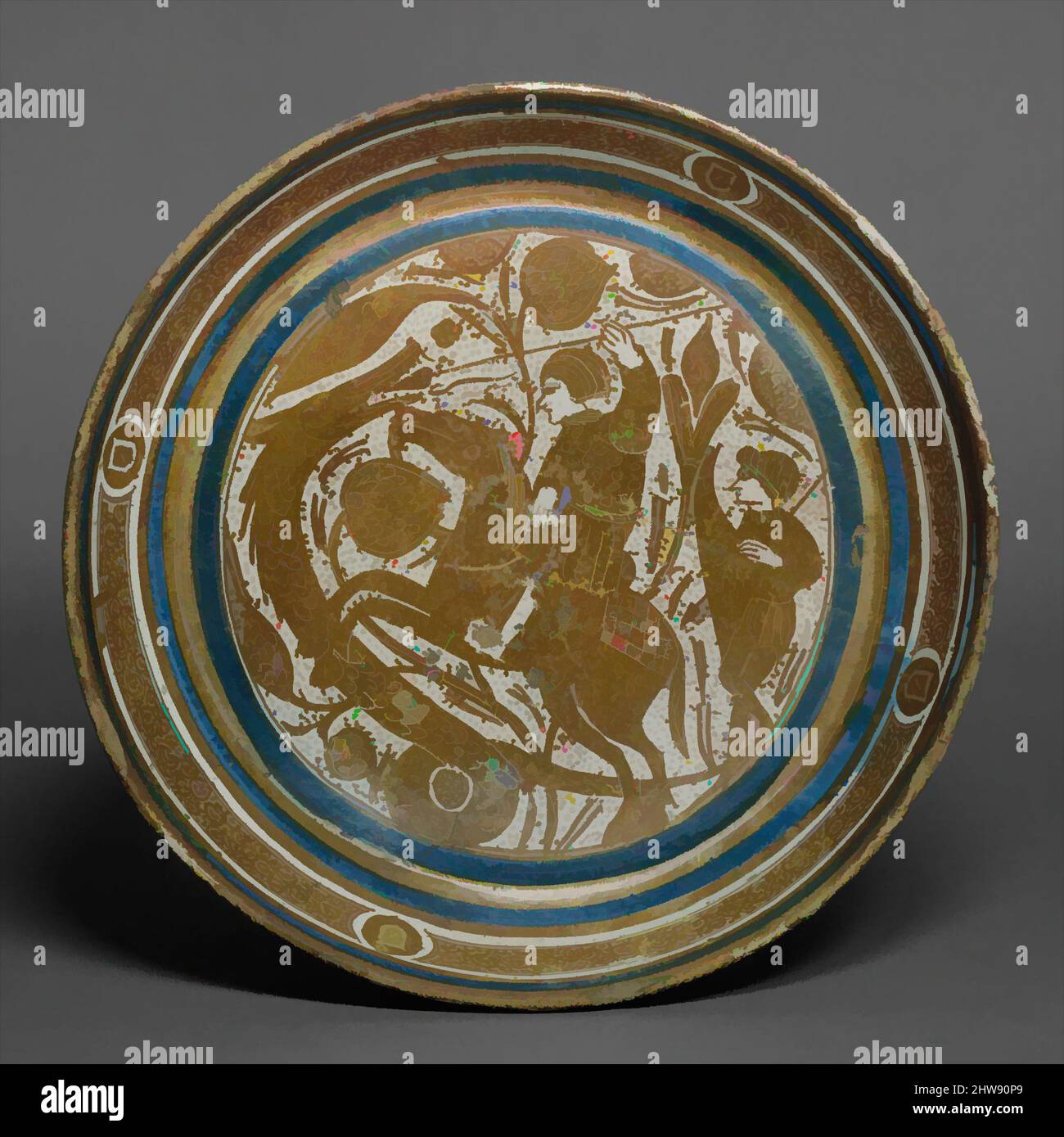 Art inspired by Bowl with a Horseman Spearing a Serpent, late 1300s or early 1400s, Made in probably Málaga, Spain, Spanish, Tin-glazed earthenware, Overall: 3 5/8 x diam. 17 5/16 in. (9.2 x diam. 44 cm), Ceramics, The city of Málaga in the Islamic kingdom of Granada was one of the, Classic works modernized by Artotop with a splash of modernity. Shapes, color and value, eye-catching visual impact on art. Emotions through freedom of artworks in a contemporary way. A timeless message pursuing a wildly creative new direction. Artists turning to the digital medium and creating the Artotop NFT Stock Photohttps://www.alamy.com/image-license-details/?v=1https://www.alamy.com/art-inspired-by-bowl-with-a-horseman-spearing-a-serpent-late-1300s-or-early-1400s-made-in-probably-mlaga-spain-spanish-tin-glazed-earthenware-overall-3-58-x-diam-17-516-in-92-x-diam-44-cm-ceramics-the-city-of-mlaga-in-the-islamic-kingdom-of-granada-was-one-of-the-classic-works-modernized-by-artotop-with-a-splash-of-modernity-shapes-color-and-value-eye-catching-visual-impact-on-art-emotions-through-freedom-of-artworks-in-a-contemporary-way-a-timeless-message-pursuing-a-wildly-creative-new-direction-artists-turning-to-the-digital-medium-and-creating-the-artotop-nft-image463034161.html
Art inspired by Bowl with a Horseman Spearing a Serpent, late 1300s or early 1400s, Made in probably Málaga, Spain, Spanish, Tin-glazed earthenware, Overall: 3 5/8 x diam. 17 5/16 in. (9.2 x diam. 44 cm), Ceramics, The city of Málaga in the Islamic kingdom of Granada was one of the, Classic works modernized by Artotop with a splash of modernity. Shapes, color and value, eye-catching visual impact on art. Emotions through freedom of artworks in a contemporary way. A timeless message pursuing a wildly creative new direction. Artists turning to the digital medium and creating the Artotop NFT Stock Photohttps://www.alamy.com/image-license-details/?v=1https://www.alamy.com/art-inspired-by-bowl-with-a-horseman-spearing-a-serpent-late-1300s-or-early-1400s-made-in-probably-mlaga-spain-spanish-tin-glazed-earthenware-overall-3-58-x-diam-17-516-in-92-x-diam-44-cm-ceramics-the-city-of-mlaga-in-the-islamic-kingdom-of-granada-was-one-of-the-classic-works-modernized-by-artotop-with-a-splash-of-modernity-shapes-color-and-value-eye-catching-visual-impact-on-art-emotions-through-freedom-of-artworks-in-a-contemporary-way-a-timeless-message-pursuing-a-wildly-creative-new-direction-artists-turning-to-the-digital-medium-and-creating-the-artotop-nft-image463034161.htmlRF2HW90P9–Art inspired by Bowl with a Horseman Spearing a Serpent, late 1300s or early 1400s, Made in probably Málaga, Spain, Spanish, Tin-glazed earthenware, Overall: 3 5/8 x diam. 17 5/16 in. (9.2 x diam. 44 cm), Ceramics, The city of Málaga in the Islamic kingdom of Granada was one of the, Classic works modernized by Artotop with a splash of modernity. Shapes, color and value, eye-catching visual impact on art. Emotions through freedom of artworks in a contemporary way. A timeless message pursuing a wildly creative new direction. Artists turning to the digital medium and creating the Artotop NFT
 Jug, late 1300s or early 1400s, Made in Siegburg, Lower Rhineland, Germany, German, Partially salt-glazed stoneware, Overall: 9 Stock Photohttps://www.alamy.com/image-license-details/?v=1https://www.alamy.com/stock-image-jug-late-1300s-or-early-1400s-made-in-siegburg-lower-rhineland-germany-162579511.html
Jug, late 1300s or early 1400s, Made in Siegburg, Lower Rhineland, Germany, German, Partially salt-glazed stoneware, Overall: 9 Stock Photohttps://www.alamy.com/image-license-details/?v=1https://www.alamy.com/stock-image-jug-late-1300s-or-early-1400s-made-in-siegburg-lower-rhineland-germany-162579511.htmlRMKCE3R3–Jug, late 1300s or early 1400s, Made in Siegburg, Lower Rhineland, Germany, German, Partially salt-glazed stoneware, Overall: 9
 Art inspired by Jug, late 1300s or early 1400s, Made in Siegburg, Lower Rhineland, Germany, German, Partially salt-glazed stoneware, Overall: 9 1/8 x 5 1/2 x 4 3/4 in. (23.1 x 13.9 x 12.1 cm), Ceramics-Pottery, Stoneware, a specialty of medieval German potters, is a hard, nonporous, Classic works modernized by Artotop with a splash of modernity. Shapes, color and value, eye-catching visual impact on art. Emotions through freedom of artworks in a contemporary way. A timeless message pursuing a wildly creative new direction. Artists turning to the digital medium and creating the Artotop NFT Stock Photohttps://www.alamy.com/image-license-details/?v=1https://www.alamy.com/art-inspired-by-jug-late-1300s-or-early-1400s-made-in-siegburg-lower-rhineland-germany-german-partially-salt-glazed-stoneware-overall-9-18-x-5-12-x-4-34-in-231-x-139-x-121-cm-ceramics-pottery-stoneware-a-specialty-of-medieval-german-potters-is-a-hard-nonporous-classic-works-modernized-by-artotop-with-a-splash-of-modernity-shapes-color-and-value-eye-catching-visual-impact-on-art-emotions-through-freedom-of-artworks-in-a-contemporary-way-a-timeless-message-pursuing-a-wildly-creative-new-direction-artists-turning-to-the-digital-medium-and-creating-the-artotop-nft-image462834251.html
Art inspired by Jug, late 1300s or early 1400s, Made in Siegburg, Lower Rhineland, Germany, German, Partially salt-glazed stoneware, Overall: 9 1/8 x 5 1/2 x 4 3/4 in. (23.1 x 13.9 x 12.1 cm), Ceramics-Pottery, Stoneware, a specialty of medieval German potters, is a hard, nonporous, Classic works modernized by Artotop with a splash of modernity. Shapes, color and value, eye-catching visual impact on art. Emotions through freedom of artworks in a contemporary way. A timeless message pursuing a wildly creative new direction. Artists turning to the digital medium and creating the Artotop NFT Stock Photohttps://www.alamy.com/image-license-details/?v=1https://www.alamy.com/art-inspired-by-jug-late-1300s-or-early-1400s-made-in-siegburg-lower-rhineland-germany-german-partially-salt-glazed-stoneware-overall-9-18-x-5-12-x-4-34-in-231-x-139-x-121-cm-ceramics-pottery-stoneware-a-specialty-of-medieval-german-potters-is-a-hard-nonporous-classic-works-modernized-by-artotop-with-a-splash-of-modernity-shapes-color-and-value-eye-catching-visual-impact-on-art-emotions-through-freedom-of-artworks-in-a-contemporary-way-a-timeless-message-pursuing-a-wildly-creative-new-direction-artists-turning-to-the-digital-medium-and-creating-the-artotop-nft-image462834251.htmlRF2HTYWPK–Art inspired by Jug, late 1300s or early 1400s, Made in Siegburg, Lower Rhineland, Germany, German, Partially salt-glazed stoneware, Overall: 9 1/8 x 5 1/2 x 4 3/4 in. (23.1 x 13.9 x 12.1 cm), Ceramics-Pottery, Stoneware, a specialty of medieval German potters, is a hard, nonporous, Classic works modernized by Artotop with a splash of modernity. Shapes, color and value, eye-catching visual impact on art. Emotions through freedom of artworks in a contemporary way. A timeless message pursuing a wildly creative new direction. Artists turning to the digital medium and creating the Artotop NFT
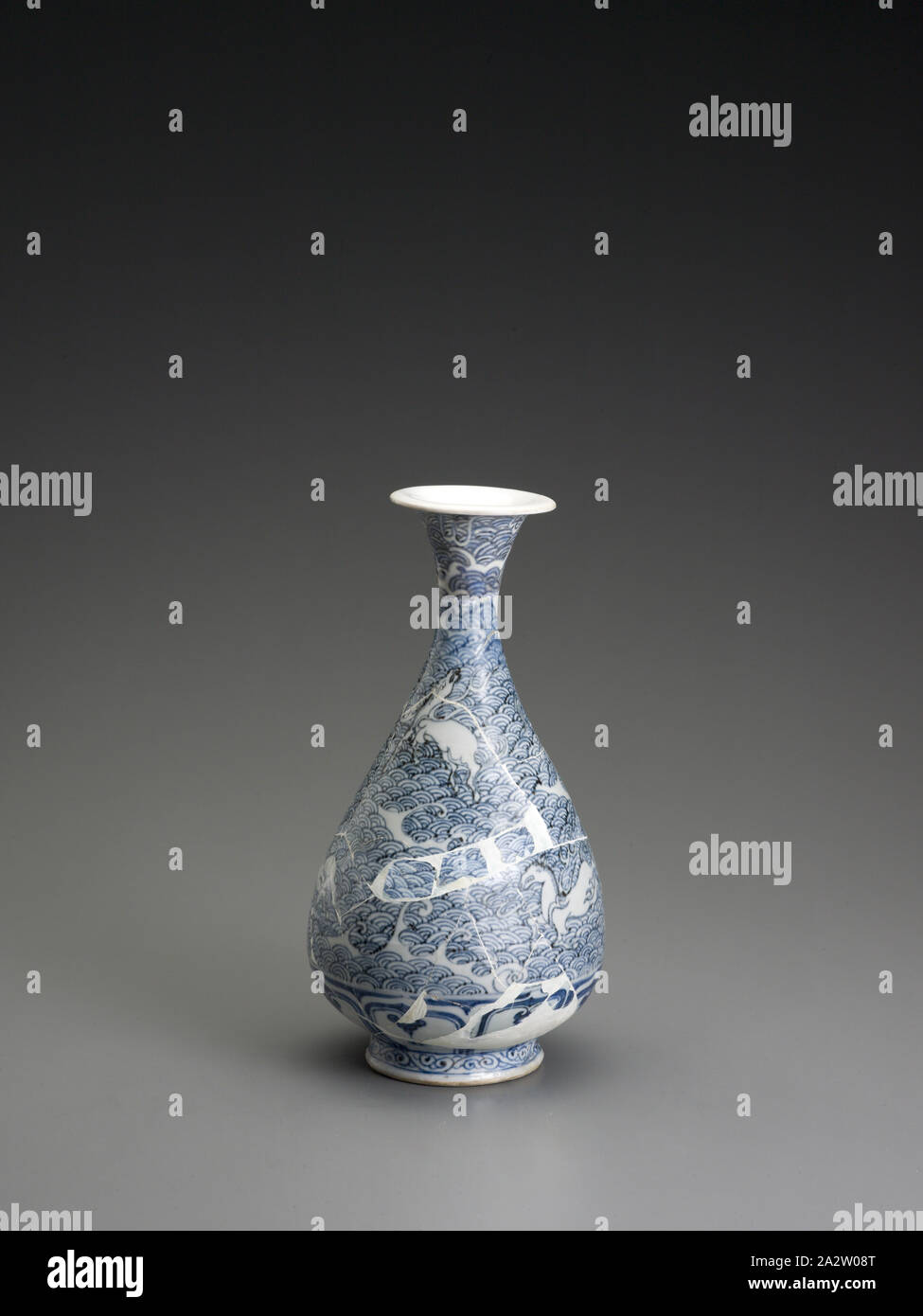 vase with horses on water design, Yuan dynasty, Yuan dynasty, late 1300s, porcelain with underglaze blue, H: 11-5/8 in., 29.5 cm., Asian Art Stock Photohttps://www.alamy.com/image-license-details/?v=1https://www.alamy.com/vase-with-horses-on-water-design-yuan-dynasty-yuan-dynasty-late-1300s-porcelain-with-underglaze-blue-h-11-58-in-295-cm-asian-art-image328775352.html
vase with horses on water design, Yuan dynasty, Yuan dynasty, late 1300s, porcelain with underglaze blue, H: 11-5/8 in., 29.5 cm., Asian Art Stock Photohttps://www.alamy.com/image-license-details/?v=1https://www.alamy.com/vase-with-horses-on-water-design-yuan-dynasty-yuan-dynasty-late-1300s-porcelain-with-underglaze-blue-h-11-58-in-295-cm-asian-art-image328775352.htmlRM2A2W08T–vase with horses on water design, Yuan dynasty, Yuan dynasty, late 1300s, porcelain with underglaze blue, H: 11-5/8 in., 29.5 cm., Asian Art
 Engraving of the high street of Oxford in the late 1300s Stock Photohttps://www.alamy.com/image-license-details/?v=1https://www.alamy.com/engraving-of-the-high-street-of-oxford-in-the-late-1300s-image451264117.html
Engraving of the high street of Oxford in the late 1300s Stock Photohttps://www.alamy.com/image-license-details/?v=1https://www.alamy.com/engraving-of-the-high-street-of-oxford-in-the-late-1300s-image451264117.htmlRM2H64RYH–Engraving of the high street of Oxford in the late 1300s
 The Annunciation late 1300s - early 1400s. 1135 Spinello Aretino - Annunciation Stock Photohttps://www.alamy.com/image-license-details/?v=1https://www.alamy.com/the-annunciation-late-1300s-early-1400s-1135-spinello-aretino-annunciation-image185734249.html
The Annunciation late 1300s - early 1400s. 1135 Spinello Aretino - Annunciation Stock Photohttps://www.alamy.com/image-license-details/?v=1https://www.alamy.com/the-annunciation-late-1300s-early-1400s-1135-spinello-aretino-annunciation-image185734249.htmlRMMP4WX1–The Annunciation late 1300s - early 1400s. 1135 Spinello Aretino - Annunciation
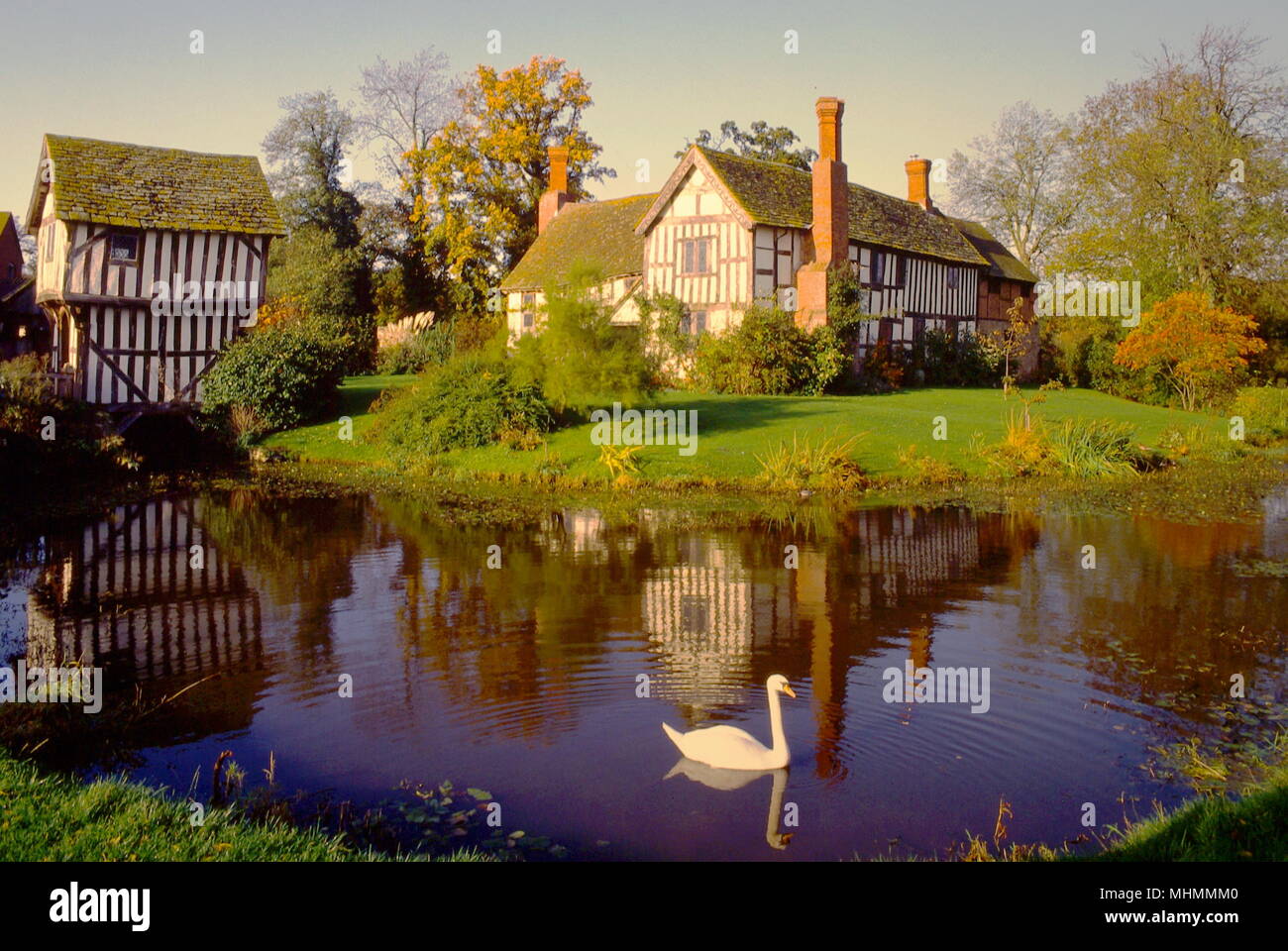 A view of Lower Brockhampton Manor House on the Herefordshire-Worcestershire borders. The timber-framed house dates back to the late 1300s. It is surrounded by a moat and is entered via a timber-framed gatehouse. Stock Photohttps://www.alamy.com/image-license-details/?v=1https://www.alamy.com/a-view-of-lower-brockhampton-manor-house-on-the-herefordshire-worcestershire-borders-the-timber-framed-house-dates-back-to-the-late-1300s-it-is-surrounded-by-a-moat-and-is-entered-via-a-timber-framed-gatehouse-image183008112.html
A view of Lower Brockhampton Manor House on the Herefordshire-Worcestershire borders. The timber-framed house dates back to the late 1300s. It is surrounded by a moat and is entered via a timber-framed gatehouse. Stock Photohttps://www.alamy.com/image-license-details/?v=1https://www.alamy.com/a-view-of-lower-brockhampton-manor-house-on-the-herefordshire-worcestershire-borders-the-timber-framed-house-dates-back-to-the-late-1300s-it-is-surrounded-by-a-moat-and-is-entered-via-a-timber-framed-gatehouse-image183008112.htmlRMMHMMM0–A view of Lower Brockhampton Manor House on the Herefordshire-Worcestershire borders. The timber-framed house dates back to the late 1300s. It is surrounded by a moat and is entered via a timber-framed gatehouse.
 Jug. Culture: German. Dimensions: Overall: 9 1/8 x 5 1/2 x 4 3/4 in. (23.1 x 13.9 x 12.1 cm). Date: late 1300s or early 1400s. Stoneware, a specialty of medieval German potters, is a hard, nonporous ceramic. As it is both strong and impervious to liquids, it was ideally suited for domestic purposes. Museum: Metropolitan Museum of Art, New York, USA. Stock Photohttps://www.alamy.com/image-license-details/?v=1https://www.alamy.com/jug-culture-german-dimensions-overall-9-18-x-5-12-x-4-34-in-231-x-139-x-121-cm-date-late-1300s-or-early-1400s-stoneware-a-specialty-of-medieval-german-potters-is-a-hard-nonporous-ceramic-as-it-is-both-strong-and-impervious-to-liquids-it-was-ideally-suited-for-domestic-purposes-museum-metropolitan-museum-of-art-new-york-usa-image212911813.html
Jug. Culture: German. Dimensions: Overall: 9 1/8 x 5 1/2 x 4 3/4 in. (23.1 x 13.9 x 12.1 cm). Date: late 1300s or early 1400s. Stoneware, a specialty of medieval German potters, is a hard, nonporous ceramic. As it is both strong and impervious to liquids, it was ideally suited for domestic purposes. Museum: Metropolitan Museum of Art, New York, USA. Stock Photohttps://www.alamy.com/image-license-details/?v=1https://www.alamy.com/jug-culture-german-dimensions-overall-9-18-x-5-12-x-4-34-in-231-x-139-x-121-cm-date-late-1300s-or-early-1400s-stoneware-a-specialty-of-medieval-german-potters-is-a-hard-nonporous-ceramic-as-it-is-both-strong-and-impervious-to-liquids-it-was-ideally-suited-for-domestic-purposes-museum-metropolitan-museum-of-art-new-york-usa-image212911813.htmlRMPAAY59–Jug. Culture: German. Dimensions: Overall: 9 1/8 x 5 1/2 x 4 3/4 in. (23.1 x 13.9 x 12.1 cm). Date: late 1300s or early 1400s. Stoneware, a specialty of medieval German potters, is a hard, nonporous ceramic. As it is both strong and impervious to liquids, it was ideally suited for domestic purposes. Museum: Metropolitan Museum of Art, New York, USA.
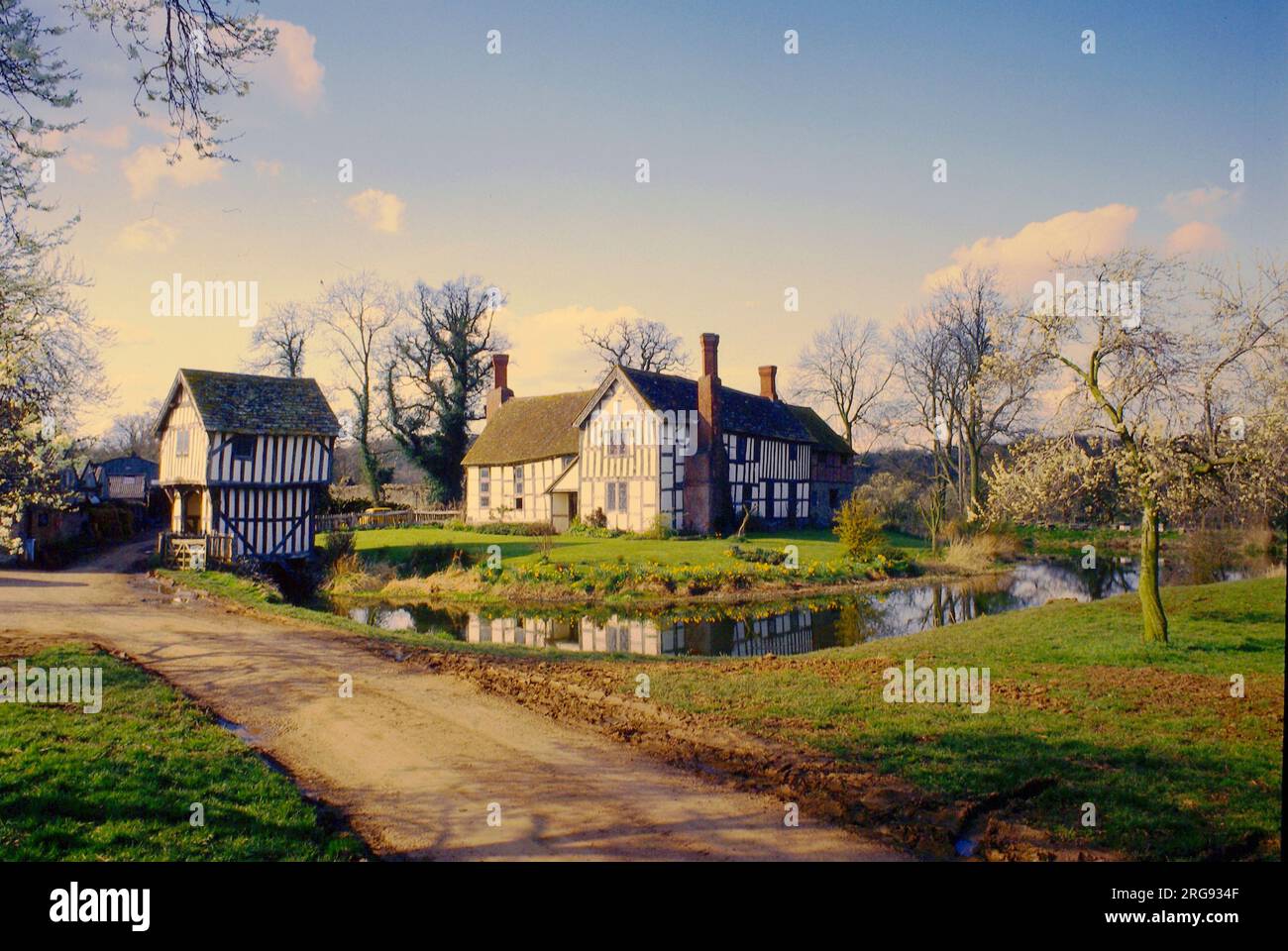 A view of Lower Brockhampton Manor House on the Herefordshire-Worcestershire borders. The timber-framed house dates back to the late 1300s. It is surrounded by a moat and is entered via a timber-framed gatehouse. Stock Photohttps://www.alamy.com/image-license-details/?v=1https://www.alamy.com/a-view-of-lower-brockhampton-manor-house-on-the-herefordshire-worcestershire-borders-the-timber-framed-house-dates-back-to-the-late-1300s-it-is-surrounded-by-a-moat-and-is-entered-via-a-timber-framed-gatehouse-image560766319.html
A view of Lower Brockhampton Manor House on the Herefordshire-Worcestershire borders. The timber-framed house dates back to the late 1300s. It is surrounded by a moat and is entered via a timber-framed gatehouse. Stock Photohttps://www.alamy.com/image-license-details/?v=1https://www.alamy.com/a-view-of-lower-brockhampton-manor-house-on-the-herefordshire-worcestershire-borders-the-timber-framed-house-dates-back-to-the-late-1300s-it-is-surrounded-by-a-moat-and-is-entered-via-a-timber-framed-gatehouse-image560766319.htmlRM2RG934F–A view of Lower Brockhampton Manor House on the Herefordshire-Worcestershire borders. The timber-framed house dates back to the late 1300s. It is surrounded by a moat and is entered via a timber-framed gatehouse.
 Bust Reliquary of St. Louis, Bishop of Toulouse, late 1300s. This reliquary bust was probably made to house a relic of Saint Louis, Bishop of Toulouse (1274-97), second son of Charles II of Anjou, King of Naples (1288-1309). Renowned for his works of charity, he was made bishop in 1297 and died shortly after at the age of 23. He was canonized in 1317, and his cult of veneration spread rapidly in Italy and Spain. In art, Louis is generally represented as a "boy" bishop without a beard and with youthful features. The relic (now lost) would have been enshrined within. On feast days the Stock Photohttps://www.alamy.com/image-license-details/?v=1https://www.alamy.com/bust-reliquary-of-st-louis-bishop-of-toulouse-late-1300s-this-reliquary-bust-was-probably-made-to-house-a-relic-of-saint-louis-bishop-of-toulouse-1274-97-second-son-of-charles-ii-of-anjou-king-of-naples-1288-1309-renowned-for-his-works-of-charity-he-was-made-bishop-in-1297-and-died-shortly-after-at-the-age-of-23-he-was-canonized-in-1317-and-his-cult-of-veneration-spread-rapidly-in-italy-and-spain-in-art-louis-is-generally-represented-as-a-quotboyquot-bishop-without-a-beard-and-with-youthful-features-the-relic-now-lost-would-have-been-enshrined-within-on-feast-days-the-image330136780.html
Bust Reliquary of St. Louis, Bishop of Toulouse, late 1300s. This reliquary bust was probably made to house a relic of Saint Louis, Bishop of Toulouse (1274-97), second son of Charles II of Anjou, King of Naples (1288-1309). Renowned for his works of charity, he was made bishop in 1297 and died shortly after at the age of 23. He was canonized in 1317, and his cult of veneration spread rapidly in Italy and Spain. In art, Louis is generally represented as a "boy" bishop without a beard and with youthful features. The relic (now lost) would have been enshrined within. On feast days the Stock Photohttps://www.alamy.com/image-license-details/?v=1https://www.alamy.com/bust-reliquary-of-st-louis-bishop-of-toulouse-late-1300s-this-reliquary-bust-was-probably-made-to-house-a-relic-of-saint-louis-bishop-of-toulouse-1274-97-second-son-of-charles-ii-of-anjou-king-of-naples-1288-1309-renowned-for-his-works-of-charity-he-was-made-bishop-in-1297-and-died-shortly-after-at-the-age-of-23-he-was-canonized-in-1317-and-his-cult-of-veneration-spread-rapidly-in-italy-and-spain-in-art-louis-is-generally-represented-as-a-quotboyquot-bishop-without-a-beard-and-with-youthful-features-the-relic-now-lost-would-have-been-enshrined-within-on-feast-days-the-image330136780.htmlRM2A530R8–Bust Reliquary of St. Louis, Bishop of Toulouse, late 1300s. This reliquary bust was probably made to house a relic of Saint Louis, Bishop of Toulouse (1274-97), second son of Charles II of Anjou, King of Naples (1288-1309). Renowned for his works of charity, he was made bishop in 1297 and died shortly after at the age of 23. He was canonized in 1317, and his cult of veneration spread rapidly in Italy and Spain. In art, Louis is generally represented as a "boy" bishop without a beard and with youthful features. The relic (now lost) would have been enshrined within. On feast days the
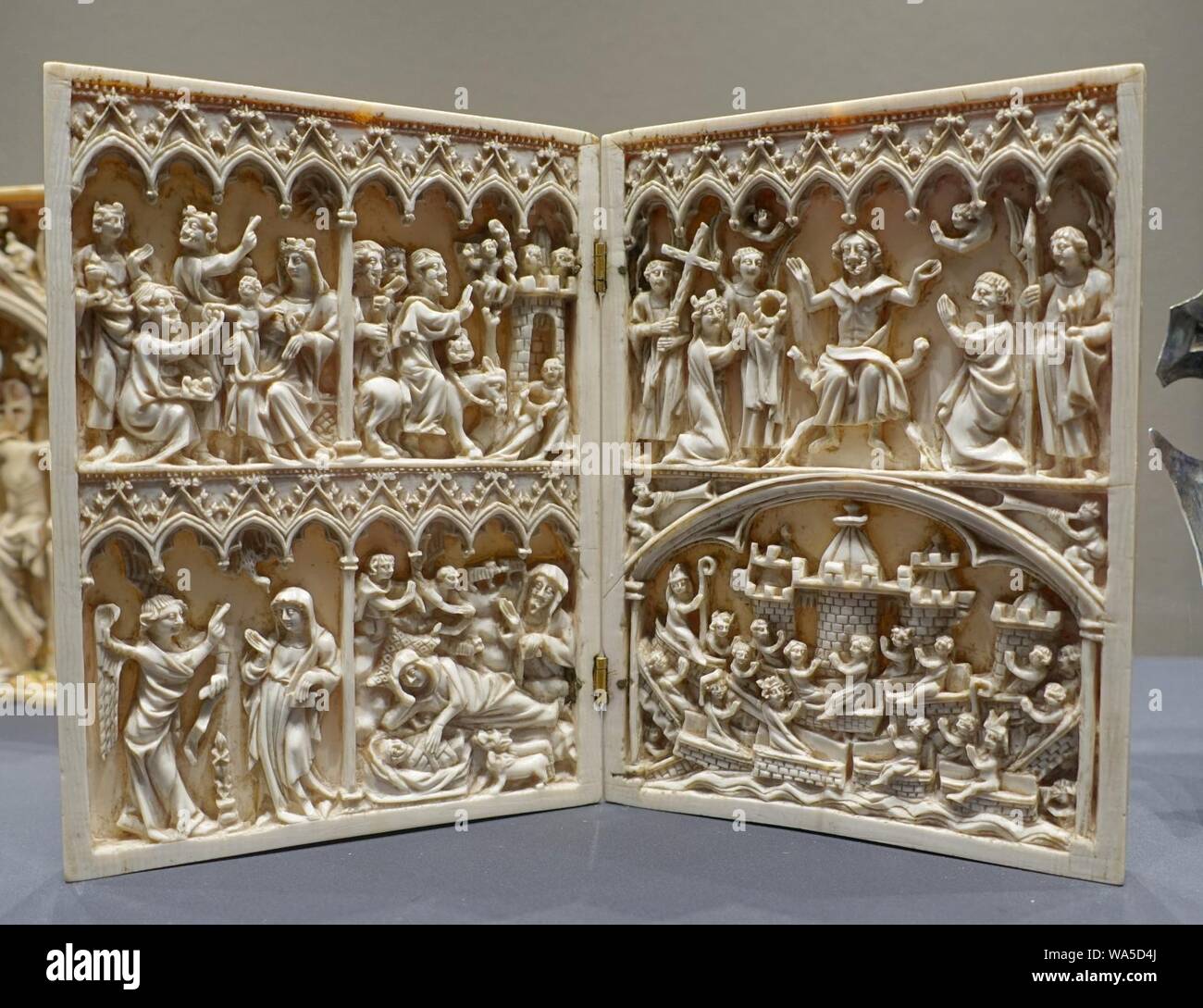 Diptych with six scenes, Rhineland or Maas area, late 1300s, ivory Stock Photohttps://www.alamy.com/image-license-details/?v=1https://www.alamy.com/diptych-with-six-scenes-rhineland-or-maas-area-late-1300s-ivory-image264422162.html
Diptych with six scenes, Rhineland or Maas area, late 1300s, ivory Stock Photohttps://www.alamy.com/image-license-details/?v=1https://www.alamy.com/diptych-with-six-scenes-rhineland-or-maas-area-late-1300s-ivory-image264422162.htmlRMWA5D4J–Diptych with six scenes, Rhineland or Maas area, late 1300s, ivory
 N/A. English: Exhibit in the Hessisches Landesmuseum Darmstadt - Darmstadt, Germany. 19 October 2016, 05:53:14. Daderot 456 Diptych with six scenes, Rhineland or Maas area, late 1300s, ivory - Hessisches Landesmuseum Darmstadt - Darmstadt, Germany - DSC00396 Stock Photohttps://www.alamy.com/image-license-details/?v=1https://www.alamy.com/na-english-exhibit-in-the-hessisches-landesmuseum-darmstadt-darmstadt-germany-19-october-2016-055314-daderot-456-diptych-with-six-scenes-rhineland-or-maas-area-late-1300s-ivory-hessisches-landesmuseum-darmstadt-darmstadt-germany-dsc00396-image209950532.html
N/A. English: Exhibit in the Hessisches Landesmuseum Darmstadt - Darmstadt, Germany. 19 October 2016, 05:53:14. Daderot 456 Diptych with six scenes, Rhineland or Maas area, late 1300s, ivory - Hessisches Landesmuseum Darmstadt - Darmstadt, Germany - DSC00396 Stock Photohttps://www.alamy.com/image-license-details/?v=1https://www.alamy.com/na-english-exhibit-in-the-hessisches-landesmuseum-darmstadt-darmstadt-germany-19-october-2016-055314-daderot-456-diptych-with-six-scenes-rhineland-or-maas-area-late-1300s-ivory-hessisches-landesmuseum-darmstadt-darmstadt-germany-dsc00396-image209950532.htmlRMP5G218–N/A. English: Exhibit in the Hessisches Landesmuseum Darmstadt - Darmstadt, Germany. 19 October 2016, 05:53:14. Daderot 456 Diptych with six scenes, Rhineland or Maas area, late 1300s, ivory - Hessisches Landesmuseum Darmstadt - Darmstadt, Germany - DSC00396
 Shown here are cannon on wheels that date to the late 1300s. Stock Photohttps://www.alamy.com/image-license-details/?v=1https://www.alamy.com/shown-here-are-cannon-on-wheels-that-date-to-the-late-1300s-image327933439.html
Shown here are cannon on wheels that date to the late 1300s. Stock Photohttps://www.alamy.com/image-license-details/?v=1https://www.alamy.com/shown-here-are-cannon-on-wheels-that-date-to-the-late-1300s-image327933439.htmlRF2A1EJCF–Shown here are cannon on wheels that date to the late 1300s.
 Triptych with the Madonna and the Crucifixion, Embriachi workshop, Northern Italy, late 1300s, bone reliefs with wood Bode Museum DSC03661 Stock Photohttps://www.alamy.com/image-license-details/?v=1https://www.alamy.com/stock-photo-triptych-with-the-madonna-and-the-crucifixion-embriachi-workshop-northern-143449938.html
Triptych with the Madonna and the Crucifixion, Embriachi workshop, Northern Italy, late 1300s, bone reliefs with wood Bode Museum DSC03661 Stock Photohttps://www.alamy.com/image-license-details/?v=1https://www.alamy.com/stock-photo-triptych-with-the-madonna-and-the-crucifixion-embriachi-workshop-northern-143449938.htmlRMJ9AKT2–Triptych with the Madonna and the Crucifixion, Embriachi workshop, Northern Italy, late 1300s, bone reliefs with wood Bode Museum DSC03661
 Madonna and Child Adored by Two Angels, by (follower of) Agnolo Gaddi, late 1300s, tempera on wood panel - University of Arizona Stock Photohttps://www.alamy.com/image-license-details/?v=1https://www.alamy.com/madonna-and-child-adored-by-two-angels-by-follower-of-agnolo-gaddi-late-1300s-tempera-on-wood-panel-university-of-arizona-image397783873.html
Madonna and Child Adored by Two Angels, by (follower of) Agnolo Gaddi, late 1300s, tempera on wood panel - University of Arizona Stock Photohttps://www.alamy.com/image-license-details/?v=1https://www.alamy.com/madonna-and-child-adored-by-two-angels-by-follower-of-agnolo-gaddi-late-1300s-tempera-on-wood-panel-university-of-arizona-image397783873.htmlRM2E34HAW–Madonna and Child Adored by Two Angels, by (follower of) Agnolo Gaddi, late 1300s, tempera on wood panel - University of Arizona
 Polyptych with the Annunciation to the Shepherds, the Nativity, the Crucifixion, and the Entombment of Christ, probably middle Rhine, late 1300s, ivory - Museum Schnütgen - Cologne, Germany - DSC00150 Stock Photohttps://www.alamy.com/image-license-details/?v=1https://www.alamy.com/stock-photo-polyptych-with-the-annunciation-to-the-shepherds-the-nativity-the-147625944.html
Polyptych with the Annunciation to the Shepherds, the Nativity, the Crucifixion, and the Entombment of Christ, probably middle Rhine, late 1300s, ivory - Museum Schnütgen - Cologne, Germany - DSC00150 Stock Photohttps://www.alamy.com/image-license-details/?v=1https://www.alamy.com/stock-photo-polyptych-with-the-annunciation-to-the-shepherds-the-nativity-the-147625944.htmlRMJG4XB4–Polyptych with the Annunciation to the Shepherds, the Nativity, the Crucifixion, and the Entombment of Christ, probably middle Rhine, late 1300s, ivory - Museum Schnütgen - Cologne, Germany - DSC00150
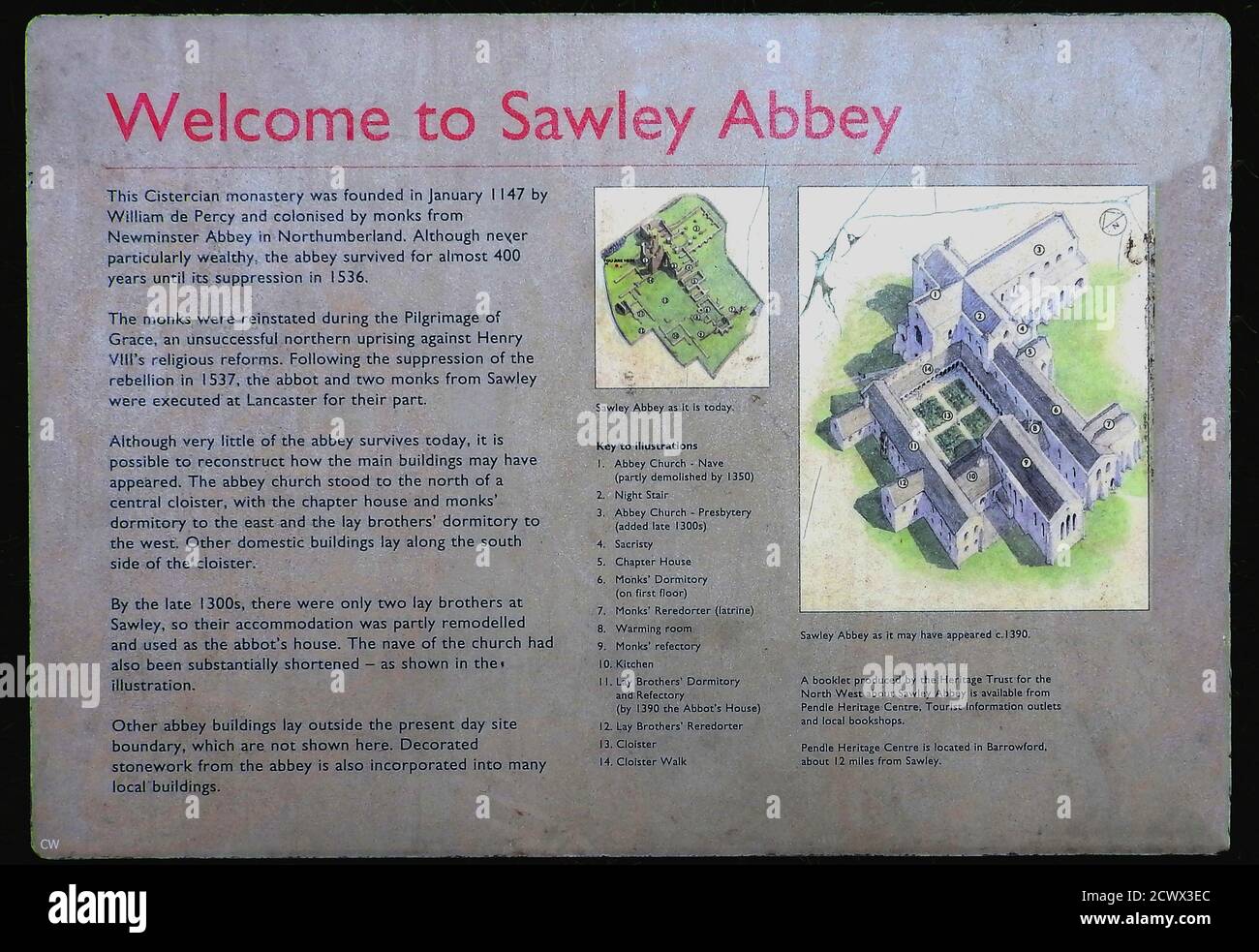 Information board for Sawley Abbey, a ruined monastery of Cistercian monks in Sawley village , Lancashire . It was historically situated within the West Riding of Yorkshire boundary. The abbey was created as a daughter house of Newminster Abbey. It existed from 1147 to the dissolutrion in 1536 & was founded by William de Percy & Newminster Abbey monks. The abbey was not a rich one and by the late 1300's only 2 lay monks lived there.The abbot and 2 monks were executed by King Henry VIII for their part in the protest and uprising arising from plans for the dissolution (Pilgrimage of Grace) Stock Photohttps://www.alamy.com/image-license-details/?v=1https://www.alamy.com/information-board-for-sawley-abbey-a-ruined-monastery-of-cistercian-monks-in-sawley-village-lancashire-it-was-historically-situated-within-the-west-riding-of-yorkshire-boundary-the-abbey-was-created-as-a-daughter-house-of-newminster-abbey-it-existed-from-1147-to-the-dissolutrion-in-1536-was-founded-by-william-de-percy-newminster-abbey-monks-the-abbey-was-not-a-rich-one-and-by-the-late-1300s-only-2-lay-monks-lived-therethe-abbot-and-2-monks-were-executed-by-king-henry-viii-for-their-part-in-the-protest-and-uprising-arising-from-plans-for-the-dissolution-pilgrimage-of-grace-image377357636.html
Information board for Sawley Abbey, a ruined monastery of Cistercian monks in Sawley village , Lancashire . It was historically situated within the West Riding of Yorkshire boundary. The abbey was created as a daughter house of Newminster Abbey. It existed from 1147 to the dissolutrion in 1536 & was founded by William de Percy & Newminster Abbey monks. The abbey was not a rich one and by the late 1300's only 2 lay monks lived there.The abbot and 2 monks were executed by King Henry VIII for their part in the protest and uprising arising from plans for the dissolution (Pilgrimage of Grace) Stock Photohttps://www.alamy.com/image-license-details/?v=1https://www.alamy.com/information-board-for-sawley-abbey-a-ruined-monastery-of-cistercian-monks-in-sawley-village-lancashire-it-was-historically-situated-within-the-west-riding-of-yorkshire-boundary-the-abbey-was-created-as-a-daughter-house-of-newminster-abbey-it-existed-from-1147-to-the-dissolutrion-in-1536-was-founded-by-william-de-percy-newminster-abbey-monks-the-abbey-was-not-a-rich-one-and-by-the-late-1300s-only-2-lay-monks-lived-therethe-abbot-and-2-monks-were-executed-by-king-henry-viii-for-their-part-in-the-protest-and-uprising-arising-from-plans-for-the-dissolution-pilgrimage-of-grace-image377357636.htmlRM2CWX3EC–Information board for Sawley Abbey, a ruined monastery of Cistercian monks in Sawley village , Lancashire . It was historically situated within the West Riding of Yorkshire boundary. The abbey was created as a daughter house of Newminster Abbey. It existed from 1147 to the dissolutrion in 1536 & was founded by William de Percy & Newminster Abbey monks. The abbey was not a rich one and by the late 1300's only 2 lay monks lived there.The abbot and 2 monks were executed by King Henry VIII for their part in the protest and uprising arising from plans for the dissolution (Pilgrimage of Grace)
 Art inspired by Jug, late 1200s–early 1300s, Made in Paris, France, French, Partially glazed earthenware, Overall: 8 1/8 x 6 7/8 x 6 5/16 in. (20.6 x 17.5 x 16.1 cm), Ceramics, Classic works modernized by Artotop with a splash of modernity. Shapes, color and value, eye-catching visual impact on art. Emotions through freedom of artworks in a contemporary way. A timeless message pursuing a wildly creative new direction. Artists turning to the digital medium and creating the Artotop NFT Stock Photohttps://www.alamy.com/image-license-details/?v=1https://www.alamy.com/art-inspired-by-jug-late-1200searly-1300s-made-in-paris-france-french-partially-glazed-earthenware-overall-8-18-x-6-78-x-6-516-in-206-x-175-x-161-cm-ceramics-classic-works-modernized-by-artotop-with-a-splash-of-modernity-shapes-color-and-value-eye-catching-visual-impact-on-art-emotions-through-freedom-of-artworks-in-a-contemporary-way-a-timeless-message-pursuing-a-wildly-creative-new-direction-artists-turning-to-the-digital-medium-and-creating-the-artotop-nft-image462838619.html
Art inspired by Jug, late 1200s–early 1300s, Made in Paris, France, French, Partially glazed earthenware, Overall: 8 1/8 x 6 7/8 x 6 5/16 in. (20.6 x 17.5 x 16.1 cm), Ceramics, Classic works modernized by Artotop with a splash of modernity. Shapes, color and value, eye-catching visual impact on art. Emotions through freedom of artworks in a contemporary way. A timeless message pursuing a wildly creative new direction. Artists turning to the digital medium and creating the Artotop NFT Stock Photohttps://www.alamy.com/image-license-details/?v=1https://www.alamy.com/art-inspired-by-jug-late-1200searly-1300s-made-in-paris-france-french-partially-glazed-earthenware-overall-8-18-x-6-78-x-6-516-in-206-x-175-x-161-cm-ceramics-classic-works-modernized-by-artotop-with-a-splash-of-modernity-shapes-color-and-value-eye-catching-visual-impact-on-art-emotions-through-freedom-of-artworks-in-a-contemporary-way-a-timeless-message-pursuing-a-wildly-creative-new-direction-artists-turning-to-the-digital-medium-and-creating-the-artotop-nft-image462838619.htmlRF2HW03AK–Art inspired by Jug, late 1200s–early 1300s, Made in Paris, France, French, Partially glazed earthenware, Overall: 8 1/8 x 6 7/8 x 6 5/16 in. (20.6 x 17.5 x 16.1 cm), Ceramics, Classic works modernized by Artotop with a splash of modernity. Shapes, color and value, eye-catching visual impact on art. Emotions through freedom of artworks in a contemporary way. A timeless message pursuing a wildly creative new direction. Artists turning to the digital medium and creating the Artotop NFT
 NARDO DI CIONE (active 1343-66 in Florence) Madonna and Child with Saint Peter and Saint John the Evangelist (left panel) c. 1360 Tempera on panel, 49,1 x 15,3 cm National Gallery of Art, Washington Nardo, who with brothers Andrea (called Orcagna) and Jacopo had Florence's busiest workshop in the late 1300s, painted this small work similar to a church altarpiece for use in private devotion at home. It may have been specifically commissioned or bought from stock. The wings pivot to close like shutters; because they protected the surface, this painting is especially well preserved. Its Stock Photohttps://www.alamy.com/image-license-details/?v=1https://www.alamy.com/nardo-di-cione-active-1343-66-in-florence-madonna-and-child-with-saint-peter-and-saint-john-the-evangelist-left-panel-c-1360-tempera-on-panel-491-x-153-cm-national-gallery-of-art-washington-nardo-who-with-brothers-andrea-called-orcagna-and-jacopo-had-florences-busiest-workshop-in-the-late-1300s-painted-this-small-work-similar-to-a-church-altarpiece-for-use-in-private-devotion-at-home-it-may-have-been-specifically-commissioned-or-bought-from-stock-the-wings-pivot-to-close-like-shutters-because-they-protected-the-surface-this-painting-is-especially-well-preserved-its-image624638151.html
NARDO DI CIONE (active 1343-66 in Florence) Madonna and Child with Saint Peter and Saint John the Evangelist (left panel) c. 1360 Tempera on panel, 49,1 x 15,3 cm National Gallery of Art, Washington Nardo, who with brothers Andrea (called Orcagna) and Jacopo had Florence's busiest workshop in the late 1300s, painted this small work similar to a church altarpiece for use in private devotion at home. It may have been specifically commissioned or bought from stock. The wings pivot to close like shutters; because they protected the surface, this painting is especially well preserved. Its Stock Photohttps://www.alamy.com/image-license-details/?v=1https://www.alamy.com/nardo-di-cione-active-1343-66-in-florence-madonna-and-child-with-saint-peter-and-saint-john-the-evangelist-left-panel-c-1360-tempera-on-panel-491-x-153-cm-national-gallery-of-art-washington-nardo-who-with-brothers-andrea-called-orcagna-and-jacopo-had-florences-busiest-workshop-in-the-late-1300s-painted-this-small-work-similar-to-a-church-altarpiece-for-use-in-private-devotion-at-home-it-may-have-been-specifically-commissioned-or-bought-from-stock-the-wings-pivot-to-close-like-shutters-because-they-protected-the-surface-this-painting-is-especially-well-preserved-its-image624638151.htmlRM2Y86M9B–NARDO DI CIONE (active 1343-66 in Florence) Madonna and Child with Saint Peter and Saint John the Evangelist (left panel) c. 1360 Tempera on panel, 49,1 x 15,3 cm National Gallery of Art, Washington Nardo, who with brothers Andrea (called Orcagna) and Jacopo had Florence's busiest workshop in the late 1300s, painted this small work similar to a church altarpiece for use in private devotion at home. It may have been specifically commissioned or bought from stock. The wings pivot to close like shutters; because they protected the surface, this painting is especially well preserved. Its
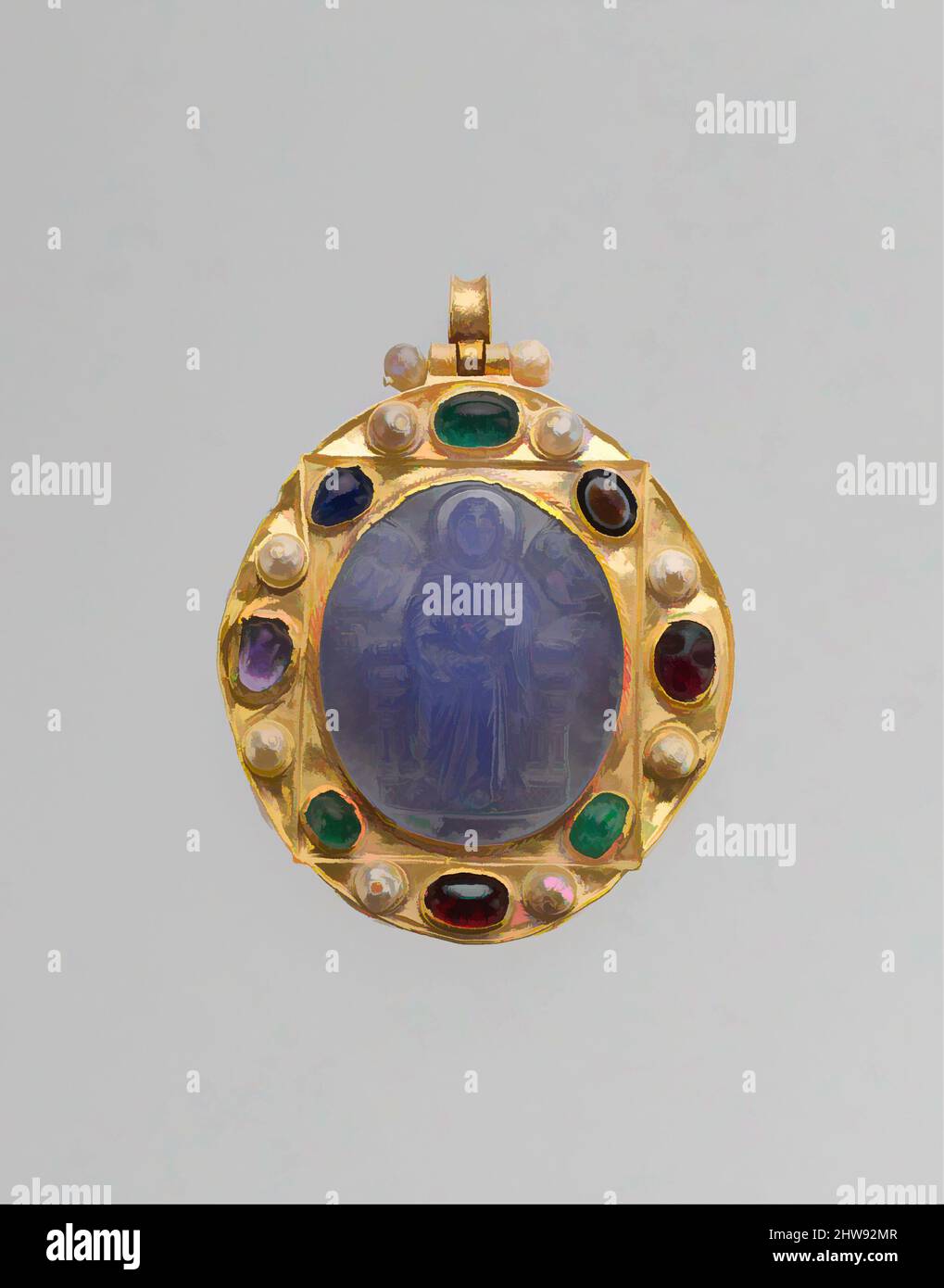 Art inspired by Pendant Brooch with Cameo of Enthroned Virgin and Child and Christ Pantokrator, late 1000s–1100s (cameo); 1100s–1300s (mount), Byzantine, Chalcedony cameo; gold mount with pearls, emeralds, garnets, sapphires, and a sardonyx intaglio, Overall: 2 13/16 x 2 3/16 x 5/8 in, Classic works modernized by Artotop with a splash of modernity. Shapes, color and value, eye-catching visual impact on art. Emotions through freedom of artworks in a contemporary way. A timeless message pursuing a wildly creative new direction. Artists turning to the digital medium and creating the Artotop NFT Stock Photohttps://www.alamy.com/image-license-details/?v=1https://www.alamy.com/art-inspired-by-pendant-brooch-with-cameo-of-enthroned-virgin-and-child-and-christ-pantokrator-late-1000s1100s-cameo-1100s1300s-mount-byzantine-chalcedony-cameo-gold-mount-with-pearls-emeralds-garnets-sapphires-and-a-sardonyx-intaglio-overall-2-1316-x-2-316-x-58-in-classic-works-modernized-by-artotop-with-a-splash-of-modernity-shapes-color-and-value-eye-catching-visual-impact-on-art-emotions-through-freedom-of-artworks-in-a-contemporary-way-a-timeless-message-pursuing-a-wildly-creative-new-direction-artists-turning-to-the-digital-medium-and-creating-the-artotop-nft-image463035687.html
Art inspired by Pendant Brooch with Cameo of Enthroned Virgin and Child and Christ Pantokrator, late 1000s–1100s (cameo); 1100s–1300s (mount), Byzantine, Chalcedony cameo; gold mount with pearls, emeralds, garnets, sapphires, and a sardonyx intaglio, Overall: 2 13/16 x 2 3/16 x 5/8 in, Classic works modernized by Artotop with a splash of modernity. Shapes, color and value, eye-catching visual impact on art. Emotions through freedom of artworks in a contemporary way. A timeless message pursuing a wildly creative new direction. Artists turning to the digital medium and creating the Artotop NFT Stock Photohttps://www.alamy.com/image-license-details/?v=1https://www.alamy.com/art-inspired-by-pendant-brooch-with-cameo-of-enthroned-virgin-and-child-and-christ-pantokrator-late-1000s1100s-cameo-1100s1300s-mount-byzantine-chalcedony-cameo-gold-mount-with-pearls-emeralds-garnets-sapphires-and-a-sardonyx-intaglio-overall-2-1316-x-2-316-x-58-in-classic-works-modernized-by-artotop-with-a-splash-of-modernity-shapes-color-and-value-eye-catching-visual-impact-on-art-emotions-through-freedom-of-artworks-in-a-contemporary-way-a-timeless-message-pursuing-a-wildly-creative-new-direction-artists-turning-to-the-digital-medium-and-creating-the-artotop-nft-image463035687.htmlRF2HW92MR–Art inspired by Pendant Brooch with Cameo of Enthroned Virgin and Child and Christ Pantokrator, late 1000s–1100s (cameo); 1100s–1300s (mount), Byzantine, Chalcedony cameo; gold mount with pearls, emeralds, garnets, sapphires, and a sardonyx intaglio, Overall: 2 13/16 x 2 3/16 x 5/8 in, Classic works modernized by Artotop with a splash of modernity. Shapes, color and value, eye-catching visual impact on art. Emotions through freedom of artworks in a contemporary way. A timeless message pursuing a wildly creative new direction. Artists turning to the digital medium and creating the Artotop NFT
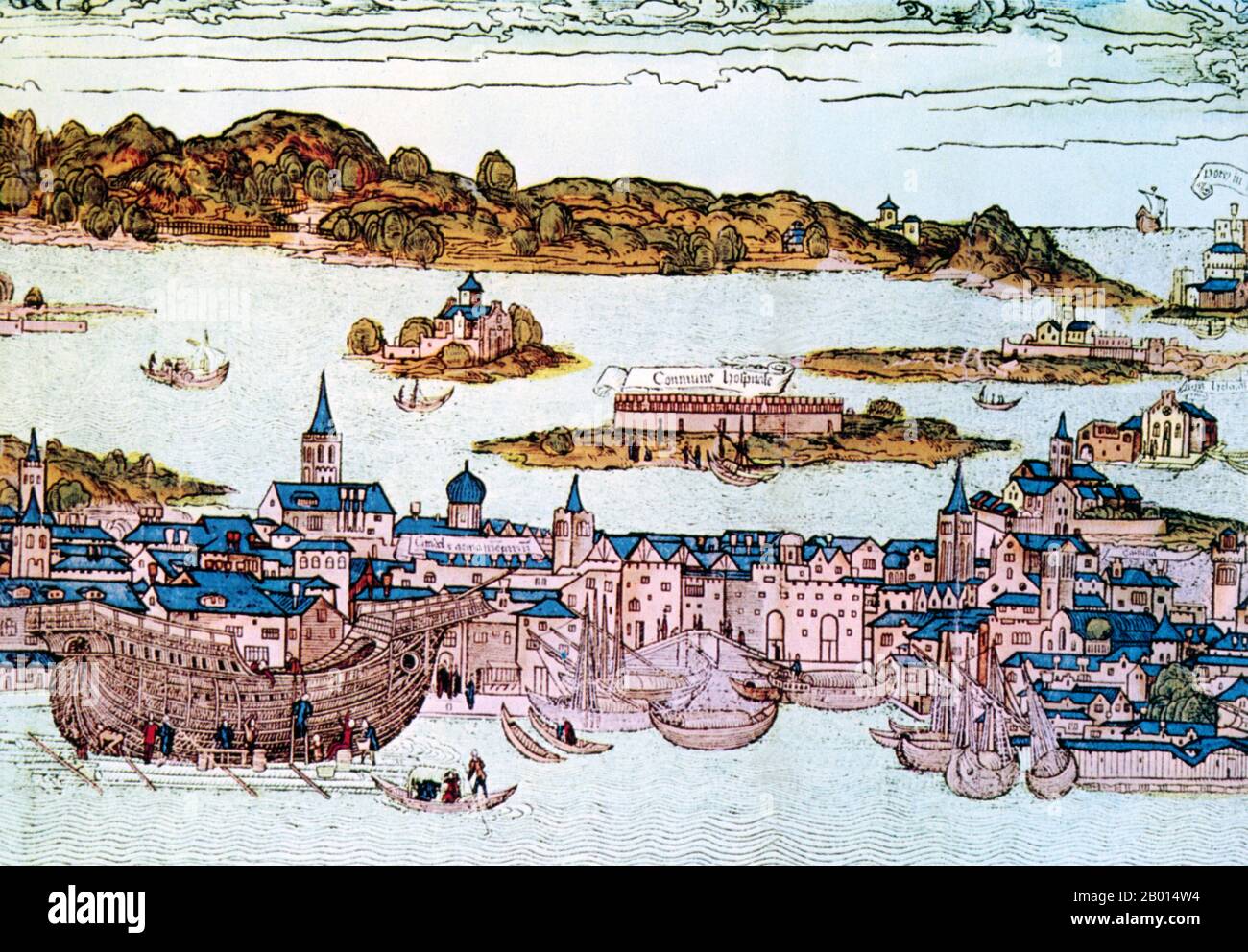 Italy: A ship being constructed in the shipyards of Venice in the 1300s. The Italian cities of Venice and Genoa dominated trade with the East in the 1300s though they were often at war with each other. Situated on the Adriatic Sea, Venice traded regularly with the Byzantine Empire and the Muslim world extensively. By the late 13th century, Venice was the most prosperous city in all of Europe. At the peak of its power and wealth, it had 36,000 sailors operating 3,300 ships, dominating Mediterranean commerce. Stock Photohttps://www.alamy.com/image-license-details/?v=1https://www.alamy.com/italy-a-ship-being-constructed-in-the-shipyards-of-venice-in-the-1300s-the-italian-cities-of-venice-and-genoa-dominated-trade-with-the-east-in-the-1300s-though-they-were-often-at-war-with-each-other-situated-on-the-adriatic-sea-venice-traded-regularly-with-the-byzantine-empire-and-the-muslim-world-extensively-by-the-late-13th-century-venice-was-the-most-prosperous-city-in-all-of-europe-at-the-peak-of-its-power-and-wealth-it-had-36000-sailors-operating-3300-ships-dominating-mediterranean-commerce-image344233152.html
Italy: A ship being constructed in the shipyards of Venice in the 1300s. The Italian cities of Venice and Genoa dominated trade with the East in the 1300s though they were often at war with each other. Situated on the Adriatic Sea, Venice traded regularly with the Byzantine Empire and the Muslim world extensively. By the late 13th century, Venice was the most prosperous city in all of Europe. At the peak of its power and wealth, it had 36,000 sailors operating 3,300 ships, dominating Mediterranean commerce. Stock Photohttps://www.alamy.com/image-license-details/?v=1https://www.alamy.com/italy-a-ship-being-constructed-in-the-shipyards-of-venice-in-the-1300s-the-italian-cities-of-venice-and-genoa-dominated-trade-with-the-east-in-the-1300s-though-they-were-often-at-war-with-each-other-situated-on-the-adriatic-sea-venice-traded-regularly-with-the-byzantine-empire-and-the-muslim-world-extensively-by-the-late-13th-century-venice-was-the-most-prosperous-city-in-all-of-europe-at-the-peak-of-its-power-and-wealth-it-had-36000-sailors-operating-3300-ships-dominating-mediterranean-commerce-image344233152.htmlRM2B014W4–Italy: A ship being constructed in the shipyards of Venice in the 1300s. The Italian cities of Venice and Genoa dominated trade with the East in the 1300s though they were often at war with each other. Situated on the Adriatic Sea, Venice traded regularly with the Byzantine Empire and the Muslim world extensively. By the late 13th century, Venice was the most prosperous city in all of Europe. At the peak of its power and wealth, it had 36,000 sailors operating 3,300 ships, dominating Mediterranean commerce.
 Art inspired by Jug, late 1200s–early 1300s, Made in Paris or its vicinity, France, French, Partially glazed earthenware, Overall: 10 1/2 x 6 1/4 x 5 1/16 in. (26.7 x 15.9 x 12.9 cm), Ceramics, French potters typically decorated jugs of this type with applied ornament in the form of, Classic works modernized by Artotop with a splash of modernity. Shapes, color and value, eye-catching visual impact on art. Emotions through freedom of artworks in a contemporary way. A timeless message pursuing a wildly creative new direction. Artists turning to the digital medium and creating the Artotop NFT Stock Photohttps://www.alamy.com/image-license-details/?v=1https://www.alamy.com/art-inspired-by-jug-late-1200searly-1300s-made-in-paris-or-its-vicinity-france-french-partially-glazed-earthenware-overall-10-12-x-6-14-x-5-116-in-267-x-159-x-129-cm-ceramics-french-potters-typically-decorated-jugs-of-this-type-with-applied-ornament-in-the-form-of-classic-works-modernized-by-artotop-with-a-splash-of-modernity-shapes-color-and-value-eye-catching-visual-impact-on-art-emotions-through-freedom-of-artworks-in-a-contemporary-way-a-timeless-message-pursuing-a-wildly-creative-new-direction-artists-turning-to-the-digital-medium-and-creating-the-artotop-nft-image462836745.html
Art inspired by Jug, late 1200s–early 1300s, Made in Paris or its vicinity, France, French, Partially glazed earthenware, Overall: 10 1/2 x 6 1/4 x 5 1/16 in. (26.7 x 15.9 x 12.9 cm), Ceramics, French potters typically decorated jugs of this type with applied ornament in the form of, Classic works modernized by Artotop with a splash of modernity. Shapes, color and value, eye-catching visual impact on art. Emotions through freedom of artworks in a contemporary way. A timeless message pursuing a wildly creative new direction. Artists turning to the digital medium and creating the Artotop NFT Stock Photohttps://www.alamy.com/image-license-details/?v=1https://www.alamy.com/art-inspired-by-jug-late-1200searly-1300s-made-in-paris-or-its-vicinity-france-french-partially-glazed-earthenware-overall-10-12-x-6-14-x-5-116-in-267-x-159-x-129-cm-ceramics-french-potters-typically-decorated-jugs-of-this-type-with-applied-ornament-in-the-form-of-classic-works-modernized-by-artotop-with-a-splash-of-modernity-shapes-color-and-value-eye-catching-visual-impact-on-art-emotions-through-freedom-of-artworks-in-a-contemporary-way-a-timeless-message-pursuing-a-wildly-creative-new-direction-artists-turning-to-the-digital-medium-and-creating-the-artotop-nft-image462836745.htmlRF2HW00YN–Art inspired by Jug, late 1200s–early 1300s, Made in Paris or its vicinity, France, French, Partially glazed earthenware, Overall: 10 1/2 x 6 1/4 x 5 1/16 in. (26.7 x 15.9 x 12.9 cm), Ceramics, French potters typically decorated jugs of this type with applied ornament in the form of, Classic works modernized by Artotop with a splash of modernity. Shapes, color and value, eye-catching visual impact on art. Emotions through freedom of artworks in a contemporary way. A timeless message pursuing a wildly creative new direction. Artists turning to the digital medium and creating the Artotop NFT
 vase with horses on water design, Yuan dynasty, Yuan dynasty, late 1300s, porcelain with underglaze blue, H: 11-5/8 in., 29.5 cm., Asian Art Stock Photohttps://www.alamy.com/image-license-details/?v=1https://www.alamy.com/vase-with-horses-on-water-design-yuan-dynasty-yuan-dynasty-late-1300s-porcelain-with-underglaze-blue-h-11-58-in-295-cm-asian-art-image328775353.html
vase with horses on water design, Yuan dynasty, Yuan dynasty, late 1300s, porcelain with underglaze blue, H: 11-5/8 in., 29.5 cm., Asian Art Stock Photohttps://www.alamy.com/image-license-details/?v=1https://www.alamy.com/vase-with-horses-on-water-design-yuan-dynasty-yuan-dynasty-late-1300s-porcelain-with-underglaze-blue-h-11-58-in-295-cm-asian-art-image328775353.htmlRM2A2W08W–vase with horses on water design, Yuan dynasty, Yuan dynasty, late 1300s, porcelain with underglaze blue, H: 11-5/8 in., 29.5 cm., Asian Art
 Sake Bottle, late 1300s-late 1500s. Japan, Muromachi period (1392-1573). Negoro lacquer; overall: 33 cm (13 in.). Stock Photohttps://www.alamy.com/image-license-details/?v=1https://www.alamy.com/sake-bottle-late-1300s-late-1500s-japan-muromachi-period-1392-1573-negoro-lacquer-overall-33-cm-13-in-image448119384.html
Sake Bottle, late 1300s-late 1500s. Japan, Muromachi period (1392-1573). Negoro lacquer; overall: 33 cm (13 in.). Stock Photohttps://www.alamy.com/image-license-details/?v=1https://www.alamy.com/sake-bottle-late-1300s-late-1500s-japan-muromachi-period-1392-1573-negoro-lacquer-overall-33-cm-13-in-image448119384.htmlRM2H11GRM–Sake Bottle, late 1300s-late 1500s. Japan, Muromachi period (1392-1573). Negoro lacquer; overall: 33 cm (13 in.).
 Wrestlers perform during traditional circumcision ritual in Rhodope Mountain village of Ribnovo, Bulgaria on 03 October, 2021. Pomaks perform a traditional Muslim circumcision ritual for boys until they are five years old. Circumcision intervention is done by surgeon working for the representation of the chief mufti of the Muslims in Bulgaria. Citizens of Ribnovo are Bulgarian-speaking Muslims, sometimes referred to as 'Pomaks. The Pomak Muslims are dwelling mainly in the Rhodope Mountains of South Bulgaria and North Greece. They are believed to have converted to Islam in the late 1300s (Photo Stock Photohttps://www.alamy.com/image-license-details/?v=1https://www.alamy.com/wrestlers-perform-during-traditional-circumcision-ritual-in-rhodope-mountain-village-of-ribnovo-bulgaria-on-03-october-2021-pomaks-perform-a-traditional-muslim-circumcision-ritual-for-boys-until-they-are-five-years-old-circumcision-intervention-is-done-by-surgeon-working-for-the-representation-of-the-chief-mufti-of-the-muslims-in-bulgaria-citizens-of-ribnovo-are-bulgarian-speaking-muslims-sometimes-referred-to-as-pomaks-the-pomak-muslims-are-dwelling-mainly-in-the-rhodope-mountains-of-south-bulgaria-and-north-greece-they-are-believed-to-have-converted-to-islam-in-the-late-1300s-photo-image489752512.html
Wrestlers perform during traditional circumcision ritual in Rhodope Mountain village of Ribnovo, Bulgaria on 03 October, 2021. Pomaks perform a traditional Muslim circumcision ritual for boys until they are five years old. Circumcision intervention is done by surgeon working for the representation of the chief mufti of the Muslims in Bulgaria. Citizens of Ribnovo are Bulgarian-speaking Muslims, sometimes referred to as 'Pomaks. The Pomak Muslims are dwelling mainly in the Rhodope Mountains of South Bulgaria and North Greece. They are believed to have converted to Islam in the late 1300s (Photo Stock Photohttps://www.alamy.com/image-license-details/?v=1https://www.alamy.com/wrestlers-perform-during-traditional-circumcision-ritual-in-rhodope-mountain-village-of-ribnovo-bulgaria-on-03-october-2021-pomaks-perform-a-traditional-muslim-circumcision-ritual-for-boys-until-they-are-five-years-old-circumcision-intervention-is-done-by-surgeon-working-for-the-representation-of-the-chief-mufti-of-the-muslims-in-bulgaria-citizens-of-ribnovo-are-bulgarian-speaking-muslims-sometimes-referred-to-as-pomaks-the-pomak-muslims-are-dwelling-mainly-in-the-rhodope-mountains-of-south-bulgaria-and-north-greece-they-are-believed-to-have-converted-to-islam-in-the-late-1300s-photo-image489752512.htmlRM2KCP494–Wrestlers perform during traditional circumcision ritual in Rhodope Mountain village of Ribnovo, Bulgaria on 03 October, 2021. Pomaks perform a traditional Muslim circumcision ritual for boys until they are five years old. Circumcision intervention is done by surgeon working for the representation of the chief mufti of the Muslims in Bulgaria. Citizens of Ribnovo are Bulgarian-speaking Muslims, sometimes referred to as 'Pomaks. The Pomak Muslims are dwelling mainly in the Rhodope Mountains of South Bulgaria and North Greece. They are believed to have converted to Islam in the late 1300s (Photo
 Kilnave Chapel on Loch Gruinart, Islay, Scotland, UK, that was built around late 1300's. Stock Photohttps://www.alamy.com/image-license-details/?v=1https://www.alamy.com/kilnave-chapel-on-loch-gruinart-islay-scotland-uk-that-was-built-around-late-1300s-image598890248.html
Kilnave Chapel on Loch Gruinart, Islay, Scotland, UK, that was built around late 1300's. Stock Photohttps://www.alamy.com/image-license-details/?v=1https://www.alamy.com/kilnave-chapel-on-loch-gruinart-islay-scotland-uk-that-was-built-around-late-1300s-image598890248.htmlRM2WP9PHC–Kilnave Chapel on Loch Gruinart, Islay, Scotland, UK, that was built around late 1300's.
 Paintings by Piero di Giovanni aka Lorenzo Monaco in the Accademia Gallery in Florence, Italy. Circa late 1300s. Stock Photohttps://www.alamy.com/image-license-details/?v=1https://www.alamy.com/paintings-by-piero-di-giovanni-aka-lorenzo-monaco-in-the-accademia-gallery-in-florence-italy-circa-late-1300s-image635532502.html
Paintings by Piero di Giovanni aka Lorenzo Monaco in the Accademia Gallery in Florence, Italy. Circa late 1300s. Stock Photohttps://www.alamy.com/image-license-details/?v=1https://www.alamy.com/paintings-by-piero-di-giovanni-aka-lorenzo-monaco-in-the-accademia-gallery-in-florence-italy-circa-late-1300s-image635532502.htmlRM2YWY05A–Paintings by Piero di Giovanni aka Lorenzo Monaco in the Accademia Gallery in Florence, Italy. Circa late 1300s.
 Kilnave Chapel on Loch Gruinart, Islay, Scotland, UK, that was built around late 1300's. Stock Photohttps://www.alamy.com/image-license-details/?v=1https://www.alamy.com/kilnave-chapel-on-loch-gruinart-islay-scotland-uk-that-was-built-around-late-1300s-image598887646.html
Kilnave Chapel on Loch Gruinart, Islay, Scotland, UK, that was built around late 1300's. Stock Photohttps://www.alamy.com/image-license-details/?v=1https://www.alamy.com/kilnave-chapel-on-loch-gruinart-islay-scotland-uk-that-was-built-around-late-1300s-image598887646.htmlRM2WP9K8E–Kilnave Chapel on Loch Gruinart, Islay, Scotland, UK, that was built around late 1300's.
 Crucified Christ, late 1300s. This carved wooden corpus of Christ was covered with a layer of linen and painted with vivid colours. Given its large scale it would have been intended for display in a church. Most likely it was suspended high over an altar facing the choir. During the Middle Ages, a monumental cross was often hung above the altar, and a smaller cross placed upon it. While not required by the liturgy, these crosses were visible symbols of the subject and focus of the Mass. The style of the corpus would suggest it comes from Navarre in northeast Spain. Stock Photohttps://www.alamy.com/image-license-details/?v=1https://www.alamy.com/crucified-christ-late-1300s-this-carved-wooden-corpus-of-christ-was-covered-with-a-layer-of-linen-and-painted-with-vivid-colours-given-its-large-scale-it-would-have-been-intended-for-display-in-a-church-most-likely-it-was-suspended-high-over-an-altar-facing-the-choir-during-the-middle-ages-a-monumental-cross-was-often-hung-above-the-altar-and-a-smaller-cross-placed-upon-it-while-not-required-by-the-liturgy-these-crosses-were-visible-symbols-of-the-subject-and-focus-of-the-mass-the-style-of-the-corpus-would-suggest-it-comes-from-navarre-in-northeast-spain-image330084739.html
Crucified Christ, late 1300s. This carved wooden corpus of Christ was covered with a layer of linen and painted with vivid colours. Given its large scale it would have been intended for display in a church. Most likely it was suspended high over an altar facing the choir. During the Middle Ages, a monumental cross was often hung above the altar, and a smaller cross placed upon it. While not required by the liturgy, these crosses were visible symbols of the subject and focus of the Mass. The style of the corpus would suggest it comes from Navarre in northeast Spain. Stock Photohttps://www.alamy.com/image-license-details/?v=1https://www.alamy.com/crucified-christ-late-1300s-this-carved-wooden-corpus-of-christ-was-covered-with-a-layer-of-linen-and-painted-with-vivid-colours-given-its-large-scale-it-would-have-been-intended-for-display-in-a-church-most-likely-it-was-suspended-high-over-an-altar-facing-the-choir-during-the-middle-ages-a-monumental-cross-was-often-hung-above-the-altar-and-a-smaller-cross-placed-upon-it-while-not-required-by-the-liturgy-these-crosses-were-visible-symbols-of-the-subject-and-focus-of-the-mass-the-style-of-the-corpus-would-suggest-it-comes-from-navarre-in-northeast-spain-image330084739.htmlRM2A50JCK–Crucified Christ, late 1300s. This carved wooden corpus of Christ was covered with a layer of linen and painted with vivid colours. Given its large scale it would have been intended for display in a church. Most likely it was suspended high over an altar facing the choir. During the Middle Ages, a monumental cross was often hung above the altar, and a smaller cross placed upon it. While not required by the liturgy, these crosses were visible symbols of the subject and focus of the Mass. The style of the corpus would suggest it comes from Navarre in northeast Spain.
 An old engraving of French knights jousting, in the 1300s. It is from a Victorian history book of c.1900. Bertrand du Guesclin is jousting here. Jousting is a medieval and renaissance martial contest between two combatants either on horse or on foot using a lance. Jousting was a very popular sport among the Anglo-Norman knighthood. It transformed into a specialised sport during the Late Middle Ages, and remained popular with the nobility in Europe throughout the 16th century. Stock Photohttps://www.alamy.com/image-license-details/?v=1https://www.alamy.com/an-old-engraving-of-french-knights-jousting-in-the-1300s-it-is-from-a-victorian-history-book-of-c1900-bertrand-du-guesclin-is-jousting-here-jousting-is-a-medieval-and-renaissance-martial-contest-between-two-combatants-either-on-horse-or-on-foot-using-a-lance-jousting-was-a-very-popular-sport-among-the-anglo-norman-knighthood-it-transformed-into-a-specialised-sport-during-the-late-middle-ages-and-remained-popular-with-the-nobility-in-europe-throughout-the-16th-century-image632363294.html
An old engraving of French knights jousting, in the 1300s. It is from a Victorian history book of c.1900. Bertrand du Guesclin is jousting here. Jousting is a medieval and renaissance martial contest between two combatants either on horse or on foot using a lance. Jousting was a very popular sport among the Anglo-Norman knighthood. It transformed into a specialised sport during the Late Middle Ages, and remained popular with the nobility in Europe throughout the 16th century. Stock Photohttps://www.alamy.com/image-license-details/?v=1https://www.alamy.com/an-old-engraving-of-french-knights-jousting-in-the-1300s-it-is-from-a-victorian-history-book-of-c1900-bertrand-du-guesclin-is-jousting-here-jousting-is-a-medieval-and-renaissance-martial-contest-between-two-combatants-either-on-horse-or-on-foot-using-a-lance-jousting-was-a-very-popular-sport-among-the-anglo-norman-knighthood-it-transformed-into-a-specialised-sport-during-the-late-middle-ages-and-remained-popular-with-the-nobility-in-europe-throughout-the-16th-century-image632363294.htmlRM2YMPHRA–An old engraving of French knights jousting, in the 1300s. It is from a Victorian history book of c.1900. Bertrand du Guesclin is jousting here. Jousting is a medieval and renaissance martial contest between two combatants either on horse or on foot using a lance. Jousting was a very popular sport among the Anglo-Norman knighthood. It transformed into a specialised sport during the Late Middle Ages, and remained popular with the nobility in Europe throughout the 16th century.
 Illuminated manuscript page written on vellum in Italy in the late 14th century, 1370. Stock Photohttps://www.alamy.com/image-license-details/?v=1https://www.alamy.com/illuminated-manuscript-page-written-on-vellum-in-italy-in-the-late-image156742541.html
Illuminated manuscript page written on vellum in Italy in the late 14th century, 1370. Stock Photohttps://www.alamy.com/image-license-details/?v=1https://www.alamy.com/illuminated-manuscript-page-written-on-vellum-in-italy-in-the-late-image156742541.htmlRMK306KW–Illuminated manuscript page written on vellum in Italy in the late 14th century, 1370.
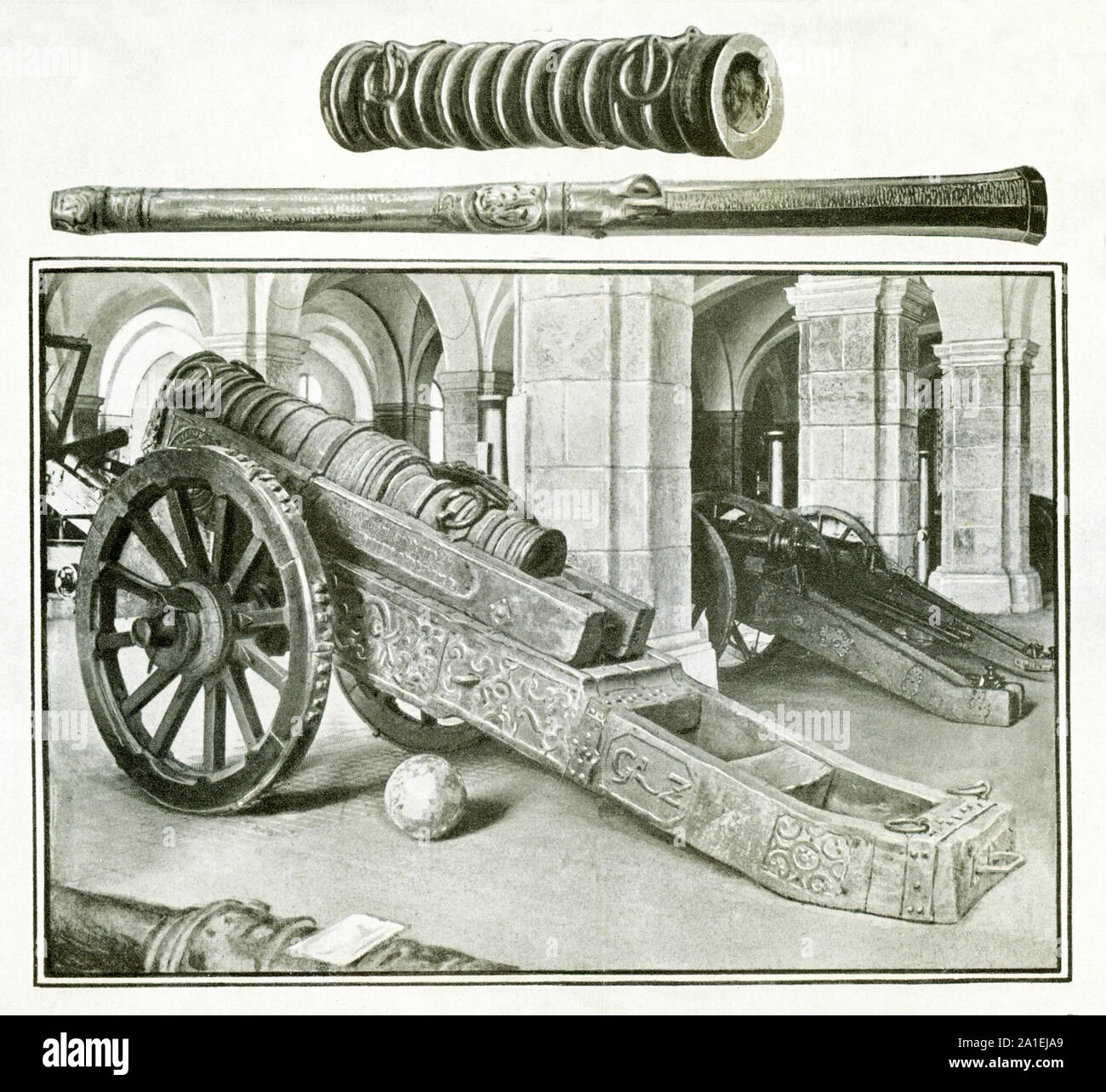 Shown here at top is a bombard, a cannon of the earliest type, which originally fired a stone ball. This one is about 43 inches in length and weighed about 275 pounds. In italy it was known as the tromba di bombarda. The middle weapon is hand cannon. At bottom are cannon on wheels that date to the late 1300s. Stock Photohttps://www.alamy.com/image-license-details/?v=1https://www.alamy.com/shown-here-at-top-is-a-bombard-a-cannon-of-the-earliest-type-which-originally-fired-a-stone-ball-this-one-is-about-43-inches-in-length-and-weighed-about-275-pounds-in-italy-it-was-known-as-the-tromba-di-bombarda-the-middle-weapon-is-hand-cannon-at-bottom-are-cannon-on-wheels-that-date-to-the-late-1300s-image327933377.html
Shown here at top is a bombard, a cannon of the earliest type, which originally fired a stone ball. This one is about 43 inches in length and weighed about 275 pounds. In italy it was known as the tromba di bombarda. The middle weapon is hand cannon. At bottom are cannon on wheels that date to the late 1300s. Stock Photohttps://www.alamy.com/image-license-details/?v=1https://www.alamy.com/shown-here-at-top-is-a-bombard-a-cannon-of-the-earliest-type-which-originally-fired-a-stone-ball-this-one-is-about-43-inches-in-length-and-weighed-about-275-pounds-in-italy-it-was-known-as-the-tromba-di-bombarda-the-middle-weapon-is-hand-cannon-at-bottom-are-cannon-on-wheels-that-date-to-the-late-1300s-image327933377.htmlRF2A1EJA9–Shown here at top is a bombard, a cannon of the earliest type, which originally fired a stone ball. This one is about 43 inches in length and weighed about 275 pounds. In italy it was known as the tromba di bombarda. The middle weapon is hand cannon. At bottom are cannon on wheels that date to the late 1300s.
 Illuminated manusript page from 'Liber de macrocosmo' written on vellum in Italy in the late 14th century with marginal ornaments, 1350. Stock Photohttps://www.alamy.com/image-license-details/?v=1https://www.alamy.com/illuminated-manusript-page-from-liber-de-macrocosmo-written-on-vellum-image156742507.html
Illuminated manusript page from 'Liber de macrocosmo' written on vellum in Italy in the late 14th century with marginal ornaments, 1350. Stock Photohttps://www.alamy.com/image-license-details/?v=1https://www.alamy.com/illuminated-manusript-page-from-liber-de-macrocosmo-written-on-vellum-image156742507.htmlRMK306JK–Illuminated manusript page from 'Liber de macrocosmo' written on vellum in Italy in the late 14th century with marginal ornaments, 1350.
 Madonna and Child Adored by Two Angels, detail, by (follower of) Agnolo Gaddi, late 1300s, tempera on wood panel - University of Arizona Stock Photohttps://www.alamy.com/image-license-details/?v=1https://www.alamy.com/madonna-and-child-adored-by-two-angels-detail-by-follower-of-agnolo-gaddi-late-1300s-tempera-on-wood-panel-university-of-arizona-image397783881.html
Madonna and Child Adored by Two Angels, detail, by (follower of) Agnolo Gaddi, late 1300s, tempera on wood panel - University of Arizona Stock Photohttps://www.alamy.com/image-license-details/?v=1https://www.alamy.com/madonna-and-child-adored-by-two-angels-detail-by-follower-of-agnolo-gaddi-late-1300s-tempera-on-wood-panel-university-of-arizona-image397783881.htmlRM2E34HB5–Madonna and Child Adored by Two Angels, detail, by (follower of) Agnolo Gaddi, late 1300s, tempera on wood panel - University of Arizona
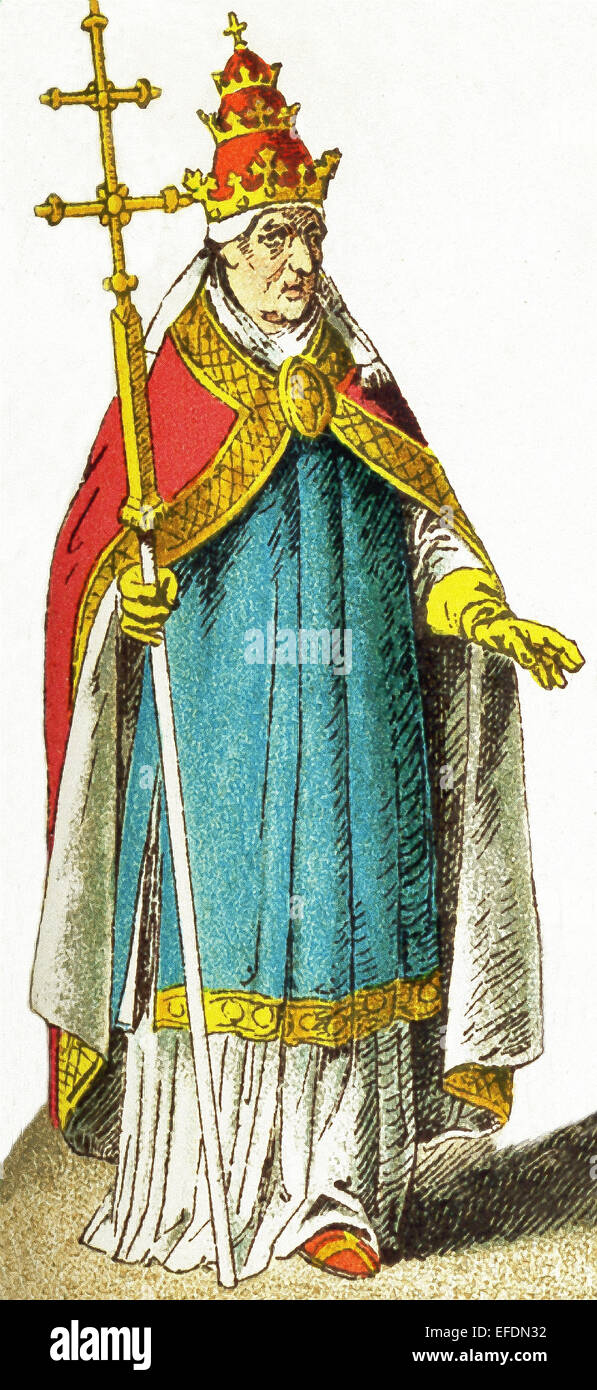 The Italian figure represented here is Pope Boniface IX and dates to late 1300s. Boniface was pope from 1389 to 1404. He was the second pope during Great Western Schism. The illustration dates to 1882. Stock Photohttps://www.alamy.com/image-license-details/?v=1https://www.alamy.com/stock-photo-the-italian-figure-represented-here-is-pope-boniface-ix-and-dates-78363238.html
The Italian figure represented here is Pope Boniface IX and dates to late 1300s. Boniface was pope from 1389 to 1404. He was the second pope during Great Western Schism. The illustration dates to 1882. Stock Photohttps://www.alamy.com/image-license-details/?v=1https://www.alamy.com/stock-photo-the-italian-figure-represented-here-is-pope-boniface-ix-and-dates-78363238.htmlRMEFDN32–The Italian figure represented here is Pope Boniface IX and dates to late 1300s. Boniface was pope from 1389 to 1404. He was the second pope during Great Western Schism. The illustration dates to 1882.
 Wild man, Cologne, late 1300s, oak Stock Photohttps://www.alamy.com/image-license-details/?v=1https://www.alamy.com/wild-man-cologne-late-1300s-oak-image575588445.html
Wild man, Cologne, late 1300s, oak Stock Photohttps://www.alamy.com/image-license-details/?v=1https://www.alamy.com/wild-man-cologne-late-1300s-oak-image575588445.htmlRM2TCC8X5–Wild man, Cologne, late 1300s, oak
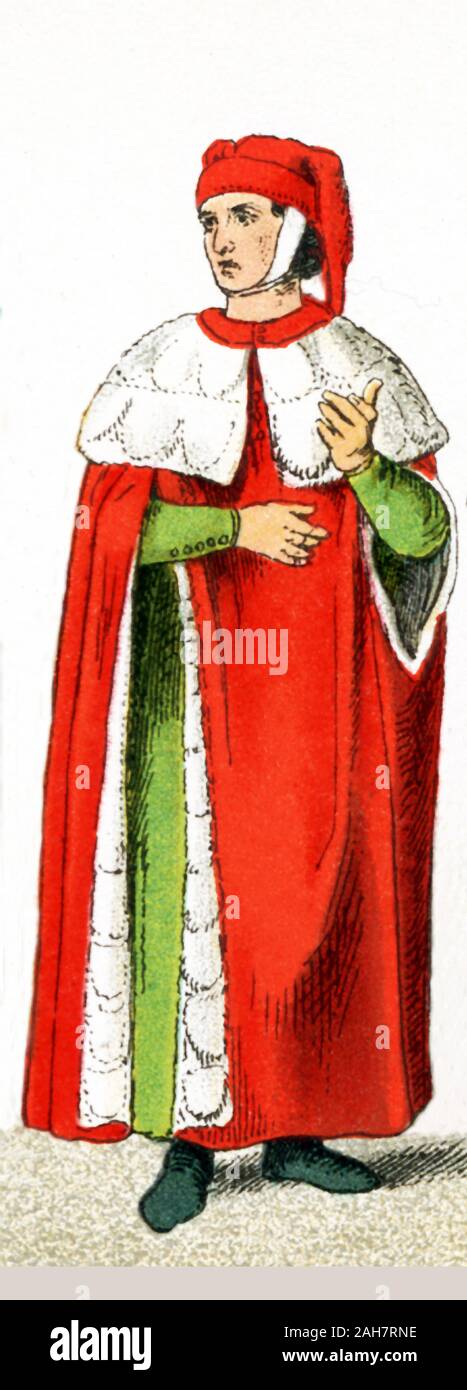 The figure in this image is an Italian man of rank from the A.D. 1300s. The illustration dates to 1882. Stock Photohttps://www.alamy.com/image-license-details/?v=1https://www.alamy.com/the-figure-in-this-image-is-an-italian-man-of-rank-from-the-ad-1300s-the-illustration-dates-to-1882-image337618442.html
The figure in this image is an Italian man of rank from the A.D. 1300s. The illustration dates to 1882. Stock Photohttps://www.alamy.com/image-license-details/?v=1https://www.alamy.com/the-figure-in-this-image-is-an-italian-man-of-rank-from-the-ad-1300s-the-illustration-dates-to-1882-image337618442.htmlRF2AH7RNE–The figure in this image is an Italian man of rank from the A.D. 1300s. The illustration dates to 1882.
 Bottle with Flowers of the Four Seasons Late 1300s Artist/maker unknown, Chinese Ming Dynasty Stock Photohttps://www.alamy.com/image-license-details/?v=1https://www.alamy.com/bottle-with-flowers-of-the-four-seasons-late-1300s-artistmaker-unknown-chinese-ming-dynasty-image559437923.html
Bottle with Flowers of the Four Seasons Late 1300s Artist/maker unknown, Chinese Ming Dynasty Stock Photohttps://www.alamy.com/image-license-details/?v=1https://www.alamy.com/bottle-with-flowers-of-the-four-seasons-late-1300s-artistmaker-unknown-chinese-ming-dynasty-image559437923.htmlRF2RE4GNR–Bottle with Flowers of the Four Seasons Late 1300s Artist/maker unknown, Chinese Ming Dynasty
 Triptych with the Madonna and the Crucifixion, Embriachi workshop, Northern Italy, late 1300s, bone reliefs with wood Stock Photohttps://www.alamy.com/image-license-details/?v=1https://www.alamy.com/triptych-with-the-madonna-and-the-crucifixion-embriachi-workshop-northern-italy-late-1300s-bone-reliefs-with-wood-image479509275.html
Triptych with the Madonna and the Crucifixion, Embriachi workshop, Northern Italy, late 1300s, bone reliefs with wood Stock Photohttps://www.alamy.com/image-license-details/?v=1https://www.alamy.com/triptych-with-the-madonna-and-the-crucifixion-embriachi-workshop-northern-italy-late-1300s-bone-reliefs-with-wood-image479509275.htmlRM2JT3EY7–Triptych with the Madonna and the Crucifixion, Embriachi workshop, Northern Italy, late 1300s, bone reliefs with wood
 vase with horses on water design, Yuan dynasty, Yuan dynasty, late 1300s, porcelain with underglaze blue, H: 11-5/8 in., 29.5 cm., Asian Art, Reimagined by Gibon, design of warm cheerful glowing of brightness and light rays radiance. Classic art reinvented with a modern twist. Photography inspired by futurism, embracing dynamic energy of modern technology, movement, speed and revolutionize culture. Stock Photohttps://www.alamy.com/image-license-details/?v=1https://www.alamy.com/vase-with-horses-on-water-design-yuan-dynasty-yuan-dynasty-late-1300s-porcelain-with-underglaze-blue-h-11-58-in-295-cm-asian-art-reimagined-by-gibon-design-of-warm-cheerful-glowing-of-brightness-and-light-rays-radiance-classic-art-reinvented-with-a-modern-twist-photography-inspired-by-futurism-embracing-dynamic-energy-of-modern-technology-movement-speed-and-revolutionize-culture-image349853943.html
vase with horses on water design, Yuan dynasty, Yuan dynasty, late 1300s, porcelain with underglaze blue, H: 11-5/8 in., 29.5 cm., Asian Art, Reimagined by Gibon, design of warm cheerful glowing of brightness and light rays radiance. Classic art reinvented with a modern twist. Photography inspired by futurism, embracing dynamic energy of modern technology, movement, speed and revolutionize culture. Stock Photohttps://www.alamy.com/image-license-details/?v=1https://www.alamy.com/vase-with-horses-on-water-design-yuan-dynasty-yuan-dynasty-late-1300s-porcelain-with-underglaze-blue-h-11-58-in-295-cm-asian-art-reimagined-by-gibon-design-of-warm-cheerful-glowing-of-brightness-and-light-rays-radiance-classic-art-reinvented-with-a-modern-twist-photography-inspired-by-futurism-embracing-dynamic-energy-of-modern-technology-movement-speed-and-revolutionize-culture-image349853943.htmlRF2B9567K–vase with horses on water design, Yuan dynasty, Yuan dynasty, late 1300s, porcelain with underglaze blue, H: 11-5/8 in., 29.5 cm., Asian Art, Reimagined by Gibon, design of warm cheerful glowing of brightness and light rays radiance. Classic art reinvented with a modern twist. Photography inspired by futurism, embracing dynamic energy of modern technology, movement, speed and revolutionize culture.
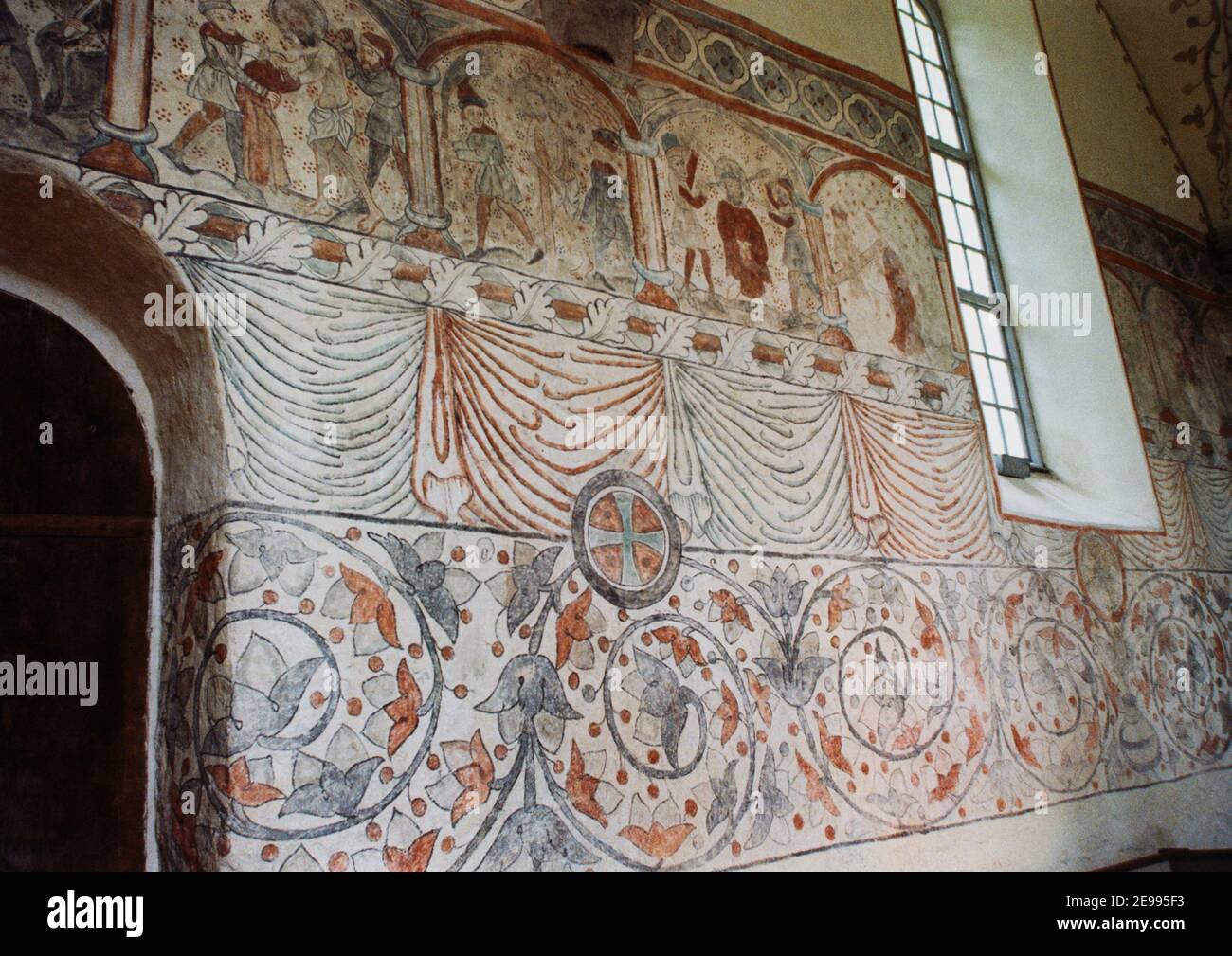 Famous late medieval religious wallpainting in church MÄSTERBY CHURCH at Gotland 2009 Stock Photohttps://www.alamy.com/image-license-details/?v=1https://www.alamy.com/famous-late-medieval-religious-wallpainting-in-church-msterby-church-at-gotland-2009-image401572279.html
Famous late medieval religious wallpainting in church MÄSTERBY CHURCH at Gotland 2009 Stock Photohttps://www.alamy.com/image-license-details/?v=1https://www.alamy.com/famous-late-medieval-religious-wallpainting-in-church-msterby-church-at-gotland-2009-image401572279.htmlRM2E995F3–Famous late medieval religious wallpainting in church MÄSTERBY CHURCH at Gotland 2009
 vase with horses on water design, Yuan dynasty, Yuan dynasty, late 1300s, porcelain with underglaze blue, H: 11-5/8 in., 29.5 cm., Asian Art Stock Photohttps://www.alamy.com/image-license-details/?v=1https://www.alamy.com/vase-with-horses-on-water-design-yuan-dynasty-yuan-dynasty-late-1300s-porcelain-with-underglaze-blue-h-11-58-in-295-cm-asian-art-image328775350.html
vase with horses on water design, Yuan dynasty, Yuan dynasty, late 1300s, porcelain with underglaze blue, H: 11-5/8 in., 29.5 cm., Asian Art Stock Photohttps://www.alamy.com/image-license-details/?v=1https://www.alamy.com/vase-with-horses-on-water-design-yuan-dynasty-yuan-dynasty-late-1300s-porcelain-with-underglaze-blue-h-11-58-in-295-cm-asian-art-image328775350.htmlRM2A2W08P–vase with horses on water design, Yuan dynasty, Yuan dynasty, late 1300s, porcelain with underglaze blue, H: 11-5/8 in., 29.5 cm., Asian Art
 Plate with Peony Decoration, late 1300s-early 1400s. China, Yuan dynasty (1271-1368). Carved cinnabar lacquer on wood; diameter: 16.5 cm (6 1/2 in.). Stock Photohttps://www.alamy.com/image-license-details/?v=1https://www.alamy.com/plate-with-peony-decoration-late-1300s-early-1400s-china-yuan-dynasty-1271-1368-carved-cinnabar-lacquer-on-wood-diameter-165-cm-6-12-in-image448105187.html
Plate with Peony Decoration, late 1300s-early 1400s. China, Yuan dynasty (1271-1368). Carved cinnabar lacquer on wood; diameter: 16.5 cm (6 1/2 in.). Stock Photohttps://www.alamy.com/image-license-details/?v=1https://www.alamy.com/plate-with-peony-decoration-late-1300s-early-1400s-china-yuan-dynasty-1271-1368-carved-cinnabar-lacquer-on-wood-diameter-165-cm-6-12-in-image448105187.htmlRM2H10XMK–Plate with Peony Decoration, late 1300s-early 1400s. China, Yuan dynasty (1271-1368). Carved cinnabar lacquer on wood; diameter: 16.5 cm (6 1/2 in.).
 Man holds a baby before traditional circumcision ritual in Rhodope Mountain village of Ribnovo, Bulgaria on 03 October, 2021. Pomaks perform a traditional Muslim circumcision ritual for boys until they are five years old. Circumcision intervention is done by surgeon working for the representation of the chief mufti of the Muslims in Bulgaria. Citizens of Ribnovo are Bulgarian-speaking Muslims, sometimes referred to as 'Pomaks. The Pomak Muslims are dwelling mainly in the Rhodope Mountains of South Bulgaria and North Greece. They are believed to have converted to Islam in the late 1300s. (Photo Stock Photohttps://www.alamy.com/image-license-details/?v=1https://www.alamy.com/man-holds-a-baby-before-traditional-circumcision-ritual-in-rhodope-mountain-village-of-ribnovo-bulgaria-on-03-october-2021-pomaks-perform-a-traditional-muslim-circumcision-ritual-for-boys-until-they-are-five-years-old-circumcision-intervention-is-done-by-surgeon-working-for-the-representation-of-the-chief-mufti-of-the-muslims-in-bulgaria-citizens-of-ribnovo-are-bulgarian-speaking-muslims-sometimes-referred-to-as-pomaks-the-pomak-muslims-are-dwelling-mainly-in-the-rhodope-mountains-of-south-bulgaria-and-north-greece-they-are-believed-to-have-converted-to-islam-in-the-late-1300s-photo-image489752502.html
Man holds a baby before traditional circumcision ritual in Rhodope Mountain village of Ribnovo, Bulgaria on 03 October, 2021. Pomaks perform a traditional Muslim circumcision ritual for boys until they are five years old. Circumcision intervention is done by surgeon working for the representation of the chief mufti of the Muslims in Bulgaria. Citizens of Ribnovo are Bulgarian-speaking Muslims, sometimes referred to as 'Pomaks. The Pomak Muslims are dwelling mainly in the Rhodope Mountains of South Bulgaria and North Greece. They are believed to have converted to Islam in the late 1300s. (Photo Stock Photohttps://www.alamy.com/image-license-details/?v=1https://www.alamy.com/man-holds-a-baby-before-traditional-circumcision-ritual-in-rhodope-mountain-village-of-ribnovo-bulgaria-on-03-october-2021-pomaks-perform-a-traditional-muslim-circumcision-ritual-for-boys-until-they-are-five-years-old-circumcision-intervention-is-done-by-surgeon-working-for-the-representation-of-the-chief-mufti-of-the-muslims-in-bulgaria-citizens-of-ribnovo-are-bulgarian-speaking-muslims-sometimes-referred-to-as-pomaks-the-pomak-muslims-are-dwelling-mainly-in-the-rhodope-mountains-of-south-bulgaria-and-north-greece-they-are-believed-to-have-converted-to-islam-in-the-late-1300s-photo-image489752502.htmlRM2KCP48P–Man holds a baby before traditional circumcision ritual in Rhodope Mountain village of Ribnovo, Bulgaria on 03 October, 2021. Pomaks perform a traditional Muslim circumcision ritual for boys until they are five years old. Circumcision intervention is done by surgeon working for the representation of the chief mufti of the Muslims in Bulgaria. Citizens of Ribnovo are Bulgarian-speaking Muslims, sometimes referred to as 'Pomaks. The Pomak Muslims are dwelling mainly in the Rhodope Mountains of South Bulgaria and North Greece. They are believed to have converted to Islam in the late 1300s. (Photo
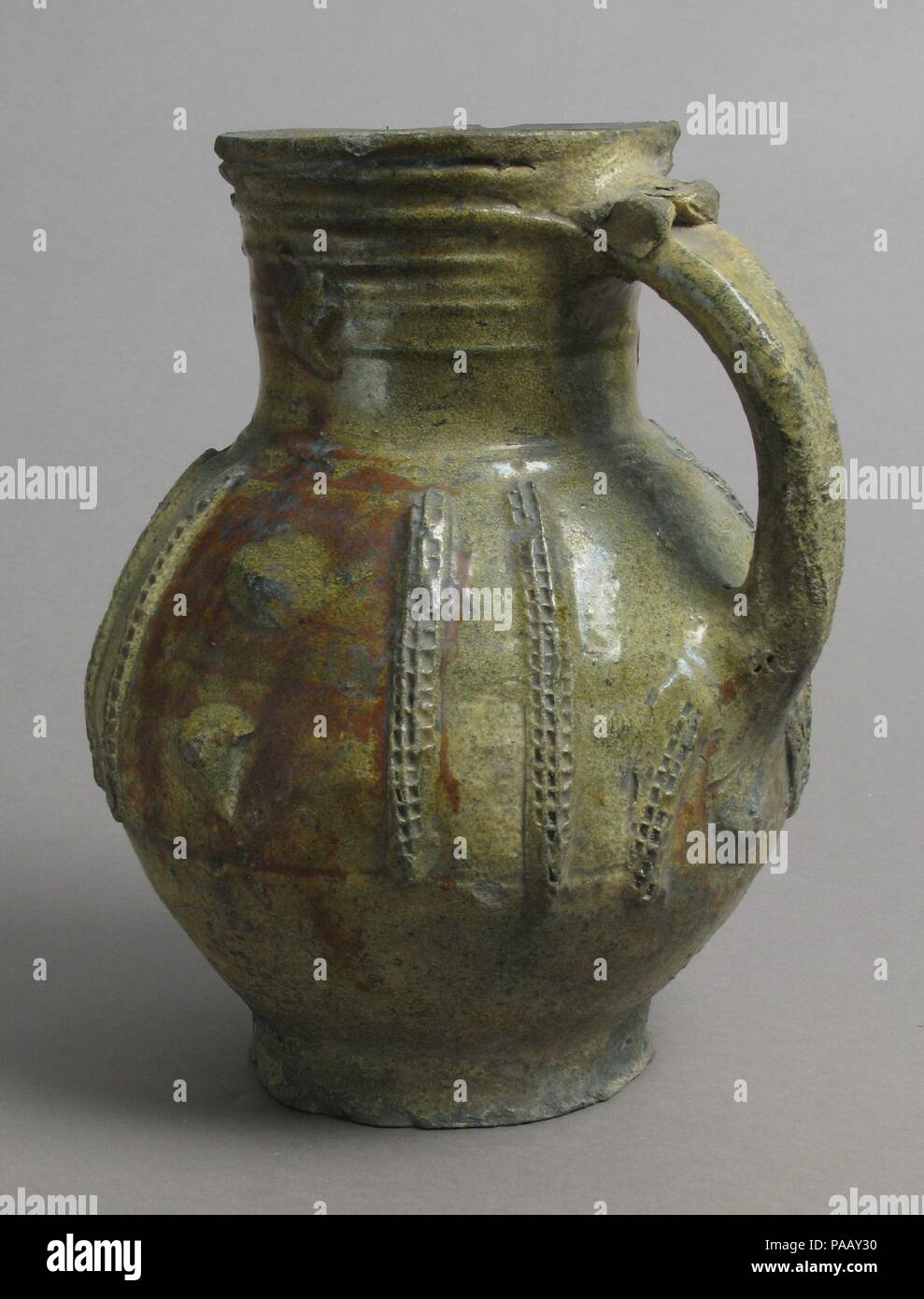 Jug. Culture: French. Dimensions: Overall: 8 1/8 x 6 7/8 x 6 5/16 in. (20.6 x 17.5 x 16.1 cm). Date: late 1200s-early 1300s. Museum: Metropolitan Museum of Art, New York, USA. Stock Photohttps://www.alamy.com/image-license-details/?v=1https://www.alamy.com/jug-culture-french-dimensions-overall-8-18-x-6-78-x-6-516-in-206-x-175-x-161-cm-date-late-1200s-early-1300s-museum-metropolitan-museum-of-art-new-york-usa-image212911748.html
Jug. Culture: French. Dimensions: Overall: 8 1/8 x 6 7/8 x 6 5/16 in. (20.6 x 17.5 x 16.1 cm). Date: late 1200s-early 1300s. Museum: Metropolitan Museum of Art, New York, USA. Stock Photohttps://www.alamy.com/image-license-details/?v=1https://www.alamy.com/jug-culture-french-dimensions-overall-8-18-x-6-78-x-6-516-in-206-x-175-x-161-cm-date-late-1200s-early-1300s-museum-metropolitan-museum-of-art-new-york-usa-image212911748.htmlRMPAAY30–Jug. Culture: French. Dimensions: Overall: 8 1/8 x 6 7/8 x 6 5/16 in. (20.6 x 17.5 x 16.1 cm). Date: late 1200s-early 1300s. Museum: Metropolitan Museum of Art, New York, USA.
 An angel helps the Saved to rise from their coffins. Detail of much-restored Last Judgement mosaic by late-1300s Venetian craftsmen that surmounts the Golden Portal of the Cathedral of St. Vitus in Prague, Czechia. Stock Photohttps://www.alamy.com/image-license-details/?v=1https://www.alamy.com/an-angel-helps-the-saved-to-rise-from-their-coffins-detail-of-much-restored-last-judgement-mosaic-by-late-1300s-venetian-craftsmen-that-surmounts-the-golden-portal-of-the-cathedral-of-st-vitus-in-prague-czechia-image361266708.html
An angel helps the Saved to rise from their coffins. Detail of much-restored Last Judgement mosaic by late-1300s Venetian craftsmen that surmounts the Golden Portal of the Cathedral of St. Vitus in Prague, Czechia. Stock Photohttps://www.alamy.com/image-license-details/?v=1https://www.alamy.com/an-angel-helps-the-saved-to-rise-from-their-coffins-detail-of-much-restored-last-judgement-mosaic-by-late-1300s-venetian-craftsmen-that-surmounts-the-golden-portal-of-the-cathedral-of-st-vitus-in-prague-czechia-image361266708.htmlRF2BYN3AC–An angel helps the Saved to rise from their coffins. Detail of much-restored Last Judgement mosaic by late-1300s Venetian craftsmen that surmounts the Golden Portal of the Cathedral of St. Vitus in Prague, Czechia.
 Kilnave Chapel on Loch Gruinart, Islay, Scotland, UK, that was built around late 1300's. Stock Photohttps://www.alamy.com/image-license-details/?v=1https://www.alamy.com/kilnave-chapel-on-loch-gruinart-islay-scotland-uk-that-was-built-around-late-1300s-image598887638.html
Kilnave Chapel on Loch Gruinart, Islay, Scotland, UK, that was built around late 1300's. Stock Photohttps://www.alamy.com/image-license-details/?v=1https://www.alamy.com/kilnave-chapel-on-loch-gruinart-islay-scotland-uk-that-was-built-around-late-1300s-image598887638.htmlRM2WP9K86–Kilnave Chapel on Loch Gruinart, Islay, Scotland, UK, that was built around late 1300's.
 Brocaded Velvet, late 1300s. Stock Photohttps://www.alamy.com/image-license-details/?v=1https://www.alamy.com/brocaded-velvet-late-1300s-image330080375.html
Brocaded Velvet, late 1300s. Stock Photohttps://www.alamy.com/image-license-details/?v=1https://www.alamy.com/brocaded-velvet-late-1300s-image330080375.htmlRM2A50CTR–Brocaded Velvet, late 1300s.
 Sant’Anna Metterza (the Virgin Mary and Christ Child with Saint Anne, mother of Mary and grandmother of Jesus). Fresco painted in the late 1300s in the north apse of the Chiesa di Santa Maria del Tiglio, at Gravedona, Lombardy, Italy. Stock Photohttps://www.alamy.com/image-license-details/?v=1https://www.alamy.com/santanna-metterza-the-virgin-mary-and-christ-child-with-saint-anne-mother-of-mary-and-grandmother-of-jesus-fresco-painted-in-the-late-1300s-in-the-north-apse-of-the-chiesa-di-santa-maria-del-tiglio-at-gravedona-lombardy-italy-image414917971.html
Sant’Anna Metterza (the Virgin Mary and Christ Child with Saint Anne, mother of Mary and grandmother of Jesus). Fresco painted in the late 1300s in the north apse of the Chiesa di Santa Maria del Tiglio, at Gravedona, Lombardy, Italy. Stock Photohttps://www.alamy.com/image-license-details/?v=1https://www.alamy.com/santanna-metterza-the-virgin-mary-and-christ-child-with-saint-anne-mother-of-mary-and-grandmother-of-jesus-fresco-painted-in-the-late-1300s-in-the-north-apse-of-the-chiesa-di-santa-maria-del-tiglio-at-gravedona-lombardy-italy-image414917971.htmlRF2F3142Y–Sant’Anna Metterza (the Virgin Mary and Christ Child with Saint Anne, mother of Mary and grandmother of Jesus). Fresco painted in the late 1300s in the north apse of the Chiesa di Santa Maria del Tiglio, at Gravedona, Lombardy, Italy.
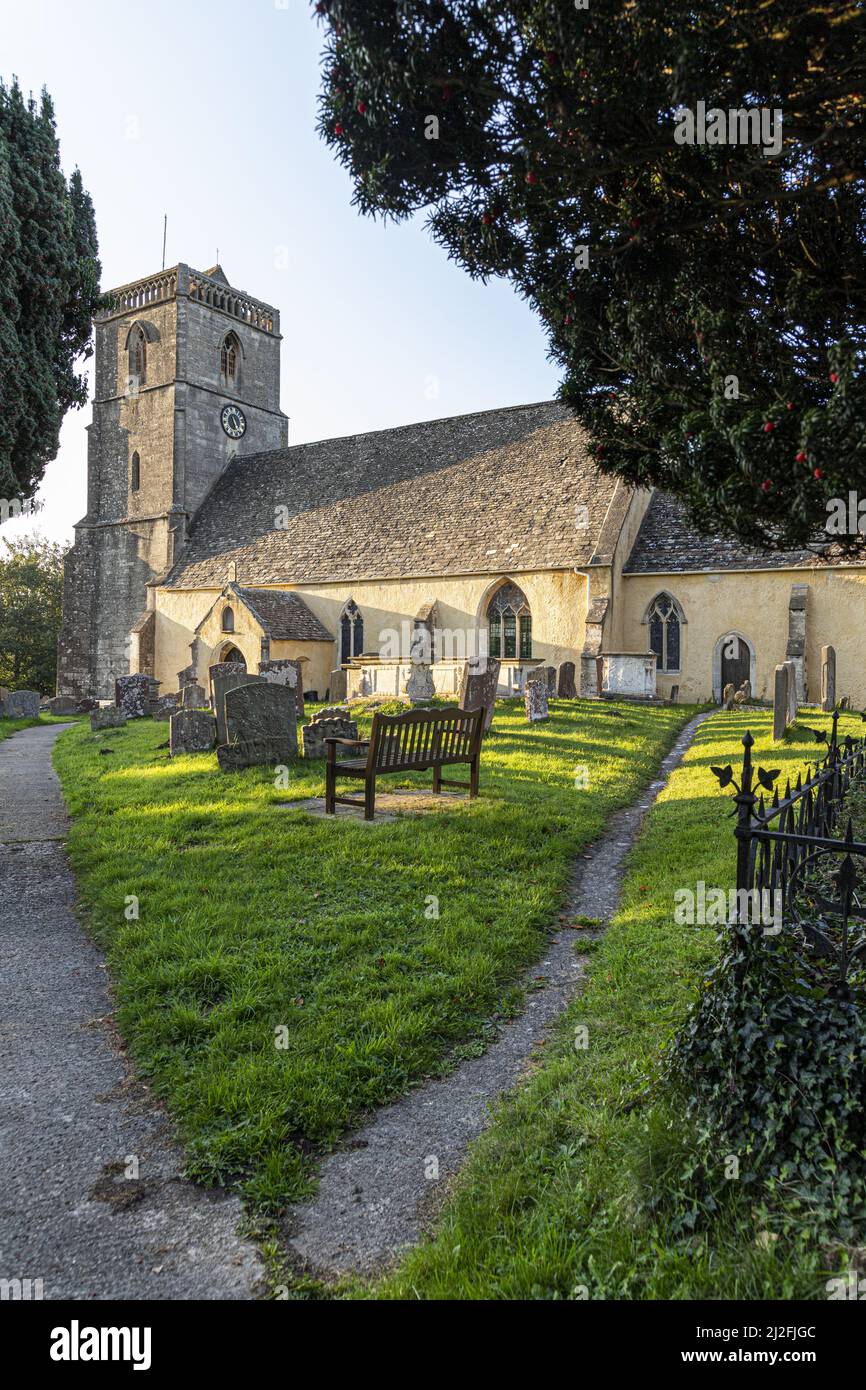 Evening light on the parish church of St. Mary the Virgin (dating back to the 14th century) in the Severnside village of Arlingham, Gloucestershire UK Stock Photohttps://www.alamy.com/image-license-details/?v=1https://www.alamy.com/evening-light-on-the-parish-church-of-st-mary-the-virgin-dating-back-to-the-14th-century-in-the-severnside-village-of-arlingham-gloucestershire-uk-image466253100.html
Evening light on the parish church of St. Mary the Virgin (dating back to the 14th century) in the Severnside village of Arlingham, Gloucestershire UK Stock Photohttps://www.alamy.com/image-license-details/?v=1https://www.alamy.com/evening-light-on-the-parish-church-of-st-mary-the-virgin-dating-back-to-the-14th-century-in-the-severnside-village-of-arlingham-gloucestershire-uk-image466253100.htmlRF2J2FJGC–Evening light on the parish church of St. Mary the Virgin (dating back to the 14th century) in the Severnside village of Arlingham, Gloucestershire UK
 Within sight of the safe haven of Venice, returning Holy Land pilgrims are saved from drowning by prayer, even as winged demons circle the mast of their ship. Fragmentary late-1300s or early 1400s fresco in the Chiesa di San Francesco, Lucignano, Tuscany, Italy. Stock Photohttps://www.alamy.com/image-license-details/?v=1https://www.alamy.com/within-sight-of-the-safe-haven-of-venice-returning-holy-land-pilgrims-are-saved-from-drowning-by-prayer-even-as-winged-demons-circle-the-mast-of-their-ship-fragmentary-late-1300s-or-early-1400s-fresco-in-the-chiesa-di-san-francesco-lucignano-tuscany-italy-image359572404.html
Within sight of the safe haven of Venice, returning Holy Land pilgrims are saved from drowning by prayer, even as winged demons circle the mast of their ship. Fragmentary late-1300s or early 1400s fresco in the Chiesa di San Francesco, Lucignano, Tuscany, Italy. Stock Photohttps://www.alamy.com/image-license-details/?v=1https://www.alamy.com/within-sight-of-the-safe-haven-of-venice-returning-holy-land-pilgrims-are-saved-from-drowning-by-prayer-even-as-winged-demons-circle-the-mast-of-their-ship-fragmentary-late-1300s-or-early-1400s-fresco-in-the-chiesa-di-san-francesco-lucignano-tuscany-italy-image359572404.htmlRF2BTYX7G–Within sight of the safe haven of Venice, returning Holy Land pilgrims are saved from drowning by prayer, even as winged demons circle the mast of their ship. Fragmentary late-1300s or early 1400s fresco in the Chiesa di San Francesco, Lucignano, Tuscany, Italy.
 14th Century XIV 1300s Italy soldiers Stock Photohttps://www.alamy.com/image-license-details/?v=1https://www.alamy.com/14th-century-xiv-1300s-italy-soldiers-image63219515.html
14th Century XIV 1300s Italy soldiers Stock Photohttps://www.alamy.com/image-license-details/?v=1https://www.alamy.com/14th-century-xiv-1300s-italy-soldiers-image63219515.htmlRFDJRW3R–14th Century XIV 1300s Italy soldiers
 Early Christian virgin martyr, Saint Susanna of Rome. Fresco painted in the late 1300s in the north apse of the Chiesa di Santa Maria del Tiglio, at Gravedona, Lombardy, Italy. According to medieval legend, Santa Susanna was beheaded around 295 AD for refusing to marry a pagan relative of the Roman Emperor Diocletian, and for converting two of his officials to Christianity. Stock Photohttps://www.alamy.com/image-license-details/?v=1https://www.alamy.com/early-christian-virgin-martyr-saint-susanna-of-rome-fresco-painted-in-the-late-1300s-in-the-north-apse-of-the-chiesa-di-santa-maria-del-tiglio-at-gravedona-lombardy-italy-according-to-medieval-legend-santa-susanna-was-beheaded-around-295-ad-for-refusing-to-marry-a-pagan-relative-of-the-roman-emperor-diocletian-and-for-converting-two-of-his-officials-to-christianity-image415199695.html
Early Christian virgin martyr, Saint Susanna of Rome. Fresco painted in the late 1300s in the north apse of the Chiesa di Santa Maria del Tiglio, at Gravedona, Lombardy, Italy. According to medieval legend, Santa Susanna was beheaded around 295 AD for refusing to marry a pagan relative of the Roman Emperor Diocletian, and for converting two of his officials to Christianity. Stock Photohttps://www.alamy.com/image-license-details/?v=1https://www.alamy.com/early-christian-virgin-martyr-saint-susanna-of-rome-fresco-painted-in-the-late-1300s-in-the-north-apse-of-the-chiesa-di-santa-maria-del-tiglio-at-gravedona-lombardy-italy-according-to-medieval-legend-santa-susanna-was-beheaded-around-295-ad-for-refusing-to-marry-a-pagan-relative-of-the-roman-emperor-diocletian-and-for-converting-two-of-his-officials-to-christianity-image415199695.htmlRF2F3DYCF–Early Christian virgin martyr, Saint Susanna of Rome. Fresco painted in the late 1300s in the north apse of the Chiesa di Santa Maria del Tiglio, at Gravedona, Lombardy, Italy. According to medieval legend, Santa Susanna was beheaded around 295 AD for refusing to marry a pagan relative of the Roman Emperor Diocletian, and for converting two of his officials to Christianity.
 Europe. Middle Ages. 14th century. Lady and nobleman. Chromolithography. 'Historia Universal', by César Cantú. Volume VI, 1885. Stock Photohttps://www.alamy.com/image-license-details/?v=1https://www.alamy.com/europe-middle-ages-14th-century-lady-and-nobleman-chromolithography-historia-universal-by-csar-cant-volume-vi-1885-image594582195.html
Europe. Middle Ages. 14th century. Lady and nobleman. Chromolithography. 'Historia Universal', by César Cantú. Volume VI, 1885. Stock Photohttps://www.alamy.com/image-license-details/?v=1https://www.alamy.com/europe-middle-ages-14th-century-lady-and-nobleman-chromolithography-historia-universal-by-csar-cant-volume-vi-1885-image594582195.htmlRM2WF9FJB–Europe. Middle Ages. 14th century. Lady and nobleman. Chromolithography. 'Historia Universal', by César Cantú. Volume VI, 1885.
 The Birth of John the Baptist, miniature on vellum by Niccolò da Bologna, National Gallery of Art, Washington DC, late 14th century - Niccolò di Giacomo da Bologna (c. 1325 – c. 1403), usually known as Niccolò da Bologna, was one of the most important and prolific manuscript illuminators in 14th-century Bologna. Stock Photohttps://www.alamy.com/image-license-details/?v=1https://www.alamy.com/the-birth-of-john-the-baptist-miniature-on-vellum-by-niccol-da-bologna-national-gallery-of-art-washington-dc-late-14th-century-niccol-di-giacomo-da-bologna-c-1325-c-1403-usually-known-as-niccol-da-bologna-was-one-of-the-most-important-and-prolific-manuscript-illuminators-in-14th-century-bologna-image625287096.html
The Birth of John the Baptist, miniature on vellum by Niccolò da Bologna, National Gallery of Art, Washington DC, late 14th century - Niccolò di Giacomo da Bologna (c. 1325 – c. 1403), usually known as Niccolò da Bologna, was one of the most important and prolific manuscript illuminators in 14th-century Bologna. Stock Photohttps://www.alamy.com/image-license-details/?v=1https://www.alamy.com/the-birth-of-john-the-baptist-miniature-on-vellum-by-niccol-da-bologna-national-gallery-of-art-washington-dc-late-14th-century-niccol-di-giacomo-da-bologna-c-1325-c-1403-usually-known-as-niccol-da-bologna-was-one-of-the-most-important-and-prolific-manuscript-illuminators-in-14th-century-bologna-image625287096.htmlRM2Y98820–The Birth of John the Baptist, miniature on vellum by Niccolò da Bologna, National Gallery of Art, Washington DC, late 14th century - Niccolò di Giacomo da Bologna (c. 1325 – c. 1403), usually known as Niccolò da Bologna, was one of the most important and prolific manuscript illuminators in 14th-century Bologna.
 The figure shown here is Bernabo Visconti (died 1385). Bernabo Visconti was an Italian soldier and statesman, who was the Lord of Milan. The illustration dates to 1882. Stock Photohttps://www.alamy.com/image-license-details/?v=1https://www.alamy.com/the-figure-shown-here-is-bernabo-visconti-died-1385-bernabo-visconti-was-an-italian-soldier-and-statesman-who-was-the-lord-of-milan-the-illustration-dates-to-1882-image333900174.html
The figure shown here is Bernabo Visconti (died 1385). Bernabo Visconti was an Italian soldier and statesman, who was the Lord of Milan. The illustration dates to 1882. Stock Photohttps://www.alamy.com/image-license-details/?v=1https://www.alamy.com/the-figure-shown-here-is-bernabo-visconti-died-1385-bernabo-visconti-was-an-italian-soldier-and-statesman-who-was-the-lord-of-milan-the-illustration-dates-to-1882-image333900174.htmlRF2AB6D26–The figure shown here is Bernabo Visconti (died 1385). Bernabo Visconti was an Italian soldier and statesman, who was the Lord of Milan. The illustration dates to 1882.
 GIOTTO di Bondone (b. 1267, Vespignano, d. 1337, Firenze) Last Judgement, detail of Jesus 1306 Fresco, 1000 x 840 cm (full fresco) Cappella Scrovegni (Arena Chapel), Padua The figure of Christ the judge is enclosed within a mandorla, surrounded by angels, which seems to be independent of its surroundings. It occupies the centre of a concave recession created by the curve of the ledge supporting the thrones of the twelve apostles (a conception which calls to mind certain late fifteenth and early sixteenth century works like Raphael's Dispute over the Holy Sacrament in the Stanza della Segnatu Stock Photohttps://www.alamy.com/image-license-details/?v=1https://www.alamy.com/giotto-di-bondone-b-1267-vespignano-d-1337-firenze-last-judgement-detail-of-jesus-1306-fresco-1000-x-840-cm-full-fresco-cappella-scrovegni-arena-chapel-padua-the-figure-of-christ-the-judge-is-enclosed-within-a-mandorla-surrounded-by-angels-which-seems-to-be-independent-of-its-surroundings-it-occupies-the-centre-of-a-concave-recession-created-by-the-curve-of-the-ledge-supporting-the-thrones-of-the-twelve-apostles-a-conception-which-calls-to-mind-certain-late-fifteenth-and-early-sixteenth-century-works-like-raphaels-dispute-over-the-holy-sacrament-in-the-stanza-della-segnatu-image625059298.html
GIOTTO di Bondone (b. 1267, Vespignano, d. 1337, Firenze) Last Judgement, detail of Jesus 1306 Fresco, 1000 x 840 cm (full fresco) Cappella Scrovegni (Arena Chapel), Padua The figure of Christ the judge is enclosed within a mandorla, surrounded by angels, which seems to be independent of its surroundings. It occupies the centre of a concave recession created by the curve of the ledge supporting the thrones of the twelve apostles (a conception which calls to mind certain late fifteenth and early sixteenth century works like Raphael's Dispute over the Holy Sacrament in the Stanza della Segnatu Stock Photohttps://www.alamy.com/image-license-details/?v=1https://www.alamy.com/giotto-di-bondone-b-1267-vespignano-d-1337-firenze-last-judgement-detail-of-jesus-1306-fresco-1000-x-840-cm-full-fresco-cappella-scrovegni-arena-chapel-padua-the-figure-of-christ-the-judge-is-enclosed-within-a-mandorla-surrounded-by-angels-which-seems-to-be-independent-of-its-surroundings-it-occupies-the-centre-of-a-concave-recession-created-by-the-curve-of-the-ledge-supporting-the-thrones-of-the-twelve-apostles-a-conception-which-calls-to-mind-certain-late-fifteenth-and-early-sixteenth-century-works-like-raphaels-dispute-over-the-holy-sacrament-in-the-stanza-della-segnatu-image625059298.htmlRM2Y8WWEA–GIOTTO di Bondone (b. 1267, Vespignano, d. 1337, Firenze) Last Judgement, detail of Jesus 1306 Fresco, 1000 x 840 cm (full fresco) Cappella Scrovegni (Arena Chapel), Padua The figure of Christ the judge is enclosed within a mandorla, surrounded by angels, which seems to be independent of its surroundings. It occupies the centre of a concave recession created by the curve of the ledge supporting the thrones of the twelve apostles (a conception which calls to mind certain late fifteenth and early sixteenth century works like Raphael's Dispute over the Holy Sacrament in the Stanza della Segnatu
 The late 14th century astronomical clock in Wells Cathedral, Wells, Somerset UK Stock Photohttps://www.alamy.com/image-license-details/?v=1https://www.alamy.com/the-late-14th-century-astronomical-clock-in-wells-cathedral-wells-somerset-uk-image416253806.html
The late 14th century astronomical clock in Wells Cathedral, Wells, Somerset UK Stock Photohttps://www.alamy.com/image-license-details/?v=1https://www.alamy.com/the-late-14th-century-astronomical-clock-in-wells-cathedral-wells-somerset-uk-image416253806.htmlRM2F55YYA–The late 14th century astronomical clock in Wells Cathedral, Wells, Somerset UK
 vase with horses on water design, Yuan dynasty, Yuan dynasty, late 1300s, porcelain with underglaze blue, H: 11-5/8 in., 29.5 cm., Asian Art, Reimagined by Gibon, design of warm cheerful glowing of brightness and light rays radiance. Classic art reinvented with a modern twist. Photography inspired by futurism, embracing dynamic energy of modern technology, movement, speed and revolutionize culture. Stock Photohttps://www.alamy.com/image-license-details/?v=1https://www.alamy.com/vase-with-horses-on-water-design-yuan-dynasty-yuan-dynasty-late-1300s-porcelain-with-underglaze-blue-h-11-58-in-295-cm-asian-art-reimagined-by-gibon-design-of-warm-cheerful-glowing-of-brightness-and-light-rays-radiance-classic-art-reinvented-with-a-modern-twist-photography-inspired-by-futurism-embracing-dynamic-energy-of-modern-technology-movement-speed-and-revolutionize-culture-image349853940.html
vase with horses on water design, Yuan dynasty, Yuan dynasty, late 1300s, porcelain with underglaze blue, H: 11-5/8 in., 29.5 cm., Asian Art, Reimagined by Gibon, design of warm cheerful glowing of brightness and light rays radiance. Classic art reinvented with a modern twist. Photography inspired by futurism, embracing dynamic energy of modern technology, movement, speed and revolutionize culture. Stock Photohttps://www.alamy.com/image-license-details/?v=1https://www.alamy.com/vase-with-horses-on-water-design-yuan-dynasty-yuan-dynasty-late-1300s-porcelain-with-underglaze-blue-h-11-58-in-295-cm-asian-art-reimagined-by-gibon-design-of-warm-cheerful-glowing-of-brightness-and-light-rays-radiance-classic-art-reinvented-with-a-modern-twist-photography-inspired-by-futurism-embracing-dynamic-energy-of-modern-technology-movement-speed-and-revolutionize-culture-image349853940.htmlRF2B9567G–vase with horses on water design, Yuan dynasty, Yuan dynasty, late 1300s, porcelain with underglaze blue, H: 11-5/8 in., 29.5 cm., Asian Art, Reimagined by Gibon, design of warm cheerful glowing of brightness and light rays radiance. Classic art reinvented with a modern twist. Photography inspired by futurism, embracing dynamic energy of modern technology, movement, speed and revolutionize culture.
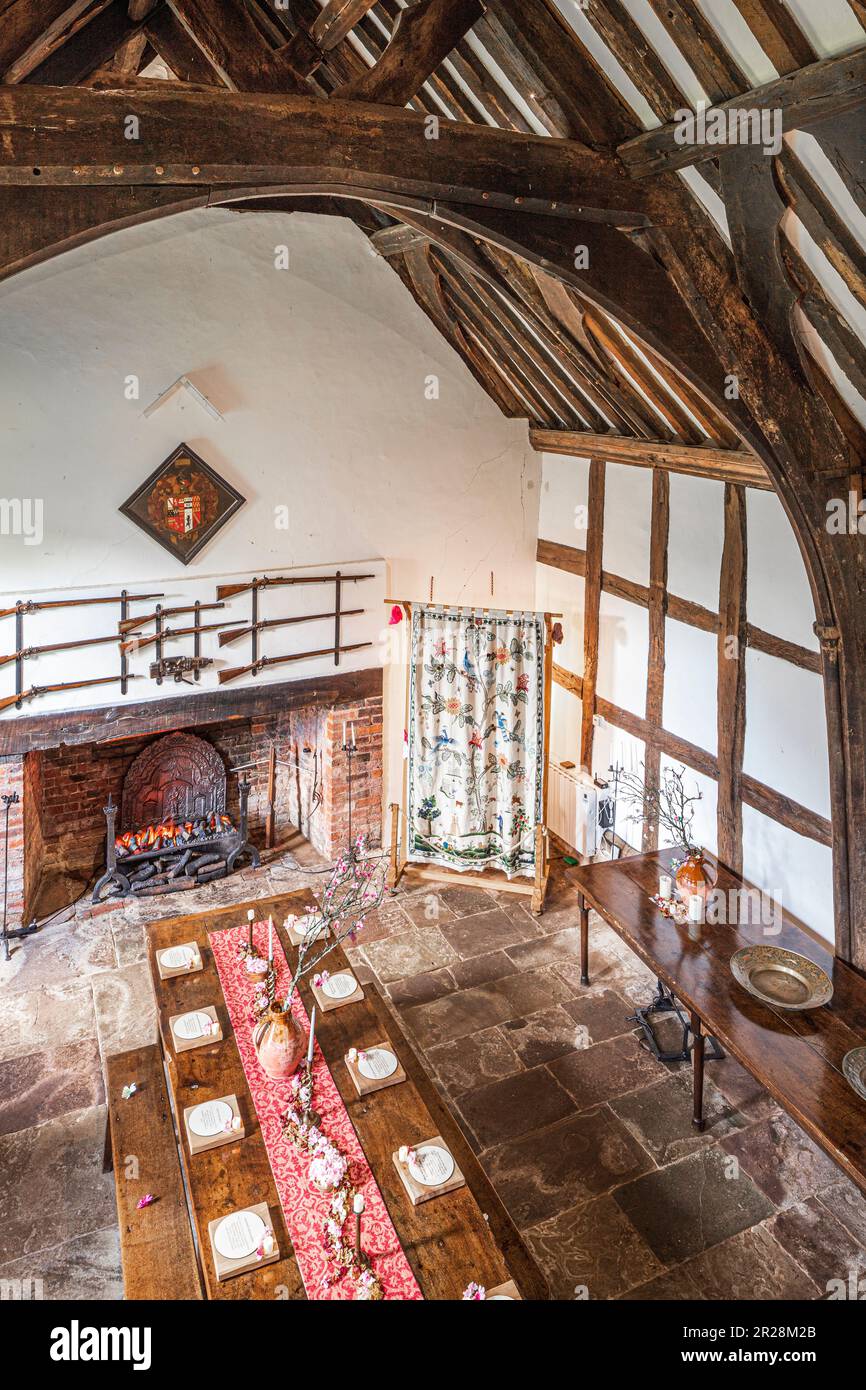 The interior of the late 14th or early 15th century timber framed Lower Brockhampton Manor House near Bromyard, Herefordshire, England UK Stock Photohttps://www.alamy.com/image-license-details/?v=1https://www.alamy.com/the-interior-of-the-late-14th-or-early-15th-century-timber-framed-lower-brockhampton-manor-house-near-bromyard-herefordshire-england-uk-image552152451.html
The interior of the late 14th or early 15th century timber framed Lower Brockhampton Manor House near Bromyard, Herefordshire, England UK Stock Photohttps://www.alamy.com/image-license-details/?v=1https://www.alamy.com/the-interior-of-the-late-14th-or-early-15th-century-timber-framed-lower-brockhampton-manor-house-near-bromyard-herefordshire-england-uk-image552152451.htmlRM2R28M2B–The interior of the late 14th or early 15th century timber framed Lower Brockhampton Manor House near Bromyard, Herefordshire, England UK
 vase with horses on water design, Yuan dynasty, Yuan dynasty, late 1300s, porcelain with underglaze blue, H: 11-5/8 in., 29.5 cm., Asian Art Stock Photohttps://www.alamy.com/image-license-details/?v=1https://www.alamy.com/vase-with-horses-on-water-design-yuan-dynasty-yuan-dynasty-late-1300s-porcelain-with-underglaze-blue-h-11-58-in-295-cm-asian-art-image328775351.html
vase with horses on water design, Yuan dynasty, Yuan dynasty, late 1300s, porcelain with underglaze blue, H: 11-5/8 in., 29.5 cm., Asian Art Stock Photohttps://www.alamy.com/image-license-details/?v=1https://www.alamy.com/vase-with-horses-on-water-design-yuan-dynasty-yuan-dynasty-late-1300s-porcelain-with-underglaze-blue-h-11-58-in-295-cm-asian-art-image328775351.htmlRM2A2W08R–vase with horses on water design, Yuan dynasty, Yuan dynasty, late 1300s, porcelain with underglaze blue, H: 11-5/8 in., 29.5 cm., Asian Art
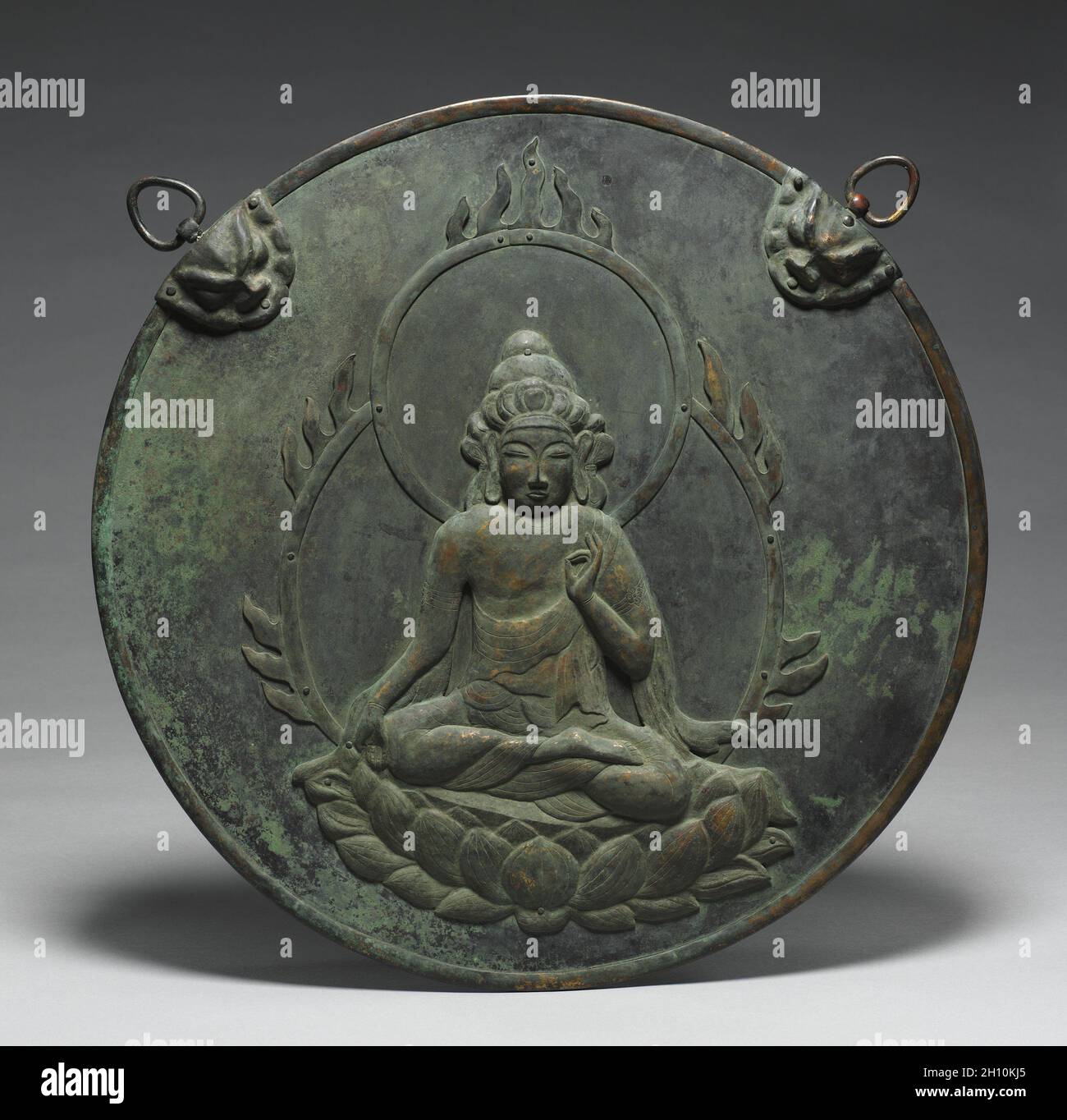 Votive Hanging with Image of Kannon (Kannon Kakebotoke), mid- to late 1300s. Japan, Nanbokuchō period (1336-92). Bronze with repoussé and etching; diameter: 52.5 cm (20 11/16 in.). Stock Photohttps://www.alamy.com/image-license-details/?v=1https://www.alamy.com/votive-hanging-with-image-of-kannon-kannon-kakebotoke-mid-to-late-1300s-japan-nanbokuch-period-1336-92-bronze-with-repouss-and-etching-diameter-525-cm-20-1116-in-image448099629.html
Votive Hanging with Image of Kannon (Kannon Kakebotoke), mid- to late 1300s. Japan, Nanbokuchō period (1336-92). Bronze with repoussé and etching; diameter: 52.5 cm (20 11/16 in.). Stock Photohttps://www.alamy.com/image-license-details/?v=1https://www.alamy.com/votive-hanging-with-image-of-kannon-kannon-kakebotoke-mid-to-late-1300s-japan-nanbokuch-period-1336-92-bronze-with-repouss-and-etching-diameter-525-cm-20-1116-in-image448099629.htmlRM2H10KJ5–Votive Hanging with Image of Kannon (Kannon Kakebotoke), mid- to late 1300s. Japan, Nanbokuchō period (1336-92). Bronze with repoussé and etching; diameter: 52.5 cm (20 11/16 in.).
 Woman holds a boy before traditional circumcision ritual in Rhodope Mountain village of Ribnovo, Bulgaria on 03 October, 2021. Pomaks perform a traditional Muslim circumcision ritual for boys until they are five years old. Circumcision intervention is done by surgeon working for the representation of the chief mufti of the Muslims in Bulgaria. Citizens of Ribnovo are Bulgarian-speaking Muslims, sometimes referred to as 'Pomaks. The Pomak Muslims are dwelling mainly in the Rhodope Mountains of South Bulgaria and North Greece. They are believed to have converted to Islam in the late 1300s. (Phot Stock Photohttps://www.alamy.com/image-license-details/?v=1https://www.alamy.com/woman-holds-a-boy-before-traditional-circumcision-ritual-in-rhodope-mountain-village-of-ribnovo-bulgaria-on-03-october-2021-pomaks-perform-a-traditional-muslim-circumcision-ritual-for-boys-until-they-are-five-years-old-circumcision-intervention-is-done-by-surgeon-working-for-the-representation-of-the-chief-mufti-of-the-muslims-in-bulgaria-citizens-of-ribnovo-are-bulgarian-speaking-muslims-sometimes-referred-to-as-pomaks-the-pomak-muslims-are-dwelling-mainly-in-the-rhodope-mountains-of-south-bulgaria-and-north-greece-they-are-believed-to-have-converted-to-islam-in-the-late-1300s-phot-image489752506.html
Woman holds a boy before traditional circumcision ritual in Rhodope Mountain village of Ribnovo, Bulgaria on 03 October, 2021. Pomaks perform a traditional Muslim circumcision ritual for boys until they are five years old. Circumcision intervention is done by surgeon working for the representation of the chief mufti of the Muslims in Bulgaria. Citizens of Ribnovo are Bulgarian-speaking Muslims, sometimes referred to as 'Pomaks. The Pomak Muslims are dwelling mainly in the Rhodope Mountains of South Bulgaria and North Greece. They are believed to have converted to Islam in the late 1300s. (Phot Stock Photohttps://www.alamy.com/image-license-details/?v=1https://www.alamy.com/woman-holds-a-boy-before-traditional-circumcision-ritual-in-rhodope-mountain-village-of-ribnovo-bulgaria-on-03-october-2021-pomaks-perform-a-traditional-muslim-circumcision-ritual-for-boys-until-they-are-five-years-old-circumcision-intervention-is-done-by-surgeon-working-for-the-representation-of-the-chief-mufti-of-the-muslims-in-bulgaria-citizens-of-ribnovo-are-bulgarian-speaking-muslims-sometimes-referred-to-as-pomaks-the-pomak-muslims-are-dwelling-mainly-in-the-rhodope-mountains-of-south-bulgaria-and-north-greece-they-are-believed-to-have-converted-to-islam-in-the-late-1300s-phot-image489752506.htmlRM2KCP48X–Woman holds a boy before traditional circumcision ritual in Rhodope Mountain village of Ribnovo, Bulgaria on 03 October, 2021. Pomaks perform a traditional Muslim circumcision ritual for boys until they are five years old. Circumcision intervention is done by surgeon working for the representation of the chief mufti of the Muslims in Bulgaria. Citizens of Ribnovo are Bulgarian-speaking Muslims, sometimes referred to as 'Pomaks. The Pomak Muslims are dwelling mainly in the Rhodope Mountains of South Bulgaria and North Greece. They are believed to have converted to Islam in the late 1300s. (Phot
 Jug. Culture: French. Dimensions: Overall: 10 1/2 x 6 1/4 x 5 1/16 in. (26.7 x 15.9 x 12.9 cm). Date: late 1200s-early 1300s. French potters typically decorated jugs of this type with applied ornament in the form of discs and strips impressed with loosely woven textiles. Museum: Metropolitan Museum of Art, New York, USA. Stock Photohttps://www.alamy.com/image-license-details/?v=1https://www.alamy.com/jug-culture-french-dimensions-overall-10-12-x-6-14-x-5-116-in-267-x-159-x-129-cm-date-late-1200s-early-1300s-french-potters-typically-decorated-jugs-of-this-type-with-applied-ornament-in-the-form-of-discs-and-strips-impressed-with-loosely-woven-textiles-museum-metropolitan-museum-of-art-new-york-usa-image213163994.html
Jug. Culture: French. Dimensions: Overall: 10 1/2 x 6 1/4 x 5 1/16 in. (26.7 x 15.9 x 12.9 cm). Date: late 1200s-early 1300s. French potters typically decorated jugs of this type with applied ornament in the form of discs and strips impressed with loosely woven textiles. Museum: Metropolitan Museum of Art, New York, USA. Stock Photohttps://www.alamy.com/image-license-details/?v=1https://www.alamy.com/jug-culture-french-dimensions-overall-10-12-x-6-14-x-5-116-in-267-x-159-x-129-cm-date-late-1200s-early-1300s-french-potters-typically-decorated-jugs-of-this-type-with-applied-ornament-in-the-form-of-discs-and-strips-impressed-with-loosely-woven-textiles-museum-metropolitan-museum-of-art-new-york-usa-image213163994.htmlRMPAPCRP–Jug. Culture: French. Dimensions: Overall: 10 1/2 x 6 1/4 x 5 1/16 in. (26.7 x 15.9 x 12.9 cm). Date: late 1200s-early 1300s. French potters typically decorated jugs of this type with applied ornament in the form of discs and strips impressed with loosely woven textiles. Museum: Metropolitan Museum of Art, New York, USA.
 A late 19th century view of the Pass of Ballater, immediately east of the Cairngorm Mountains in Aberdeenshire, Scotland. Ballater’s origins date back to the early 1300s when the area became part of the estates of the Knights Hospitaller of the Order of St John. Its location has always been a strategically important one, commanding both the Dee Valley and Glen Gairn, running north to Strathdon. The road to Braemar in the photograph, was just a track, now known as the Pass of Ballater. Stock Photohttps://www.alamy.com/image-license-details/?v=1https://www.alamy.com/a-late-19th-century-view-of-the-pass-of-ballater-immediately-east-of-the-cairngorm-mountains-in-aberdeenshire-scotland-ballaters-origins-date-back-to-the-early-1300s-when-the-area-became-part-of-the-estates-of-the-knights-hospitaller-of-the-order-of-st-john-its-location-has-always-been-a-strategically-important-one-commanding-both-the-dee-valley-and-glen-gairn-running-north-to-strathdon-the-road-to-braemar-in-the-photograph-was-just-a-track-now-known-as-the-pass-of-ballater-image436562220.html
A late 19th century view of the Pass of Ballater, immediately east of the Cairngorm Mountains in Aberdeenshire, Scotland. Ballater’s origins date back to the early 1300s when the area became part of the estates of the Knights Hospitaller of the Order of St John. Its location has always been a strategically important one, commanding both the Dee Valley and Glen Gairn, running north to Strathdon. The road to Braemar in the photograph, was just a track, now known as the Pass of Ballater. Stock Photohttps://www.alamy.com/image-license-details/?v=1https://www.alamy.com/a-late-19th-century-view-of-the-pass-of-ballater-immediately-east-of-the-cairngorm-mountains-in-aberdeenshire-scotland-ballaters-origins-date-back-to-the-early-1300s-when-the-area-became-part-of-the-estates-of-the-knights-hospitaller-of-the-order-of-st-john-its-location-has-always-been-a-strategically-important-one-commanding-both-the-dee-valley-and-glen-gairn-running-north-to-strathdon-the-road-to-braemar-in-the-photograph-was-just-a-track-now-known-as-the-pass-of-ballater-image436562220.htmlRM2GA73FT–A late 19th century view of the Pass of Ballater, immediately east of the Cairngorm Mountains in Aberdeenshire, Scotland. Ballater’s origins date back to the early 1300s when the area became part of the estates of the Knights Hospitaller of the Order of St John. Its location has always been a strategically important one, commanding both the Dee Valley and Glen Gairn, running north to Strathdon. The road to Braemar in the photograph, was just a track, now known as the Pass of Ballater.
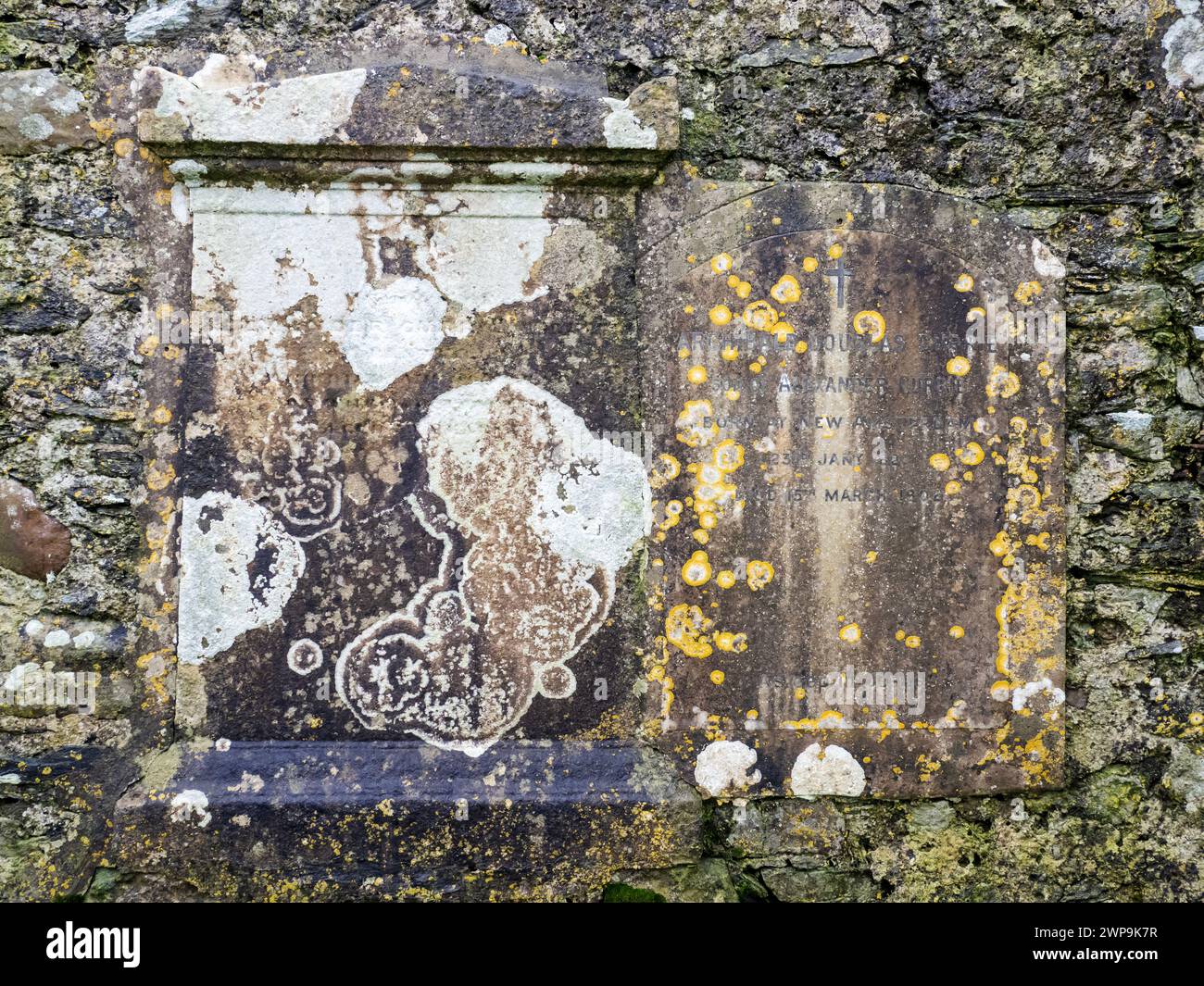 An old tomb stone attached to Kilnave Chapel on Loch Gruinart, Islay, Scotland, UK, that was built around late 1300's. Stock Photohttps://www.alamy.com/image-license-details/?v=1https://www.alamy.com/an-old-tomb-stone-attached-to-kilnave-chapel-on-loch-gruinart-islay-scotland-uk-that-was-built-around-late-1300s-image598887627.html
An old tomb stone attached to Kilnave Chapel on Loch Gruinart, Islay, Scotland, UK, that was built around late 1300's. Stock Photohttps://www.alamy.com/image-license-details/?v=1https://www.alamy.com/an-old-tomb-stone-attached-to-kilnave-chapel-on-loch-gruinart-islay-scotland-uk-that-was-built-around-late-1300s-image598887627.htmlRM2WP9K7R–An old tomb stone attached to Kilnave Chapel on Loch Gruinart, Islay, Scotland, UK, that was built around late 1300's.
 Hotei, late 1300s-early 1400s. Stock Photohttps://www.alamy.com/image-license-details/?v=1https://www.alamy.com/hotei-late-1300s-early-1400s-image330095672.html
Hotei, late 1300s-early 1400s. Stock Photohttps://www.alamy.com/image-license-details/?v=1https://www.alamy.com/hotei-late-1300s-early-1400s-image330095672.htmlRM2A514B4–Hotei, late 1300s-early 1400s.
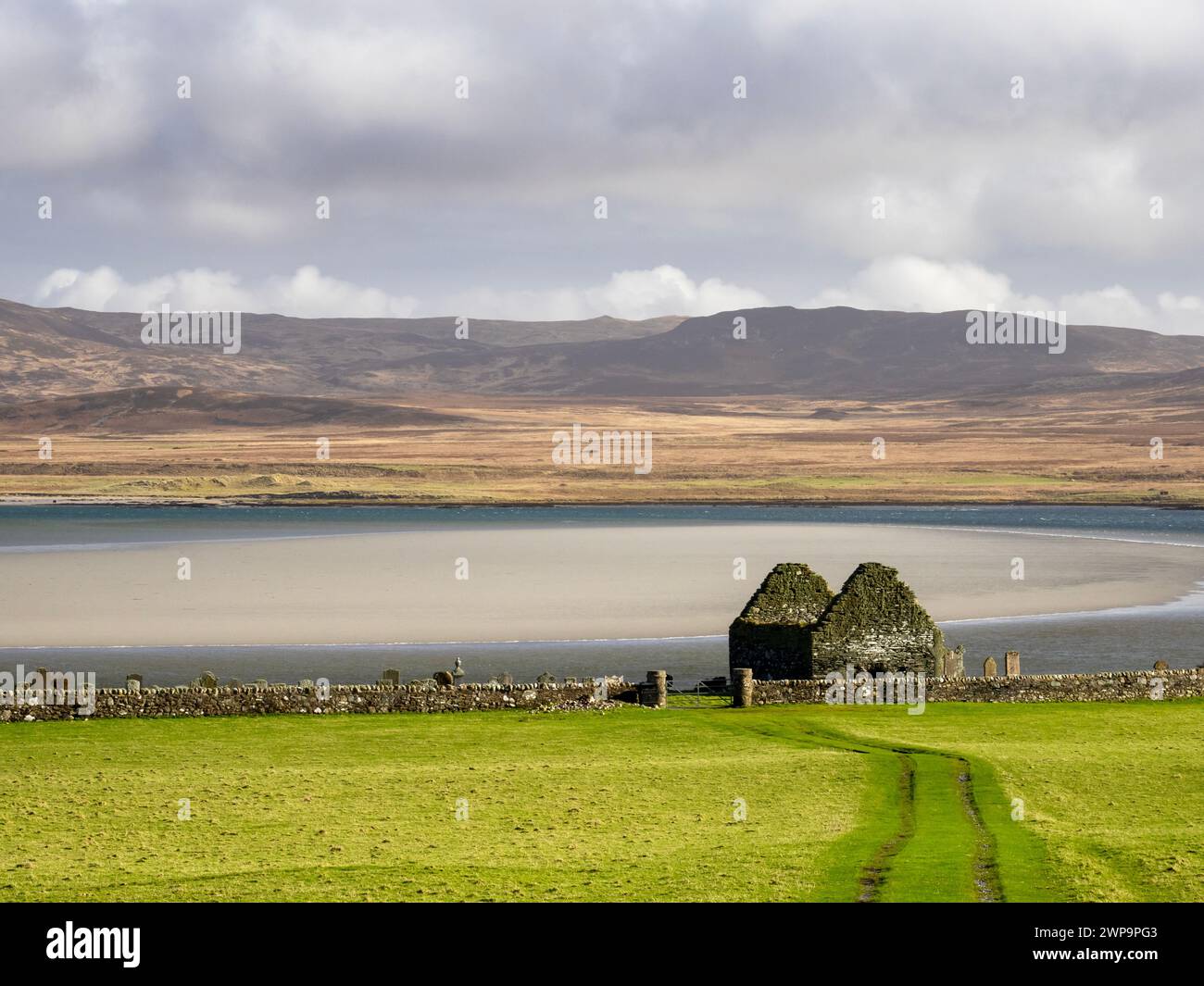 Kilnave Chapel and cross on Loch Gruinart, Islay, Scotland, UK, that was built around late 1300's with the cross constructed around 700. Stock Photohttps://www.alamy.com/image-license-details/?v=1https://www.alamy.com/kilnave-chapel-and-cross-on-loch-gruinart-islay-scotland-uk-that-was-built-around-late-1300s-with-the-cross-constructed-around-700-image598890211.html
Kilnave Chapel and cross on Loch Gruinart, Islay, Scotland, UK, that was built around late 1300's with the cross constructed around 700. Stock Photohttps://www.alamy.com/image-license-details/?v=1https://www.alamy.com/kilnave-chapel-and-cross-on-loch-gruinart-islay-scotland-uk-that-was-built-around-late-1300s-with-the-cross-constructed-around-700-image598890211.htmlRM2WP9PG3–Kilnave Chapel and cross on Loch Gruinart, Islay, Scotland, UK, that was built around late 1300's with the cross constructed around 700.
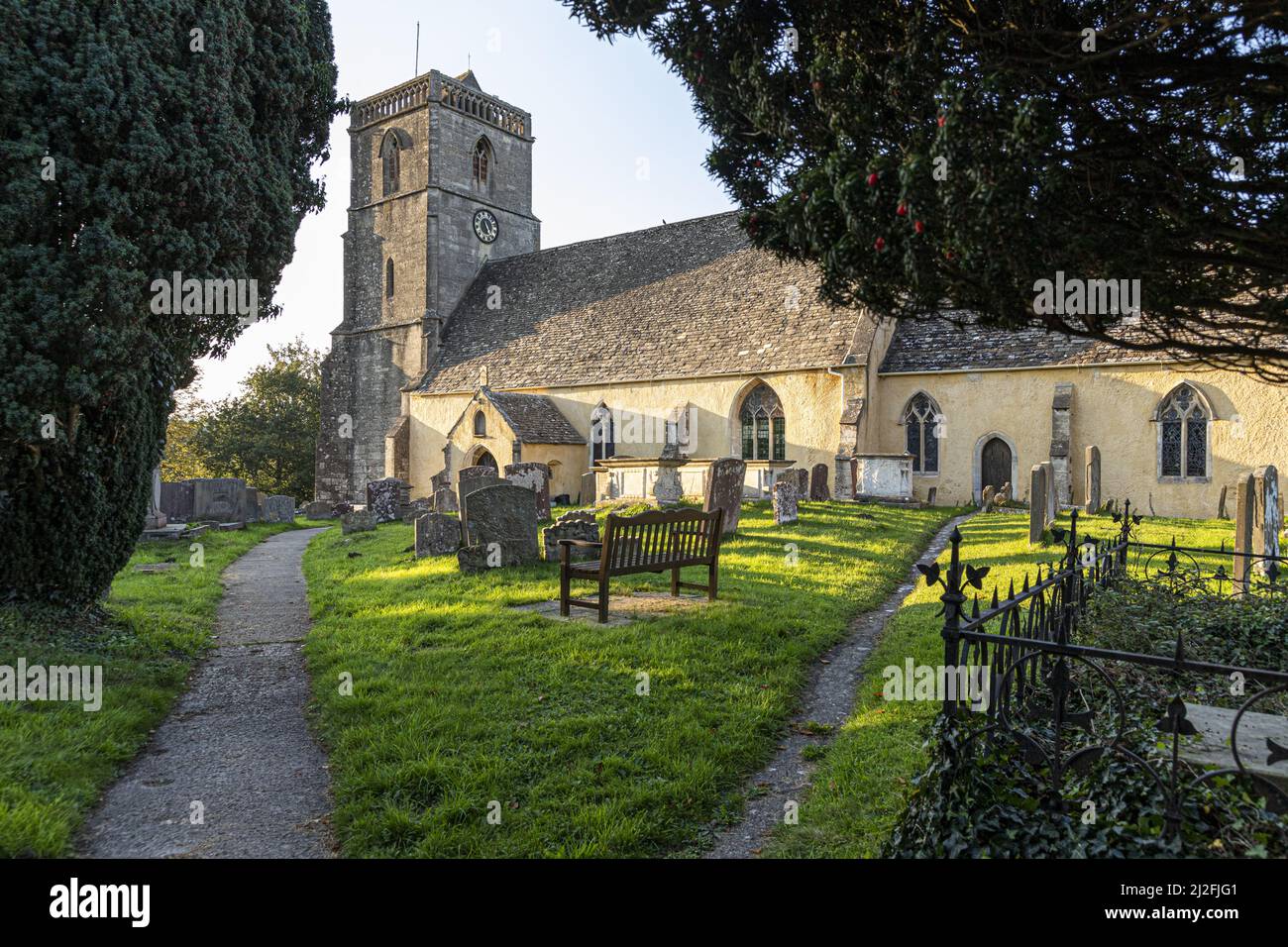 Evening light on the parish church of St. Mary the Virgin (dating back to the 14th century) in the Severnside village of Arlingham, Gloucestershire UK Stock Photohttps://www.alamy.com/image-license-details/?v=1https://www.alamy.com/evening-light-on-the-parish-church-of-st-mary-the-virgin-dating-back-to-the-14th-century-in-the-severnside-village-of-arlingham-gloucestershire-uk-image466253089.html
Evening light on the parish church of St. Mary the Virgin (dating back to the 14th century) in the Severnside village of Arlingham, Gloucestershire UK Stock Photohttps://www.alamy.com/image-license-details/?v=1https://www.alamy.com/evening-light-on-the-parish-church-of-st-mary-the-virgin-dating-back-to-the-14th-century-in-the-severnside-village-of-arlingham-gloucestershire-uk-image466253089.htmlRF2J2FJG1–Evening light on the parish church of St. Mary the Virgin (dating back to the 14th century) in the Severnside village of Arlingham, Gloucestershire UK
 Enamel and gilded glass bottle, late 13th/early 14th century, Egypt or Syria Stock Photohttps://www.alamy.com/image-license-details/?v=1https://www.alamy.com/enamel-and-gilded-glass-bottle-late-13thearly-14th-century-egypt-or-syria-image356058352.html
Enamel and gilded glass bottle, late 13th/early 14th century, Egypt or Syria Stock Photohttps://www.alamy.com/image-license-details/?v=1https://www.alamy.com/enamel-and-gilded-glass-bottle-late-13thearly-14th-century-egypt-or-syria-image356058352.htmlRM2BK7T1M–Enamel and gilded glass bottle, late 13th/early 14th century, Egypt or Syria
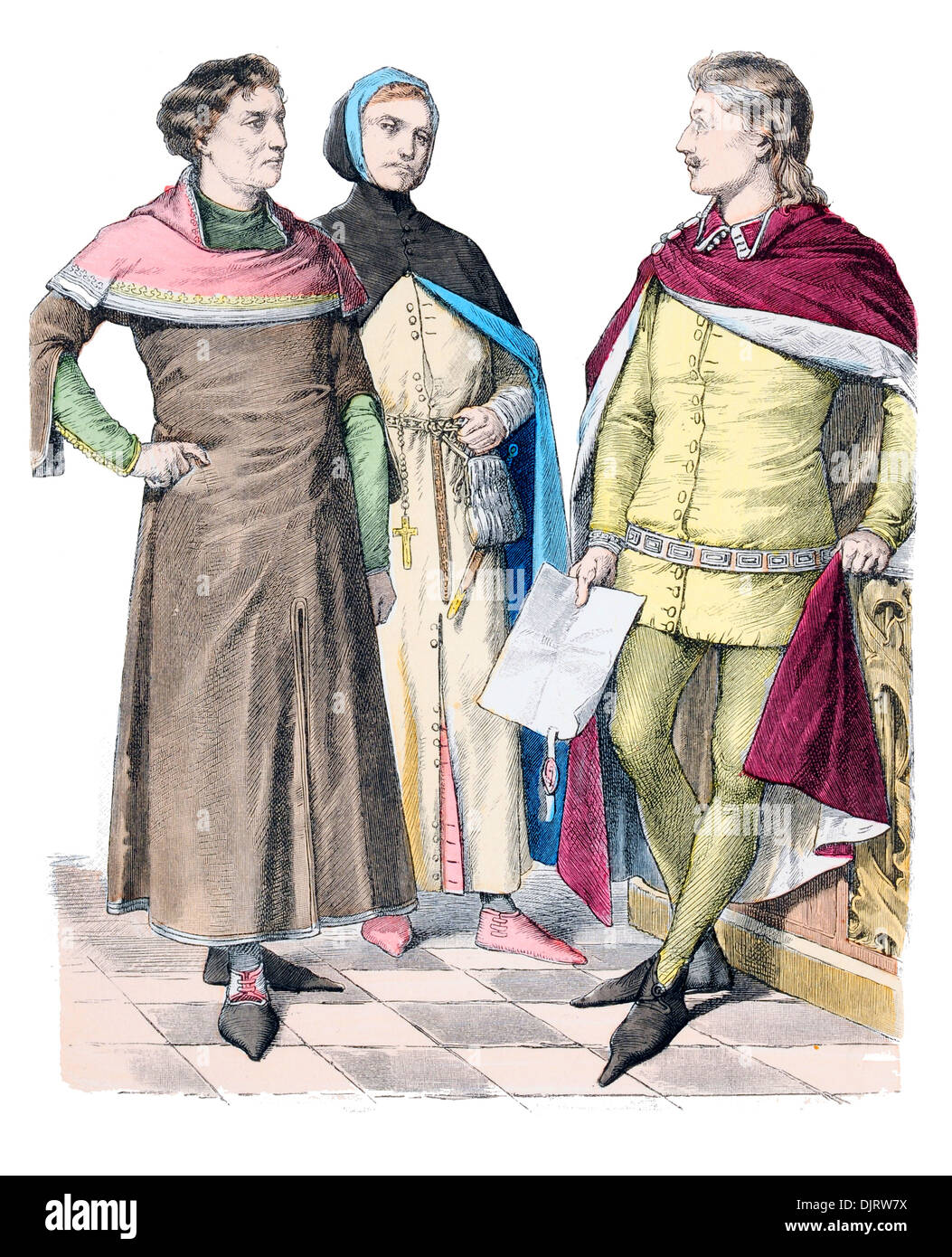 14th Century XIV 1300s English costume Stock Photohttps://www.alamy.com/image-license-details/?v=1https://www.alamy.com/14th-century-xiv-1300s-english-costume-image63219630.html
14th Century XIV 1300s English costume Stock Photohttps://www.alamy.com/image-license-details/?v=1https://www.alamy.com/14th-century-xiv-1300s-english-costume-image63219630.htmlRFDJRW7X–14th Century XIV 1300s English costume
 Early Christian virgin martyr, Saint Susanna of Rome. Fresco painted in the late 1300s in the north apse of the Chiesa di Santa Maria del Tiglio, at Gravedona, Lombardy, Italy. According to medieval legend, Santa Susanna was beheaded around 295 AD for refusing to marry a pagan relative of the Roman Emperor Diocletian, and for converting two of his officials to Christianity. Stock Photohttps://www.alamy.com/image-license-details/?v=1https://www.alamy.com/early-christian-virgin-martyr-saint-susanna-of-rome-fresco-painted-in-the-late-1300s-in-the-north-apse-of-the-chiesa-di-santa-maria-del-tiglio-at-gravedona-lombardy-italy-according-to-medieval-legend-santa-susanna-was-beheaded-around-295-ad-for-refusing-to-marry-a-pagan-relative-of-the-roman-emperor-diocletian-and-for-converting-two-of-his-officials-to-christianity-image415199670.html
Early Christian virgin martyr, Saint Susanna of Rome. Fresco painted in the late 1300s in the north apse of the Chiesa di Santa Maria del Tiglio, at Gravedona, Lombardy, Italy. According to medieval legend, Santa Susanna was beheaded around 295 AD for refusing to marry a pagan relative of the Roman Emperor Diocletian, and for converting two of his officials to Christianity. Stock Photohttps://www.alamy.com/image-license-details/?v=1https://www.alamy.com/early-christian-virgin-martyr-saint-susanna-of-rome-fresco-painted-in-the-late-1300s-in-the-north-apse-of-the-chiesa-di-santa-maria-del-tiglio-at-gravedona-lombardy-italy-according-to-medieval-legend-santa-susanna-was-beheaded-around-295-ad-for-refusing-to-marry-a-pagan-relative-of-the-roman-emperor-diocletian-and-for-converting-two-of-his-officials-to-christianity-image415199670.htmlRF2F3DYBJ–Early Christian virgin martyr, Saint Susanna of Rome. Fresco painted in the late 1300s in the north apse of the Chiesa di Santa Maria del Tiglio, at Gravedona, Lombardy, Italy. According to medieval legend, Santa Susanna was beheaded around 295 AD for refusing to marry a pagan relative of the Roman Emperor Diocletian, and for converting two of his officials to Christianity.
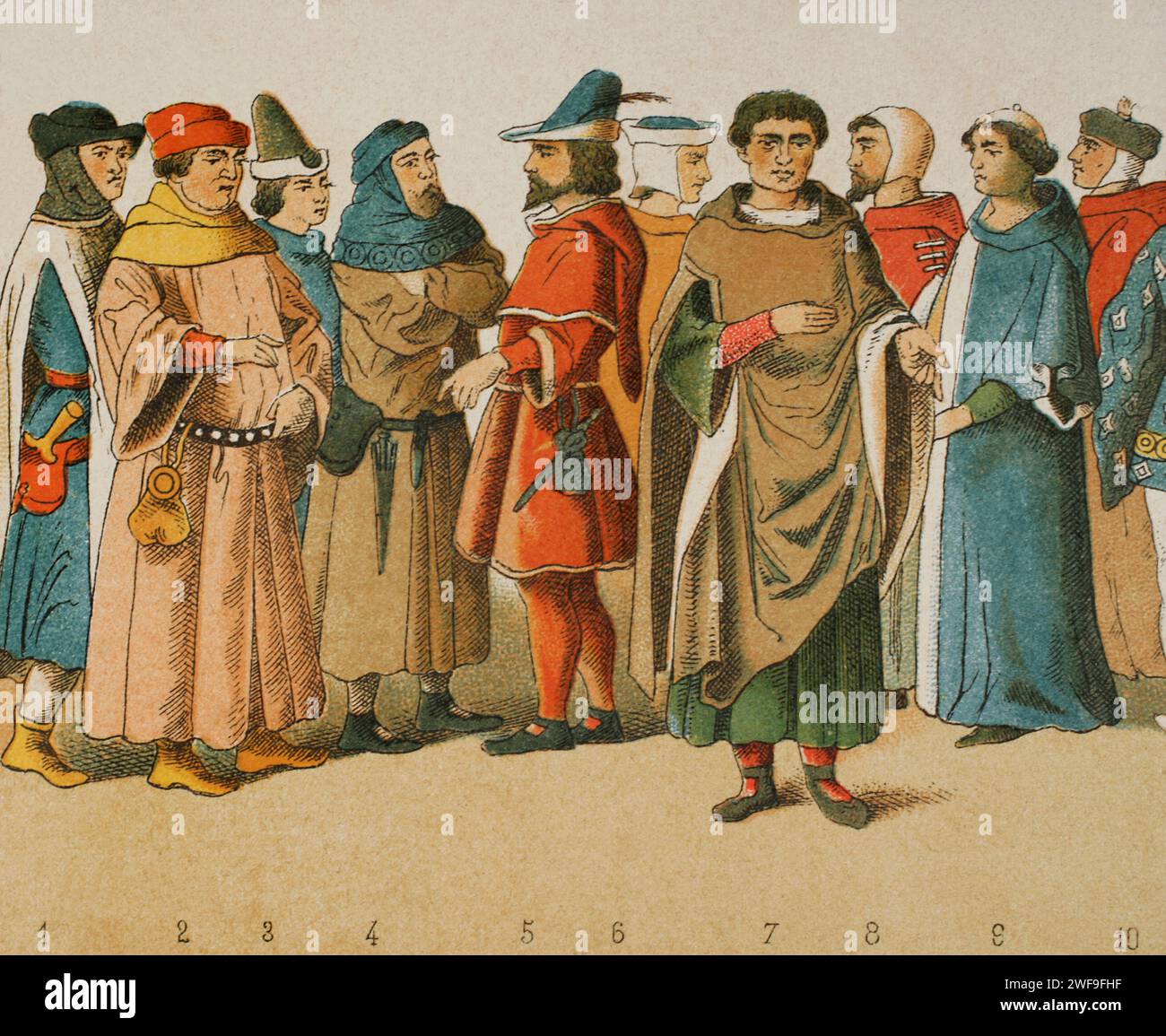 History of France. 1300. Citizens. Chromolithography. Detail. 'Historia Universal', by César Cantú. Volume VI, 1885. Stock Photohttps://www.alamy.com/image-license-details/?v=1https://www.alamy.com/history-of-france-1300-citizens-chromolithography-detail-historia-universal-by-csar-cant-volume-vi-1885-image594582171.html
History of France. 1300. Citizens. Chromolithography. Detail. 'Historia Universal', by César Cantú. Volume VI, 1885. Stock Photohttps://www.alamy.com/image-license-details/?v=1https://www.alamy.com/history-of-france-1300-citizens-chromolithography-detail-historia-universal-by-csar-cant-volume-vi-1885-image594582171.htmlRM2WF9FHF–History of France. 1300. Citizens. Chromolithography. Detail. 'Historia Universal', by César Cantú. Volume VI, 1885.
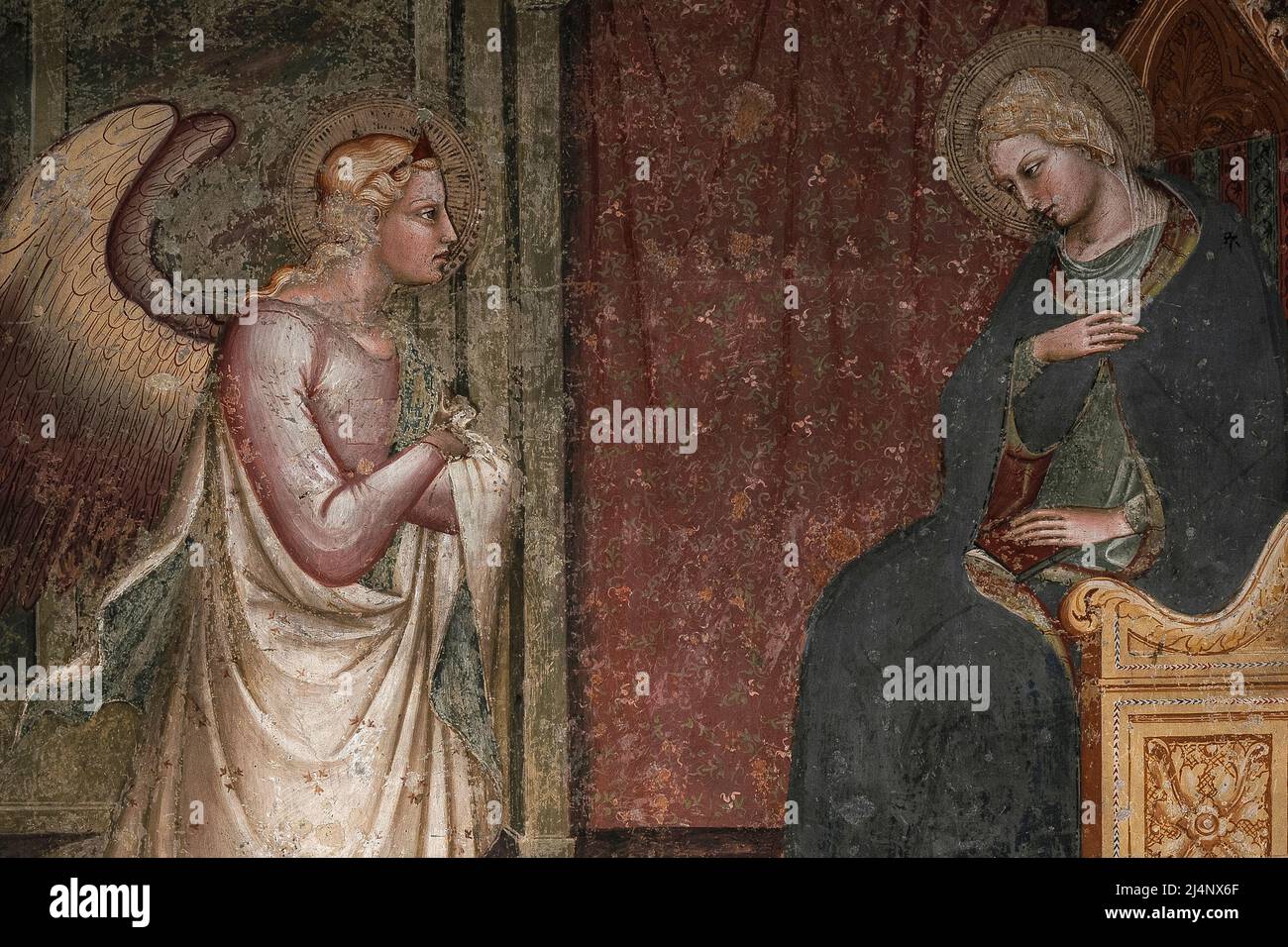 Archangel Gabriel kneels before a seated Virgin Mary. Late 1300s or early 1400s Annunciation fresco in the Chiesa di San Domenico at Arezzo, Tuscany, Italy. The work is attributed to locally-born early Renaissance artist Spinello Aretino (c. 1350 - c. 1410), an influential painter who frescoed churches throughout Tuscany in the late 14th and early 15th centuries. Stock Photohttps://www.alamy.com/image-license-details/?v=1https://www.alamy.com/archangel-gabriel-kneels-before-a-seated-virgin-mary-late-1300s-or-early-1400s-annunciation-fresco-in-the-chiesa-di-san-domenico-at-arezzo-tuscany-italy-the-work-is-attributed-to-locally-born-early-renaissance-artist-spinello-aretino-c-1350-c-1410-an-influential-painter-who-frescoed-churches-throughout-tuscany-in-the-late-14th-and-early-15th-centuries-image467620119.html
Archangel Gabriel kneels before a seated Virgin Mary. Late 1300s or early 1400s Annunciation fresco in the Chiesa di San Domenico at Arezzo, Tuscany, Italy. The work is attributed to locally-born early Renaissance artist Spinello Aretino (c. 1350 - c. 1410), an influential painter who frescoed churches throughout Tuscany in the late 14th and early 15th centuries. Stock Photohttps://www.alamy.com/image-license-details/?v=1https://www.alamy.com/archangel-gabriel-kneels-before-a-seated-virgin-mary-late-1300s-or-early-1400s-annunciation-fresco-in-the-chiesa-di-san-domenico-at-arezzo-tuscany-italy-the-work-is-attributed-to-locally-born-early-renaissance-artist-spinello-aretino-c-1350-c-1410-an-influential-painter-who-frescoed-churches-throughout-tuscany-in-the-late-14th-and-early-15th-centuries-image467620119.htmlRF2J4NX6F–Archangel Gabriel kneels before a seated Virgin Mary. Late 1300s or early 1400s Annunciation fresco in the Chiesa di San Domenico at Arezzo, Tuscany, Italy. The work is attributed to locally-born early Renaissance artist Spinello Aretino (c. 1350 - c. 1410), an influential painter who frescoed churches throughout Tuscany in the late 14th and early 15th centuries.
 The figures in this image are Italians from the A.D. 1300s. They represent, from left to right: a pope, a cardinal, and an archbishop. The illustration dates to 1882. Stock Photohttps://www.alamy.com/image-license-details/?v=1https://www.alamy.com/the-figures-in-this-image-are-italians-from-the-ad-1300s-they-represent-from-left-to-right-a-pope-a-cardinal-and-an-archbishop-the-illustration-dates-to-1882-image337618434.html
The figures in this image are Italians from the A.D. 1300s. They represent, from left to right: a pope, a cardinal, and an archbishop. The illustration dates to 1882. Stock Photohttps://www.alamy.com/image-license-details/?v=1https://www.alamy.com/the-figures-in-this-image-are-italians-from-the-ad-1300s-they-represent-from-left-to-right-a-pope-a-cardinal-and-an-archbishop-the-illustration-dates-to-1882-image337618434.htmlRF2AH7RN6–The figures in this image are Italians from the A.D. 1300s. They represent, from left to right: a pope, a cardinal, and an archbishop. The illustration dates to 1882.
 Nicolo da Bologna Birth of John the Baptist, late 14th century Initial F from a Choir Book (Antiphonary) miniature on vellum Stock Photohttps://www.alamy.com/image-license-details/?v=1https://www.alamy.com/nicolo-da-bologna-birth-of-john-the-baptist-late-14th-century-initial-f-from-a-choir-book-antiphonary-miniature-on-vellum-image536507656.html
Nicolo da Bologna Birth of John the Baptist, late 14th century Initial F from a Choir Book (Antiphonary) miniature on vellum Stock Photohttps://www.alamy.com/image-license-details/?v=1https://www.alamy.com/nicolo-da-bologna-birth-of-john-the-baptist-late-14th-century-initial-f-from-a-choir-book-antiphonary-miniature-on-vellum-image536507656.htmlRF2P4T0YM–Nicolo da Bologna Birth of John the Baptist, late 14th century Initial F from a Choir Book (Antiphonary) miniature on vellum
 Dante Alighieri (1265-1321), a 19thC engraving of the Italian poet and statesman of the late middle ages. Stock Photohttps://www.alamy.com/image-license-details/?v=1https://www.alamy.com/stock-photo-dante-alighieri-1265-1321-a-19thc-engraving-of-the-italian-poet-and-176940698.html
Dante Alighieri (1265-1321), a 19thC engraving of the Italian poet and statesman of the late middle ages. Stock Photohttps://www.alamy.com/image-license-details/?v=1https://www.alamy.com/stock-photo-dante-alighieri-1265-1321-a-19thc-engraving-of-the-italian-poet-and-176940698.htmlRMM7T9JJ–Dante Alighieri (1265-1321), a 19thC engraving of the Italian poet and statesman of the late middle ages.
 vase with horses on water design, Yuan dynasty, Yuan dynasty, late 1300s, porcelain with underglaze blue, H: 11-5/8 in., 29.5 cm., Asian Art, Reimagined by Gibon, design of warm cheerful glowing of brightness and light rays radiance. Classic art reinvented with a modern twist. Photography inspired by futurism, embracing dynamic energy of modern technology, movement, speed and revolutionize culture. Stock Photohttps://www.alamy.com/image-license-details/?v=1https://www.alamy.com/vase-with-horses-on-water-design-yuan-dynasty-yuan-dynasty-late-1300s-porcelain-with-underglaze-blue-h-11-58-in-295-cm-asian-art-reimagined-by-gibon-design-of-warm-cheerful-glowing-of-brightness-and-light-rays-radiance-classic-art-reinvented-with-a-modern-twist-photography-inspired-by-futurism-embracing-dynamic-energy-of-modern-technology-movement-speed-and-revolutionize-culture-image349853944.html
vase with horses on water design, Yuan dynasty, Yuan dynasty, late 1300s, porcelain with underglaze blue, H: 11-5/8 in., 29.5 cm., Asian Art, Reimagined by Gibon, design of warm cheerful glowing of brightness and light rays radiance. Classic art reinvented with a modern twist. Photography inspired by futurism, embracing dynamic energy of modern technology, movement, speed and revolutionize culture. Stock Photohttps://www.alamy.com/image-license-details/?v=1https://www.alamy.com/vase-with-horses-on-water-design-yuan-dynasty-yuan-dynasty-late-1300s-porcelain-with-underglaze-blue-h-11-58-in-295-cm-asian-art-reimagined-by-gibon-design-of-warm-cheerful-glowing-of-brightness-and-light-rays-radiance-classic-art-reinvented-with-a-modern-twist-photography-inspired-by-futurism-embracing-dynamic-energy-of-modern-technology-movement-speed-and-revolutionize-culture-image349853944.htmlRF2B9567M–vase with horses on water design, Yuan dynasty, Yuan dynasty, late 1300s, porcelain with underglaze blue, H: 11-5/8 in., 29.5 cm., Asian Art, Reimagined by Gibon, design of warm cheerful glowing of brightness and light rays radiance. Classic art reinvented with a modern twist. Photography inspired by futurism, embracing dynamic energy of modern technology, movement, speed and revolutionize culture.
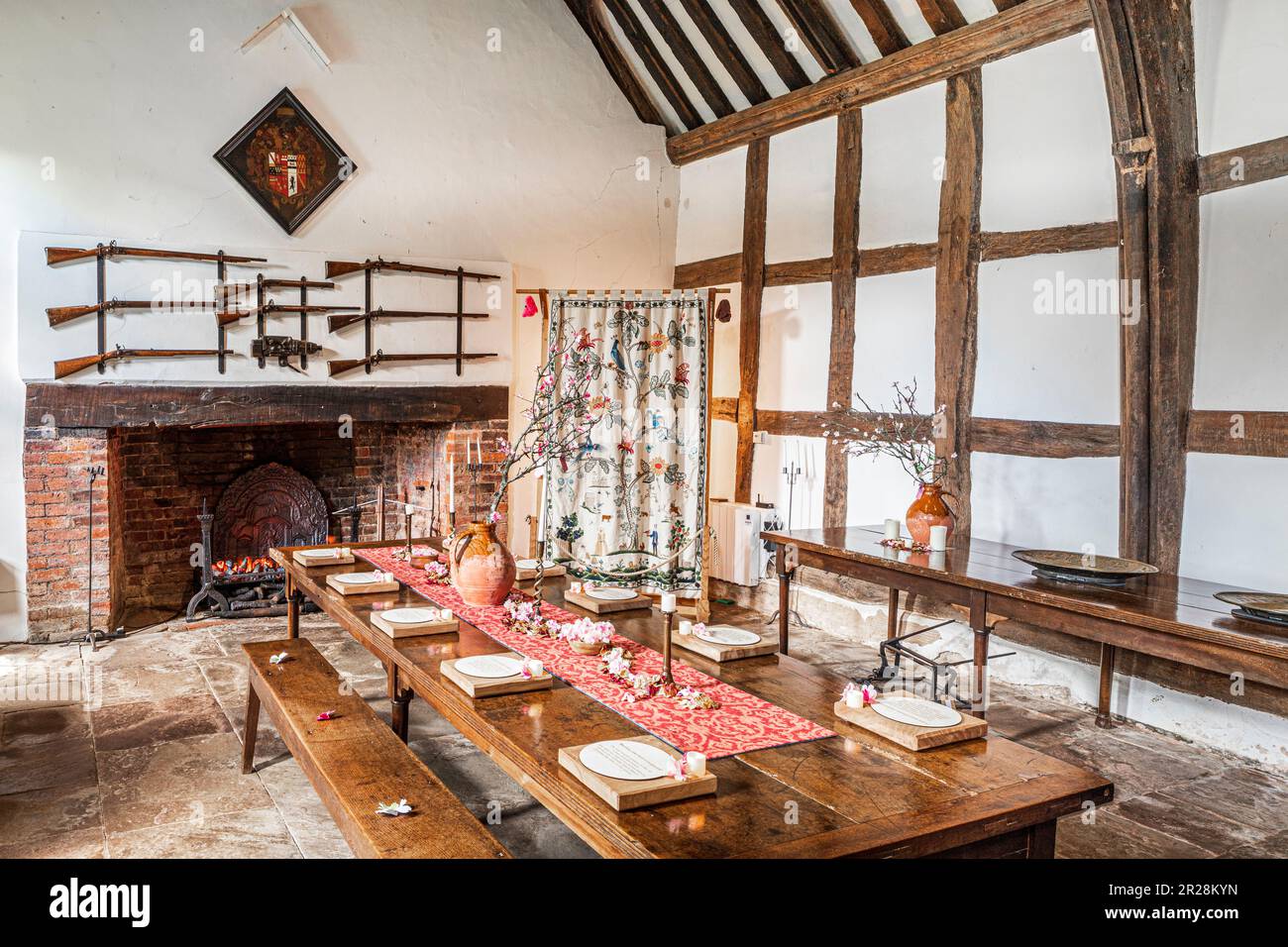 The interior of the late 14th or early 15th century timber framed Lower Brockhampton Manor House near Bromyard, Herefordshire, England UK Stock Photohttps://www.alamy.com/image-license-details/?v=1https://www.alamy.com/the-interior-of-the-late-14th-or-early-15th-century-timber-framed-lower-brockhampton-manor-house-near-bromyard-herefordshire-england-uk-image552152377.html
The interior of the late 14th or early 15th century timber framed Lower Brockhampton Manor House near Bromyard, Herefordshire, England UK Stock Photohttps://www.alamy.com/image-license-details/?v=1https://www.alamy.com/the-interior-of-the-late-14th-or-early-15th-century-timber-framed-lower-brockhampton-manor-house-near-bromyard-herefordshire-england-uk-image552152377.htmlRM2R28KYN–The interior of the late 14th or early 15th century timber framed Lower Brockhampton Manor House near Bromyard, Herefordshire, England UK
 vase with horses on water design, Yuan dynasty, Yuan dynasty, late 1300s, porcelain with underglaze blue, H: 11-5/8 in., 29.5 cm., Asian Art Stock Photohttps://www.alamy.com/image-license-details/?v=1https://www.alamy.com/vase-with-horses-on-water-design-yuan-dynasty-yuan-dynasty-late-1300s-porcelain-with-underglaze-blue-h-11-58-in-295-cm-asian-art-image328775354.html
vase with horses on water design, Yuan dynasty, Yuan dynasty, late 1300s, porcelain with underglaze blue, H: 11-5/8 in., 29.5 cm., Asian Art Stock Photohttps://www.alamy.com/image-license-details/?v=1https://www.alamy.com/vase-with-horses-on-water-design-yuan-dynasty-yuan-dynasty-late-1300s-porcelain-with-underglaze-blue-h-11-58-in-295-cm-asian-art-image328775354.htmlRM2A2W08X–vase with horses on water design, Yuan dynasty, Yuan dynasty, late 1300s, porcelain with underglaze blue, H: 11-5/8 in., 29.5 cm., Asian Art
 Crucified Christ, late 1300s. Spain, Navarre?, late 14th century. Painted and gilded wood (poplar); overall: 211 x 154.9 x 32.2 cm (83 1/16 x 61 x 12 11/16 in.). Stock Photohttps://www.alamy.com/image-license-details/?v=1https://www.alamy.com/crucified-christ-late-1300s-spain-navarre-late-14th-century-painted-and-gilded-wood-poplar-overall-211-x-1549-x-322-cm-83-116-x-61-x-12-1116-in-image448103756.html
Crucified Christ, late 1300s. Spain, Navarre?, late 14th century. Painted and gilded wood (poplar); overall: 211 x 154.9 x 32.2 cm (83 1/16 x 61 x 12 11/16 in.). Stock Photohttps://www.alamy.com/image-license-details/?v=1https://www.alamy.com/crucified-christ-late-1300s-spain-navarre-late-14th-century-painted-and-gilded-wood-poplar-overall-211-x-1549-x-322-cm-83-116-x-61-x-12-1116-in-image448103756.htmlRM2H10TWG–Crucified Christ, late 1300s. Spain, Navarre?, late 14th century. Painted and gilded wood (poplar); overall: 211 x 154.9 x 32.2 cm (83 1/16 x 61 x 12 11/16 in.).
 Maker: Unknown, Heraclius I, Emperor of Byzantium, Late 1300’s, Bronze, 279.09 g, 12:00, 94 mm, Made in Burgundy, French, Burgundian, 14th century, Numismatics Stock Photohttps://www.alamy.com/image-license-details/?v=1https://www.alamy.com/maker-unknown-heraclius-i-emperor-ofbyzantium-late1300s-bronze-27909-g-1200-94mm-made-in-burgundy-frenchburgundian-14thcentury-numismatics-image393502929.html
Maker: Unknown, Heraclius I, Emperor of Byzantium, Late 1300’s, Bronze, 279.09 g, 12:00, 94 mm, Made in Burgundy, French, Burgundian, 14th century, Numismatics Stock Photohttps://www.alamy.com/image-license-details/?v=1https://www.alamy.com/maker-unknown-heraclius-i-emperor-ofbyzantium-late1300s-bronze-27909-g-1200-94mm-made-in-burgundy-frenchburgundian-14thcentury-numismatics-image393502929.htmlRM2DT5H01–Maker: Unknown, Heraclius I, Emperor of Byzantium, Late 1300’s, Bronze, 279.09 g, 12:00, 94 mm, Made in Burgundy, French, Burgundian, 14th century, Numismatics
 Brocaded Velvet, late 1300s. Italy, late 14th century. Velvet weave (cut with two heights of pile, and uncut, voided, brocaded): silk and gold thread; overall: 64.8 x 29.2 cm (25 1/2 x 11 1/2 in.). Stock Photohttps://www.alamy.com/image-license-details/?v=1https://www.alamy.com/brocaded-velvet-late-1300s-italy-late-14th-century-velvet-weave-cut-with-two-heights-of-pile-and-uncut-voided-brocaded-silk-and-gold-thread-overall-648-x-292-cm-25-12-x-11-12-in-image448078491.html
Brocaded Velvet, late 1300s. Italy, late 14th century. Velvet weave (cut with two heights of pile, and uncut, voided, brocaded): silk and gold thread; overall: 64.8 x 29.2 cm (25 1/2 x 11 1/2 in.). Stock Photohttps://www.alamy.com/image-license-details/?v=1https://www.alamy.com/brocaded-velvet-late-1300s-italy-late-14th-century-velvet-weave-cut-with-two-heights-of-pile-and-uncut-voided-brocaded-silk-and-gold-thread-overall-648-x-292-cm-25-12-x-11-12-in-image448078491.htmlRM2H0YMK7–Brocaded Velvet, late 1300s. Italy, late 14th century. Velvet weave (cut with two heights of pile, and uncut, voided, brocaded): silk and gold thread; overall: 64.8 x 29.2 cm (25 1/2 x 11 1/2 in.).
 buckle with crane and lotus design, Ming dynasty, Ming dynasty, late 1300s, nephrite, 2-1/4 x 2-13/16 x 3/4 in., Asian Art Stock Photohttps://www.alamy.com/image-license-details/?v=1https://www.alamy.com/buckle-with-crane-and-lotus-design-ming-dynasty-ming-dynasty-late-1300s-nephrite-2-14-x-2-1316-x-34-in-asian-art-image328777438.html
buckle with crane and lotus design, Ming dynasty, Ming dynasty, late 1300s, nephrite, 2-1/4 x 2-13/16 x 3/4 in., Asian Art Stock Photohttps://www.alamy.com/image-license-details/?v=1https://www.alamy.com/buckle-with-crane-and-lotus-design-ming-dynasty-ming-dynasty-late-1300s-nephrite-2-14-x-2-1316-x-34-in-asian-art-image328777438.htmlRM2A2W2YA–buckle with crane and lotus design, Ming dynasty, Ming dynasty, late 1300s, nephrite, 2-1/4 x 2-13/16 x 3/4 in., Asian Art
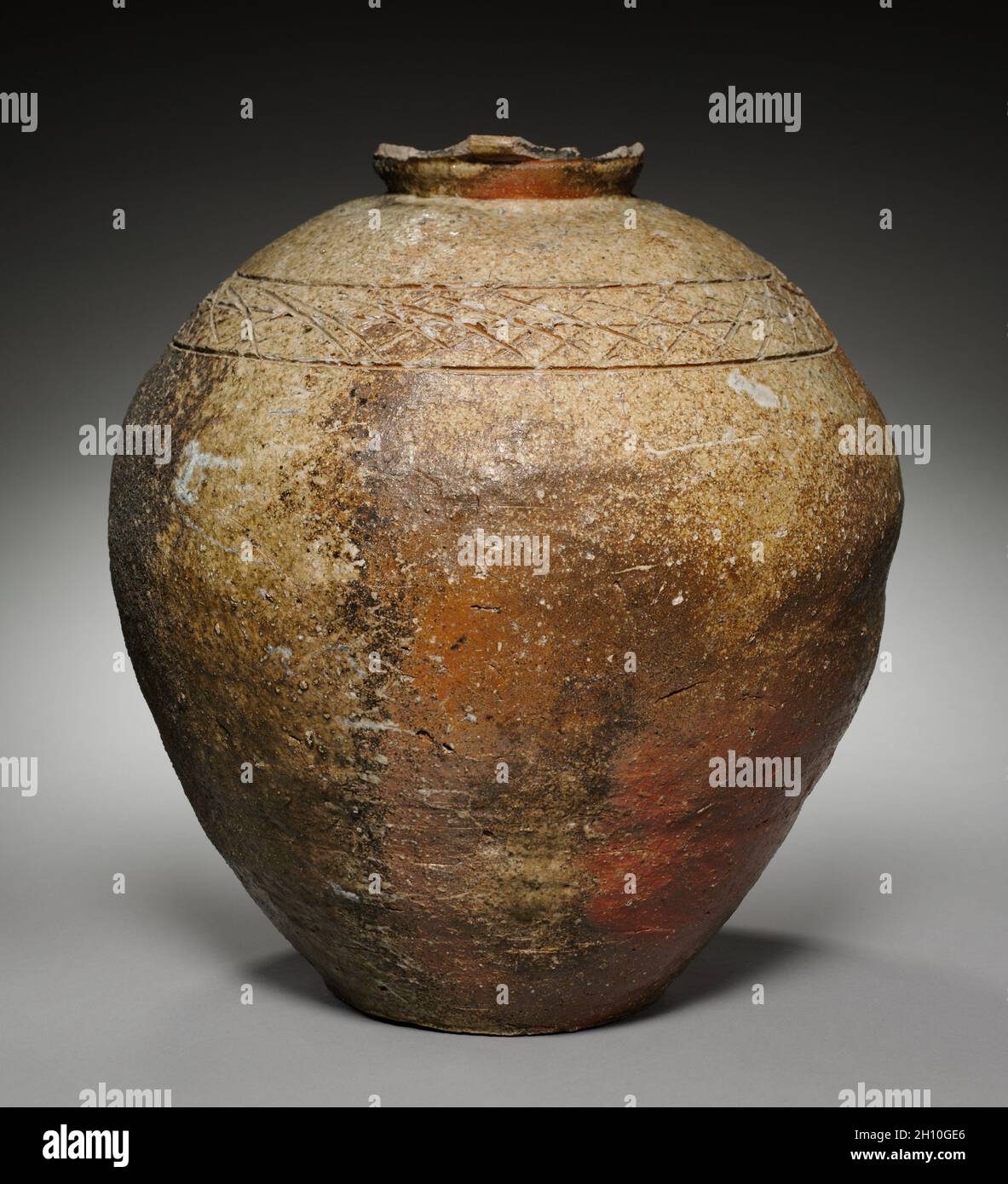 Storage Jar, late 1300s-1400s. Japan, Muromachi period (1392-1573). Stoneware with natural ash glaze (Shigaraki ware); diameter: 45.7 x 39 cm (18 x 15 3/8 in.); overall: 42 cm (16 9/16 in.). Stock Photohttps://www.alamy.com/image-license-details/?v=1https://www.alamy.com/storage-jar-late-1300s-1400s-japan-muromachi-period-1392-1573-stoneware-with-natural-ash-glaze-shigaraki-ware-diameter-457-x-39-cm-18-x-15-38-in-overall-42-cm-16-916-in-image448097166.html
Storage Jar, late 1300s-1400s. Japan, Muromachi period (1392-1573). Stoneware with natural ash glaze (Shigaraki ware); diameter: 45.7 x 39 cm (18 x 15 3/8 in.); overall: 42 cm (16 9/16 in.). Stock Photohttps://www.alamy.com/image-license-details/?v=1https://www.alamy.com/storage-jar-late-1300s-1400s-japan-muromachi-period-1392-1573-stoneware-with-natural-ash-glaze-shigaraki-ware-diameter-457-x-39-cm-18-x-15-38-in-overall-42-cm-16-916-in-image448097166.htmlRM2H10GE6–Storage Jar, late 1300s-1400s. Japan, Muromachi period (1392-1573). Stoneware with natural ash glaze (Shigaraki ware); diameter: 45.7 x 39 cm (18 x 15 3/8 in.); overall: 42 cm (16 9/16 in.).
 Wrestlers perform during traditional circumcision ritual in Rhodope Mountain village of Ribnovo, Bulgaria on 03 October, 2021. Pomaks perform a traditional Muslim circumcision ritual for boys until they are five years old. Circumcision intervention is done by surgeon working for the representation of the chief mufti of the Muslims in Bulgaria. Citizens of Ribnovo are Bulgarian-speaking Muslims, sometimes referred to as 'Pomaks. The Pomak Muslims are dwelling mainly in the Rhodope Mountains of South Bulgaria and North Greece. They are believed to have converted to Islam in the late 1300s (Photo Stock Photohttps://www.alamy.com/image-license-details/?v=1https://www.alamy.com/wrestlers-perform-during-traditional-circumcision-ritual-in-rhodope-mountain-village-of-ribnovo-bulgaria-on-03-october-2021-pomaks-perform-a-traditional-muslim-circumcision-ritual-for-boys-until-they-are-five-years-old-circumcision-intervention-is-done-by-surgeon-working-for-the-representation-of-the-chief-mufti-of-the-muslims-in-bulgaria-citizens-of-ribnovo-are-bulgarian-speaking-muslims-sometimes-referred-to-as-pomaks-the-pomak-muslims-are-dwelling-mainly-in-the-rhodope-mountains-of-south-bulgaria-and-north-greece-they-are-believed-to-have-converted-to-islam-in-the-late-1300s-photo-image489752515.html
Wrestlers perform during traditional circumcision ritual in Rhodope Mountain village of Ribnovo, Bulgaria on 03 October, 2021. Pomaks perform a traditional Muslim circumcision ritual for boys until they are five years old. Circumcision intervention is done by surgeon working for the representation of the chief mufti of the Muslims in Bulgaria. Citizens of Ribnovo are Bulgarian-speaking Muslims, sometimes referred to as 'Pomaks. The Pomak Muslims are dwelling mainly in the Rhodope Mountains of South Bulgaria and North Greece. They are believed to have converted to Islam in the late 1300s (Photo Stock Photohttps://www.alamy.com/image-license-details/?v=1https://www.alamy.com/wrestlers-perform-during-traditional-circumcision-ritual-in-rhodope-mountain-village-of-ribnovo-bulgaria-on-03-october-2021-pomaks-perform-a-traditional-muslim-circumcision-ritual-for-boys-until-they-are-five-years-old-circumcision-intervention-is-done-by-surgeon-working-for-the-representation-of-the-chief-mufti-of-the-muslims-in-bulgaria-citizens-of-ribnovo-are-bulgarian-speaking-muslims-sometimes-referred-to-as-pomaks-the-pomak-muslims-are-dwelling-mainly-in-the-rhodope-mountains-of-south-bulgaria-and-north-greece-they-are-believed-to-have-converted-to-islam-in-the-late-1300s-photo-image489752515.htmlRM2KCP497–Wrestlers perform during traditional circumcision ritual in Rhodope Mountain village of Ribnovo, Bulgaria on 03 October, 2021. Pomaks perform a traditional Muslim circumcision ritual for boys until they are five years old. Circumcision intervention is done by surgeon working for the representation of the chief mufti of the Muslims in Bulgaria. Citizens of Ribnovo are Bulgarian-speaking Muslims, sometimes referred to as 'Pomaks. The Pomak Muslims are dwelling mainly in the Rhodope Mountains of South Bulgaria and North Greece. They are believed to have converted to Islam in the late 1300s (Photo
 Kilnave Chapel and cross on Loch Gruinart, Islay, Scotland, UK, that was built around late 1300's with the cross constructed around 700. Stock Photohttps://www.alamy.com/image-license-details/?v=1https://www.alamy.com/kilnave-chapel-and-cross-on-loch-gruinart-islay-scotland-uk-that-was-built-around-late-1300s-with-the-cross-constructed-around-700-image598890245.html
Kilnave Chapel and cross on Loch Gruinart, Islay, Scotland, UK, that was built around late 1300's with the cross constructed around 700. Stock Photohttps://www.alamy.com/image-license-details/?v=1https://www.alamy.com/kilnave-chapel-and-cross-on-loch-gruinart-islay-scotland-uk-that-was-built-around-late-1300s-with-the-cross-constructed-around-700-image598890245.htmlRM2WP9PH9–Kilnave Chapel and cross on Loch Gruinart, Islay, Scotland, UK, that was built around late 1300's with the cross constructed around 700.
 Rock, Bamboo, and Orchids, late 1300s-early 1400s. Stock Photohttps://www.alamy.com/image-license-details/?v=1https://www.alamy.com/rock-bamboo-and-orchids-late-1300s-early-1400s-image330115628.html
Rock, Bamboo, and Orchids, late 1300s-early 1400s. Stock Photohttps://www.alamy.com/image-license-details/?v=1https://www.alamy.com/rock-bamboo-and-orchids-late-1300s-early-1400s-image330115628.htmlRM2A521RT–Rock, Bamboo, and Orchids, late 1300s-early 1400s.
 Evening light on the parish church of St. Mary the Virgin (dating back to the 14th century) in the Severnside village of Arlingham, Gloucestershire UK Stock Photohttps://www.alamy.com/image-license-details/?v=1https://www.alamy.com/evening-light-on-the-parish-church-of-st-mary-the-virgin-dating-back-to-the-14th-century-in-the-severnside-village-of-arlingham-gloucestershire-uk-image466253118.html
Evening light on the parish church of St. Mary the Virgin (dating back to the 14th century) in the Severnside village of Arlingham, Gloucestershire UK Stock Photohttps://www.alamy.com/image-license-details/?v=1https://www.alamy.com/evening-light-on-the-parish-church-of-st-mary-the-virgin-dating-back-to-the-14th-century-in-the-severnside-village-of-arlingham-gloucestershire-uk-image466253118.htmlRF2J2FJH2–Evening light on the parish church of St. Mary the Virgin (dating back to the 14th century) in the Severnside village of Arlingham, Gloucestershire UK
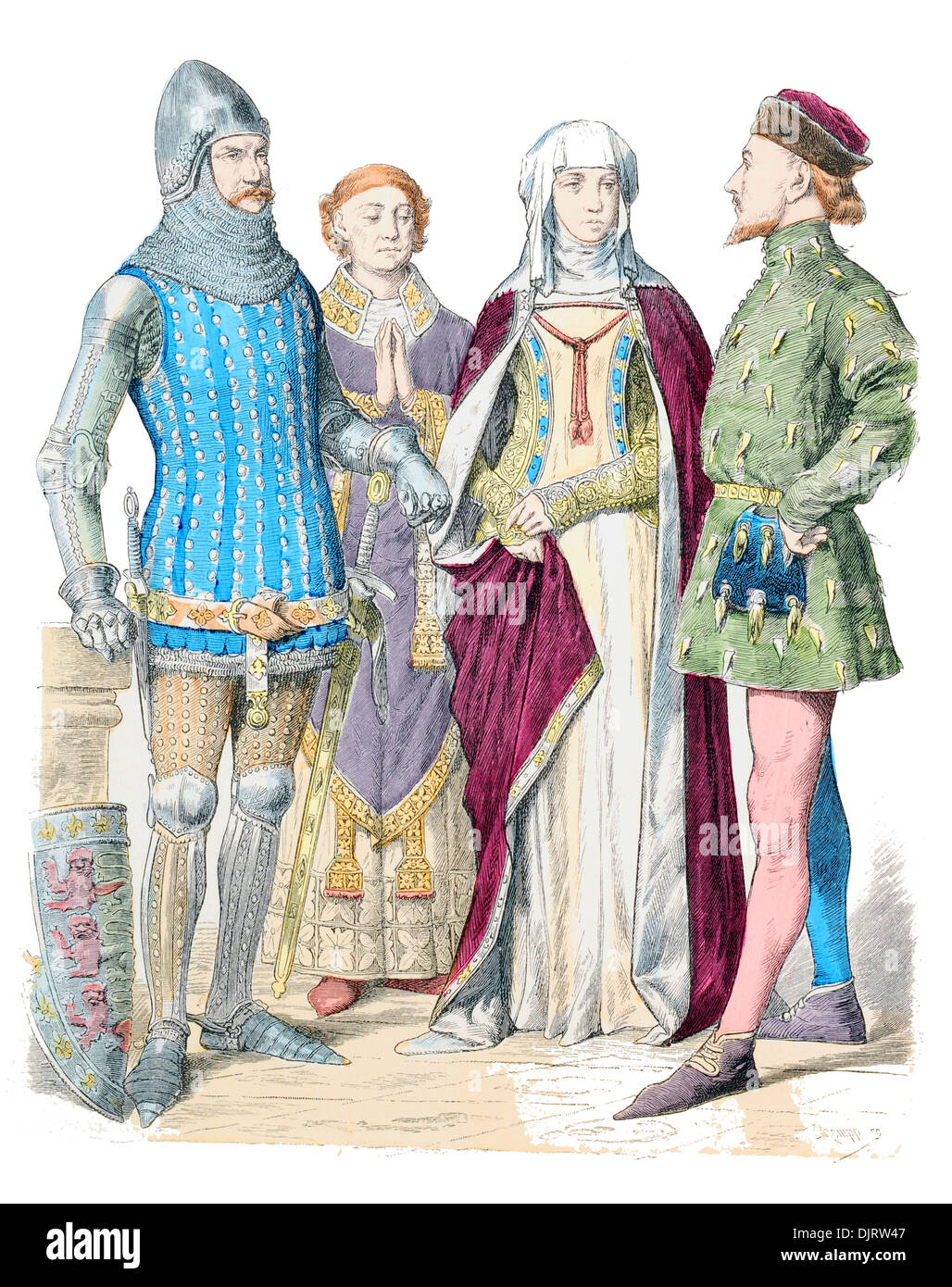 14th Century XIV 1300s English costume Stock Photohttps://www.alamy.com/image-license-details/?v=1https://www.alamy.com/14th-century-xiv-1300s-english-costume-image63219527.html
14th Century XIV 1300s English costume Stock Photohttps://www.alamy.com/image-license-details/?v=1https://www.alamy.com/14th-century-xiv-1300s-english-costume-image63219527.htmlRFDJRW47–14th Century XIV 1300s English costume
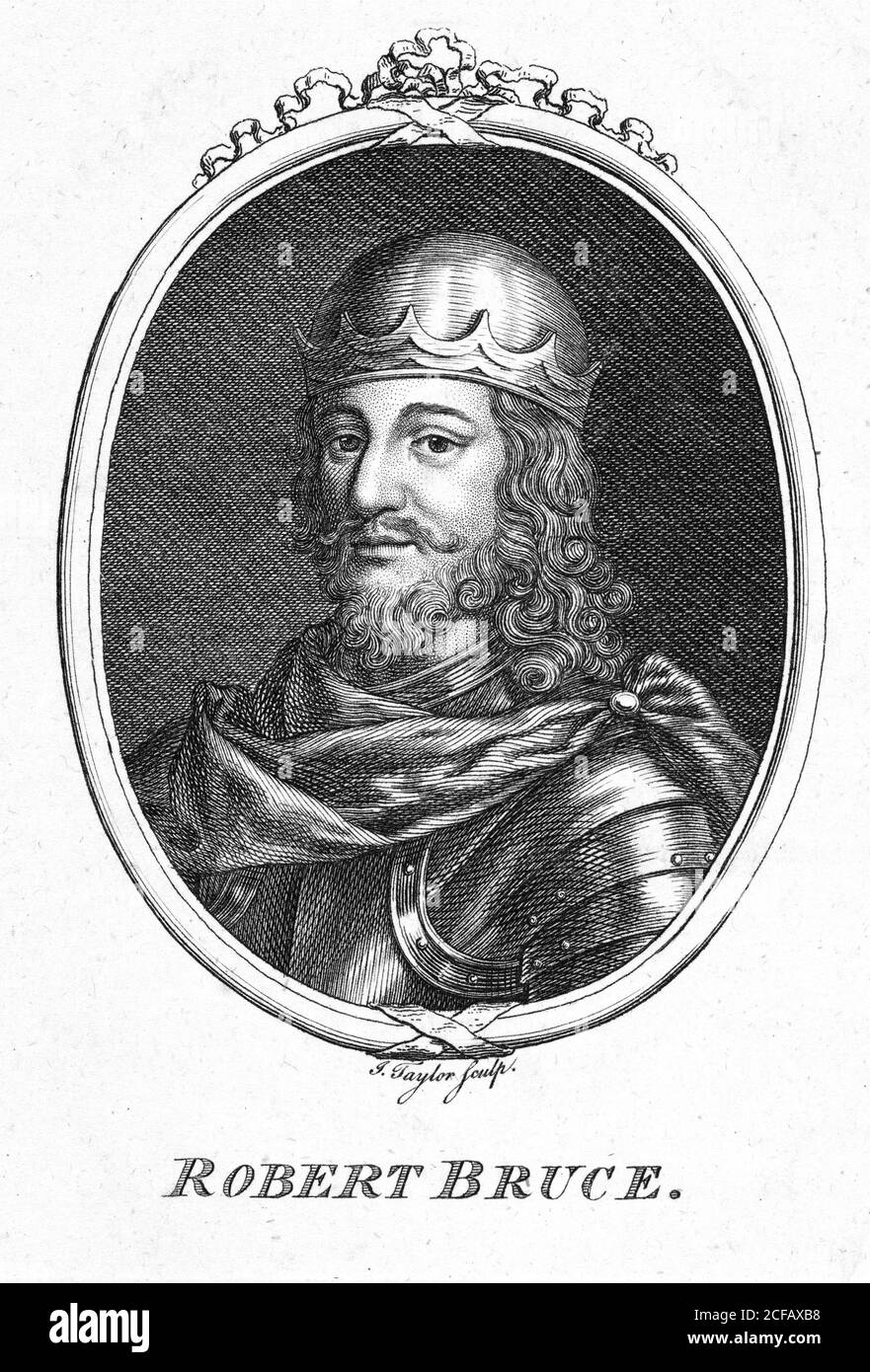 Robert the Bruce. Portrait of King Robert I of Scotland (1274-1329), late 18th century engraving by Isaac Taylor Stock Photohttps://www.alamy.com/image-license-details/?v=1https://www.alamy.com/robert-the-bruce-portrait-of-king-robert-i-of-scotland-1274-1329-late-18th-century-engraving-by-isaac-taylor-image370877788.html
Robert the Bruce. Portrait of King Robert I of Scotland (1274-1329), late 18th century engraving by Isaac Taylor Stock Photohttps://www.alamy.com/image-license-details/?v=1https://www.alamy.com/robert-the-bruce-portrait-of-king-robert-i-of-scotland-1274-1329-late-18th-century-engraving-by-isaac-taylor-image370877788.htmlRM2CFAXB8–Robert the Bruce. Portrait of King Robert I of Scotland (1274-1329), late 18th century engraving by Isaac Taylor
 History of France. 1300. From left to right, 1 and 2: queens and princesses, 3: middle-class woman, 4: lady, 5: middle-class woman, 6: lady, 7-8: middle-class women, 9: lady, 10: queen, 11: lady. Chromolithography. 'Historia Universal', by César Cantú. Volume VI, 1885. Stock Photohttps://www.alamy.com/image-license-details/?v=1https://www.alamy.com/history-of-france-1300-from-left-to-right-1-and-2-queens-and-princesses-3-middle-class-woman-4-lady-5-middle-class-woman-6-lady-7-8-middle-class-women-9-lady-10-queen-11-lady-chromolithography-historia-universal-by-csar-cant-volume-vi-1885-image594582137.html
History of France. 1300. From left to right, 1 and 2: queens and princesses, 3: middle-class woman, 4: lady, 5: middle-class woman, 6: lady, 7-8: middle-class women, 9: lady, 10: queen, 11: lady. Chromolithography. 'Historia Universal', by César Cantú. Volume VI, 1885. Stock Photohttps://www.alamy.com/image-license-details/?v=1https://www.alamy.com/history-of-france-1300-from-left-to-right-1-and-2-queens-and-princesses-3-middle-class-woman-4-lady-5-middle-class-woman-6-lady-7-8-middle-class-women-9-lady-10-queen-11-lady-chromolithography-historia-universal-by-csar-cant-volume-vi-1885-image594582137.htmlRM2WF9FG9–History of France. 1300. From left to right, 1 and 2: queens and princesses, 3: middle-class woman, 4: lady, 5: middle-class woman, 6: lady, 7-8: middle-class women, 9: lady, 10: queen, 11: lady. Chromolithography. 'Historia Universal', by César Cantú. Volume VI, 1885.
 The Virgin Mary sits in a decorated, high-backed chair. Detail from late 1300s or early 1400s Annunciation fresco in the Chiesa di San Domenico at Arezzo, Tuscany, Italy. The work is attributed to locally-born early Renaissance artist Spinello Aretino (c. 1350 - c. 1410), an influential painter who frescoed churches throughout Tuscany in the late 14th and early 15th centuries. Stock Photohttps://www.alamy.com/image-license-details/?v=1https://www.alamy.com/the-virgin-mary-sits-in-a-decorated-high-backed-chair-detail-from-late-1300s-or-early-1400s-annunciation-fresco-in-the-chiesa-di-san-domenico-at-arezzo-tuscany-italy-the-work-is-attributed-to-locally-born-early-renaissance-artist-spinello-aretino-c-1350-c-1410-an-influential-painter-who-frescoed-churches-throughout-tuscany-in-the-late-14th-and-early-15th-centuries-image467620133.html
The Virgin Mary sits in a decorated, high-backed chair. Detail from late 1300s or early 1400s Annunciation fresco in the Chiesa di San Domenico at Arezzo, Tuscany, Italy. The work is attributed to locally-born early Renaissance artist Spinello Aretino (c. 1350 - c. 1410), an influential painter who frescoed churches throughout Tuscany in the late 14th and early 15th centuries. Stock Photohttps://www.alamy.com/image-license-details/?v=1https://www.alamy.com/the-virgin-mary-sits-in-a-decorated-high-backed-chair-detail-from-late-1300s-or-early-1400s-annunciation-fresco-in-the-chiesa-di-san-domenico-at-arezzo-tuscany-italy-the-work-is-attributed-to-locally-born-early-renaissance-artist-spinello-aretino-c-1350-c-1410-an-influential-painter-who-frescoed-churches-throughout-tuscany-in-the-late-14th-and-early-15th-centuries-image467620133.htmlRF2J4NX71–The Virgin Mary sits in a decorated, high-backed chair. Detail from late 1300s or early 1400s Annunciation fresco in the Chiesa di San Domenico at Arezzo, Tuscany, Italy. The work is attributed to locally-born early Renaissance artist Spinello Aretino (c. 1350 - c. 1410), an influential painter who frescoed churches throughout Tuscany in the late 14th and early 15th centuries.
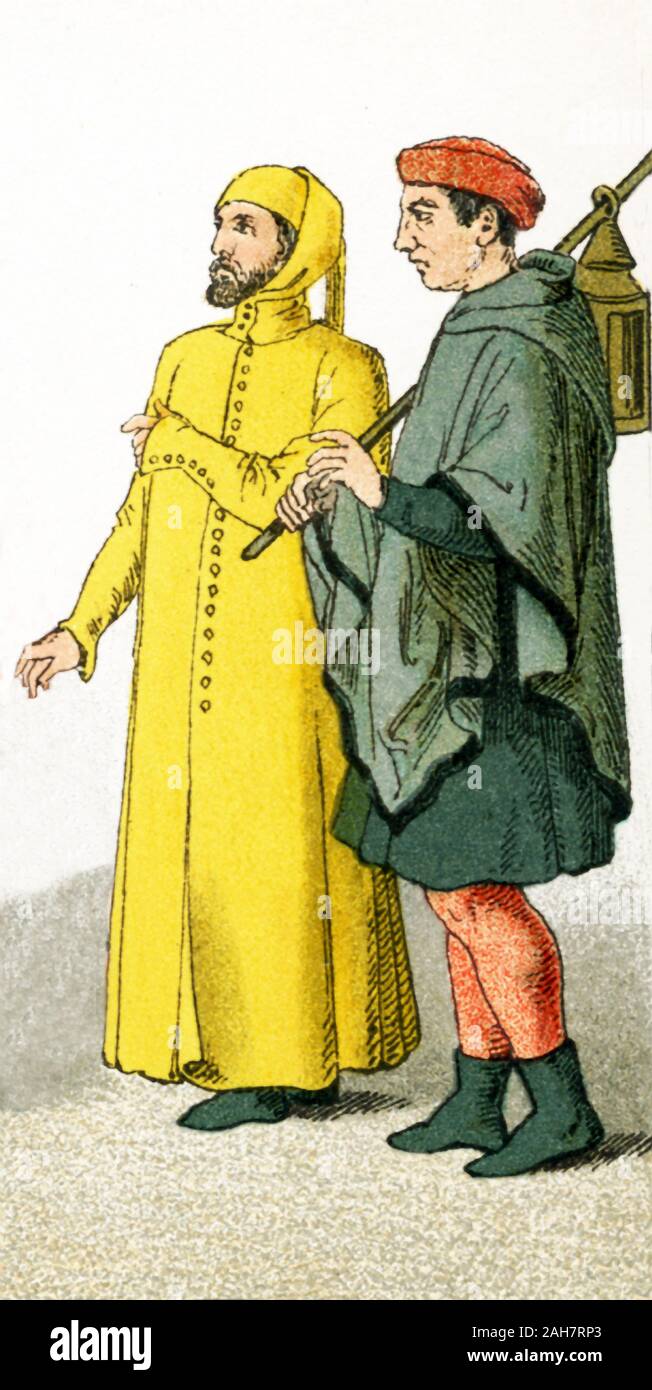 The figures in this image represent an Italian citizen (left) and peasant in the A.D. 1300s. The illustration dates to 1882. Stock Photohttps://www.alamy.com/image-license-details/?v=1https://www.alamy.com/the-figures-in-this-image-represent-an-italian-citizen-left-and-peasant-in-the-ad-1300s-the-illustration-dates-to-1882-image337618459.html
The figures in this image represent an Italian citizen (left) and peasant in the A.D. 1300s. The illustration dates to 1882. Stock Photohttps://www.alamy.com/image-license-details/?v=1https://www.alamy.com/the-figures-in-this-image-represent-an-italian-citizen-left-and-peasant-in-the-ad-1300s-the-illustration-dates-to-1882-image337618459.htmlRF2AH7RP3–The figures in this image represent an Italian citizen (left) and peasant in the A.D. 1300s. The illustration dates to 1882.
 Watched by his horrified wife, a man called Julian commits murder. Believing the couple lying in bed to be his wife and her lover, Julian stabs his mother, having already inflicted a mortal wound on his father. Late 1300s fresco in a Romanesque church, the Chiesa di Santa Maria del Tiglio, built in the 1100s beside Lake Como at Gravedona, Lombardy, Italy. Julian gained absolution for the parricide, redeemed himself by founding hospitals for the poor, and was later canonised as St Julian the Hospitaller. Stock Photohttps://www.alamy.com/image-license-details/?v=1https://www.alamy.com/watched-by-his-horrified-wife-a-man-called-julian-commits-murder-believing-the-couple-lying-in-bed-to-be-his-wife-and-her-lover-julian-stabs-his-mother-having-already-inflicted-a-mortal-wound-on-his-father-late-1300s-fresco-in-a-romanesque-church-the-chiesa-di-santa-maria-del-tiglio-built-in-the-1100s-beside-lake-como-at-gravedona-lombardy-italy-julian-gained-absolution-for-the-parricide-redeemed-himself-by-founding-hospitals-for-the-poor-and-was-later-canonised-as-st-julian-the-hospitaller-image414917949.html
Watched by his horrified wife, a man called Julian commits murder. Believing the couple lying in bed to be his wife and her lover, Julian stabs his mother, having already inflicted a mortal wound on his father. Late 1300s fresco in a Romanesque church, the Chiesa di Santa Maria del Tiglio, built in the 1100s beside Lake Como at Gravedona, Lombardy, Italy. Julian gained absolution for the parricide, redeemed himself by founding hospitals for the poor, and was later canonised as St Julian the Hospitaller. Stock Photohttps://www.alamy.com/image-license-details/?v=1https://www.alamy.com/watched-by-his-horrified-wife-a-man-called-julian-commits-murder-believing-the-couple-lying-in-bed-to-be-his-wife-and-her-lover-julian-stabs-his-mother-having-already-inflicted-a-mortal-wound-on-his-father-late-1300s-fresco-in-a-romanesque-church-the-chiesa-di-santa-maria-del-tiglio-built-in-the-1100s-beside-lake-como-at-gravedona-lombardy-italy-julian-gained-absolution-for-the-parricide-redeemed-himself-by-founding-hospitals-for-the-poor-and-was-later-canonised-as-st-julian-the-hospitaller-image414917949.htmlRF2F31425–Watched by his horrified wife, a man called Julian commits murder. Believing the couple lying in bed to be his wife and her lover, Julian stabs his mother, having already inflicted a mortal wound on his father. Late 1300s fresco in a Romanesque church, the Chiesa di Santa Maria del Tiglio, built in the 1100s beside Lake Como at Gravedona, Lombardy, Italy. Julian gained absolution for the parricide, redeemed himself by founding hospitals for the poor, and was later canonised as St Julian the Hospitaller.
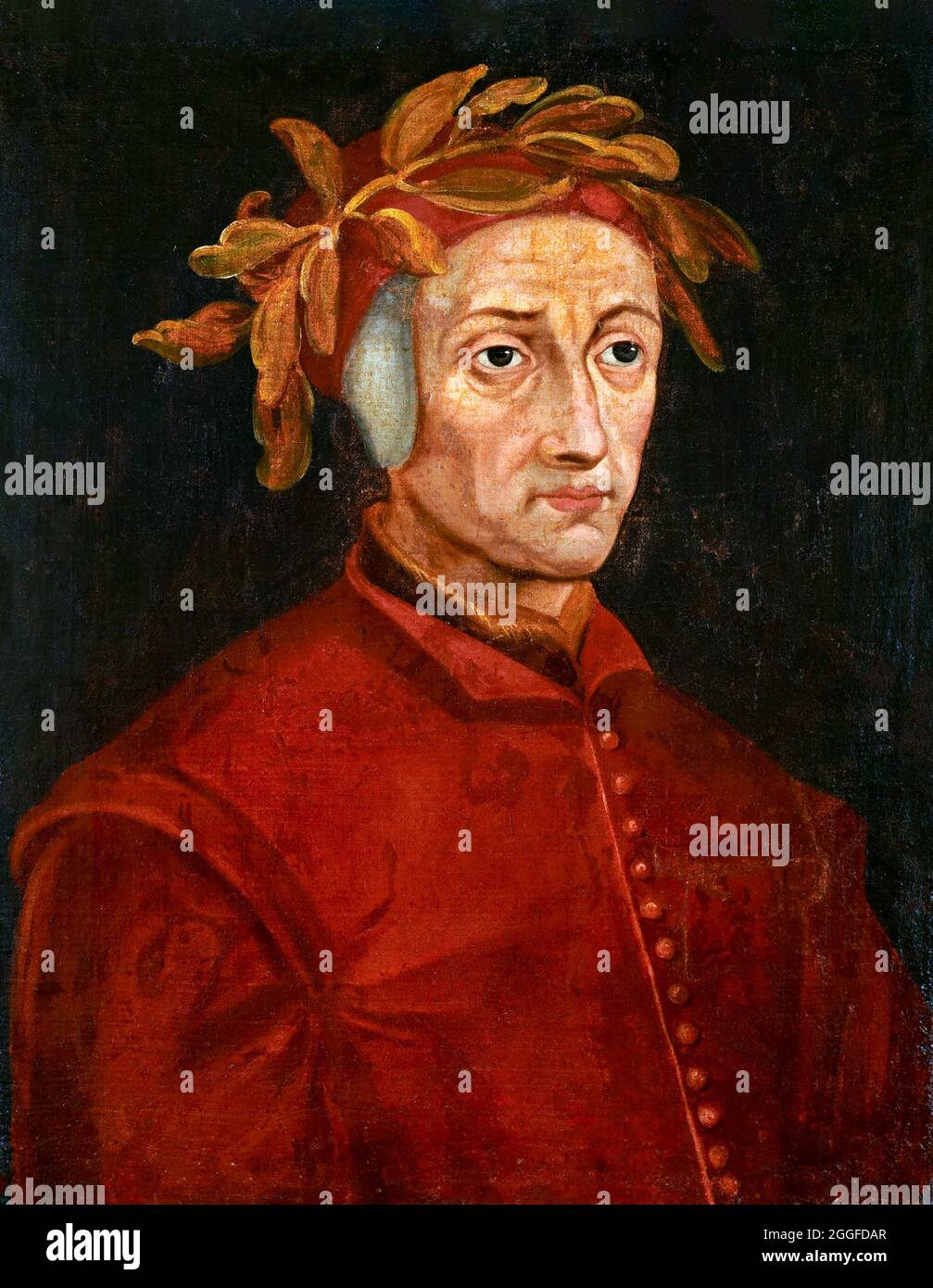 Dante. Portrait of the Italian poet and statesman, Dante Alighieri (1265-1321), British school, late 16th early 17th century Stock Photohttps://www.alamy.com/image-license-details/?v=1https://www.alamy.com/dante-portrait-of-the-italian-poet-and-statesman-dante-alighieri-1265-1321-british-school-late-16th-early-17th-century-image440433471.html
Dante. Portrait of the Italian poet and statesman, Dante Alighieri (1265-1321), British school, late 16th early 17th century Stock Photohttps://www.alamy.com/image-license-details/?v=1https://www.alamy.com/dante-portrait-of-the-italian-poet-and-statesman-dante-alighieri-1265-1321-british-school-late-16th-early-17th-century-image440433471.htmlRM2GGFDAR–Dante. Portrait of the Italian poet and statesman, Dante Alighieri (1265-1321), British school, late 16th early 17th century
 vase with horses on water design, Yuan dynasty, Yuan dynasty, late 1300s, porcelain with underglaze blue, H: 11-5/8 in., 29.5 cm., Asian Art, Reimagined by Gibon, design of warm cheerful glowing of brightness and light rays radiance. Classic art reinvented with a modern twist. Photography inspired by futurism, embracing dynamic energy of modern technology, movement, speed and revolutionize culture. Stock Photohttps://www.alamy.com/image-license-details/?v=1https://www.alamy.com/vase-with-horses-on-water-design-yuan-dynasty-yuan-dynasty-late-1300s-porcelain-with-underglaze-blue-h-11-58-in-295-cm-asian-art-reimagined-by-gibon-design-of-warm-cheerful-glowing-of-brightness-and-light-rays-radiance-classic-art-reinvented-with-a-modern-twist-photography-inspired-by-futurism-embracing-dynamic-energy-of-modern-technology-movement-speed-and-revolutionize-culture-image349853946.html
vase with horses on water design, Yuan dynasty, Yuan dynasty, late 1300s, porcelain with underglaze blue, H: 11-5/8 in., 29.5 cm., Asian Art, Reimagined by Gibon, design of warm cheerful glowing of brightness and light rays radiance. Classic art reinvented with a modern twist. Photography inspired by futurism, embracing dynamic energy of modern technology, movement, speed and revolutionize culture. Stock Photohttps://www.alamy.com/image-license-details/?v=1https://www.alamy.com/vase-with-horses-on-water-design-yuan-dynasty-yuan-dynasty-late-1300s-porcelain-with-underglaze-blue-h-11-58-in-295-cm-asian-art-reimagined-by-gibon-design-of-warm-cheerful-glowing-of-brightness-and-light-rays-radiance-classic-art-reinvented-with-a-modern-twist-photography-inspired-by-futurism-embracing-dynamic-energy-of-modern-technology-movement-speed-and-revolutionize-culture-image349853946.htmlRF2B9567P–vase with horses on water design, Yuan dynasty, Yuan dynasty, late 1300s, porcelain with underglaze blue, H: 11-5/8 in., 29.5 cm., Asian Art, Reimagined by Gibon, design of warm cheerful glowing of brightness and light rays radiance. Classic art reinvented with a modern twist. Photography inspired by futurism, embracing dynamic energy of modern technology, movement, speed and revolutionize culture.
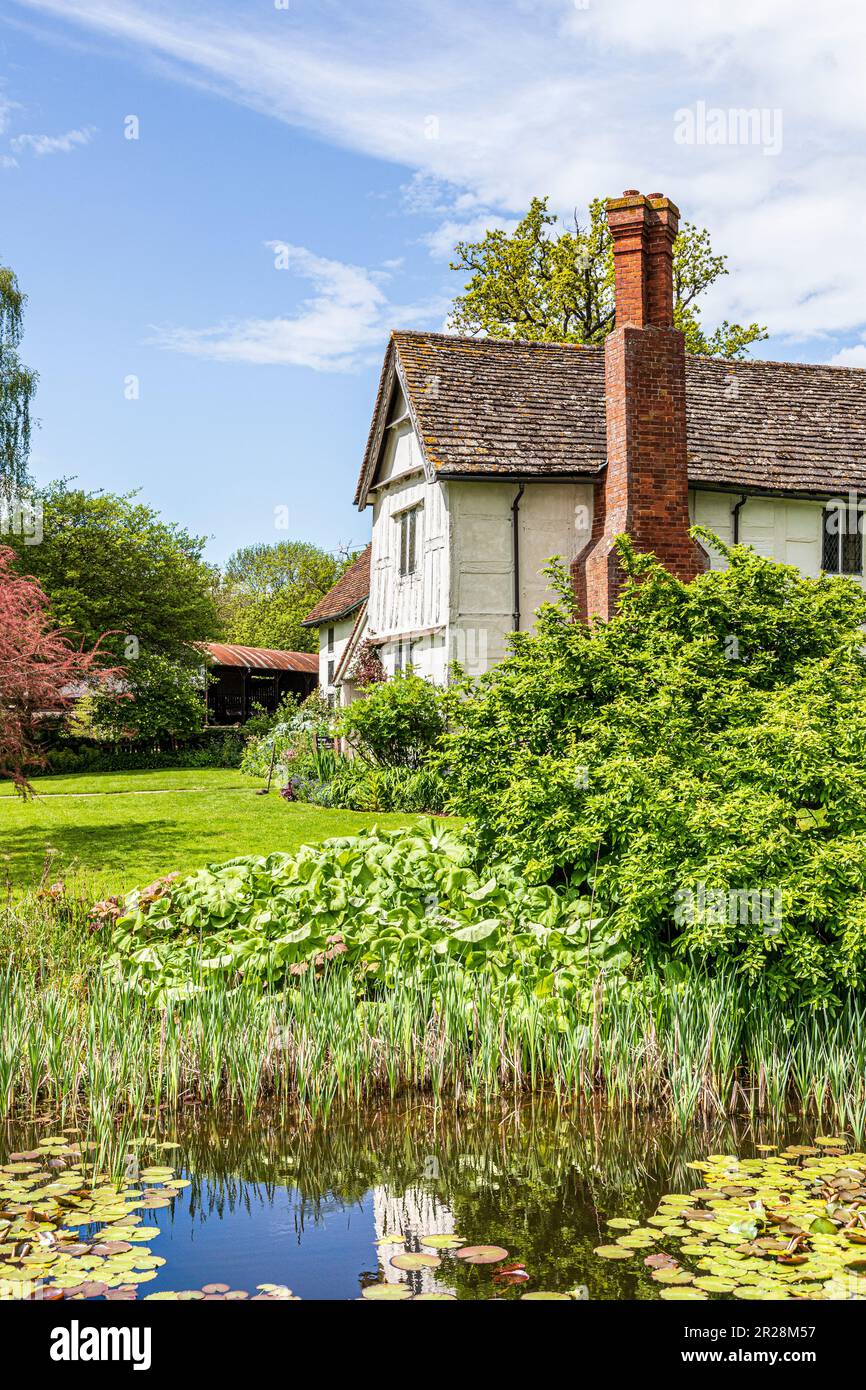 The moated late 14th or early 15th century timber framed Lower Brockhampton Manor House near Bromyard, Herefordshire, England UK Stock Photohttps://www.alamy.com/image-license-details/?v=1https://www.alamy.com/the-moated-late-14th-or-early-15th-century-timber-framed-lower-brockhampton-manor-house-near-bromyard-herefordshire-england-uk-image552152531.html
The moated late 14th or early 15th century timber framed Lower Brockhampton Manor House near Bromyard, Herefordshire, England UK Stock Photohttps://www.alamy.com/image-license-details/?v=1https://www.alamy.com/the-moated-late-14th-or-early-15th-century-timber-framed-lower-brockhampton-manor-house-near-bromyard-herefordshire-england-uk-image552152531.htmlRM2R28M57–The moated late 14th or early 15th century timber framed Lower Brockhampton Manor House near Bromyard, Herefordshire, England UK
 Fritware tiles with inscription in thuluth script, overglaze lustre-painted, late 13th century/early 14th century, Iran Stock Photohttps://www.alamy.com/image-license-details/?v=1https://www.alamy.com/fritware-tiles-with-inscription-in-thuluth-script-overglaze-lustre-painted-late-13th-centuryearly-14th-century-iran-image356164427.html
Fritware tiles with inscription in thuluth script, overglaze lustre-painted, late 13th century/early 14th century, Iran Stock Photohttps://www.alamy.com/image-license-details/?v=1https://www.alamy.com/fritware-tiles-with-inscription-in-thuluth-script-overglaze-lustre-painted-late-13th-centuryearly-14th-century-iran-image356164427.htmlRM2BKCKA3–Fritware tiles with inscription in thuluth script, overglaze lustre-painted, late 13th century/early 14th century, Iran